EXTREMELY RARE! WWII SECRET 1943 Solomon Islands & Aleutian Islands Headquarters of the Commander in Chief Military Intelligence Report
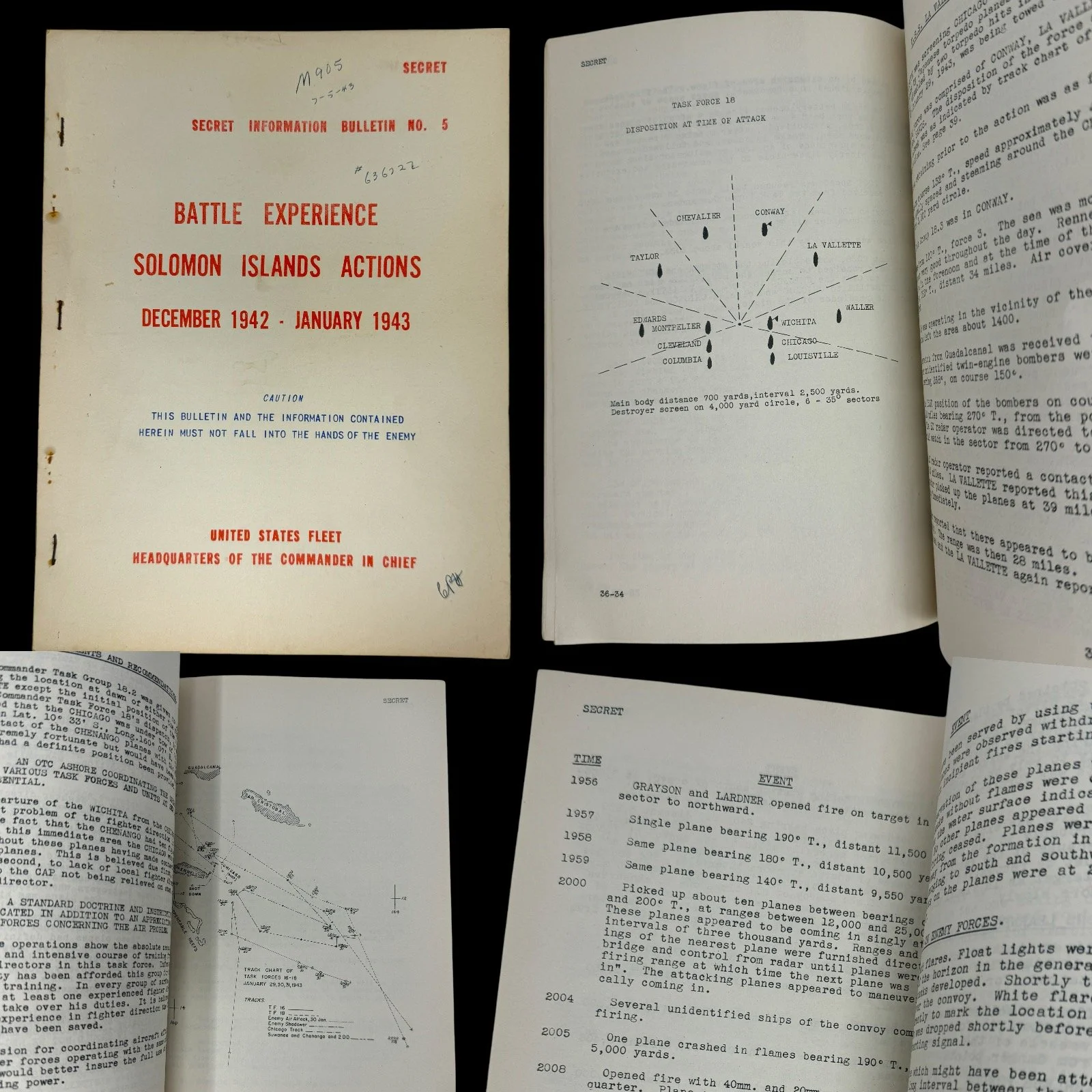
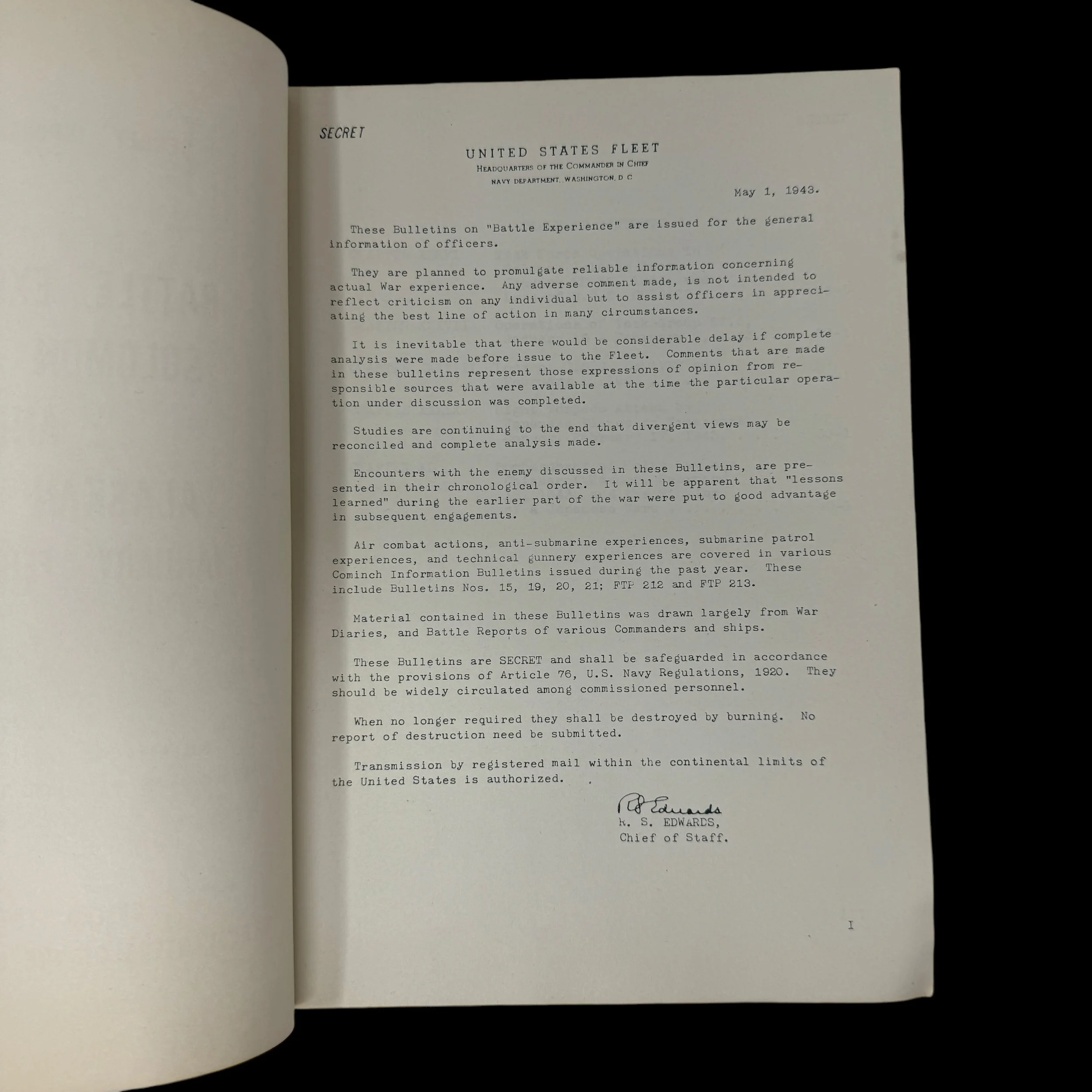
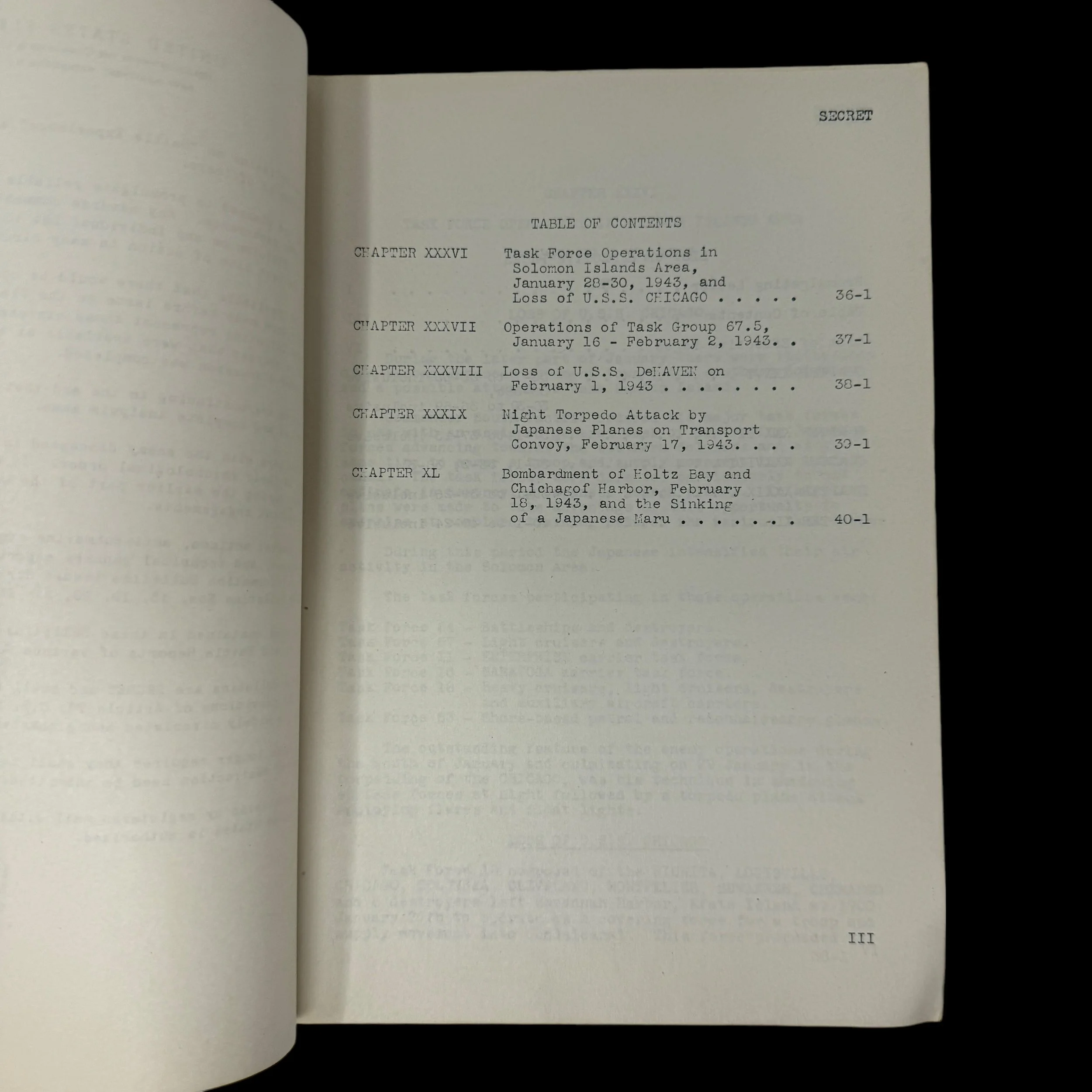
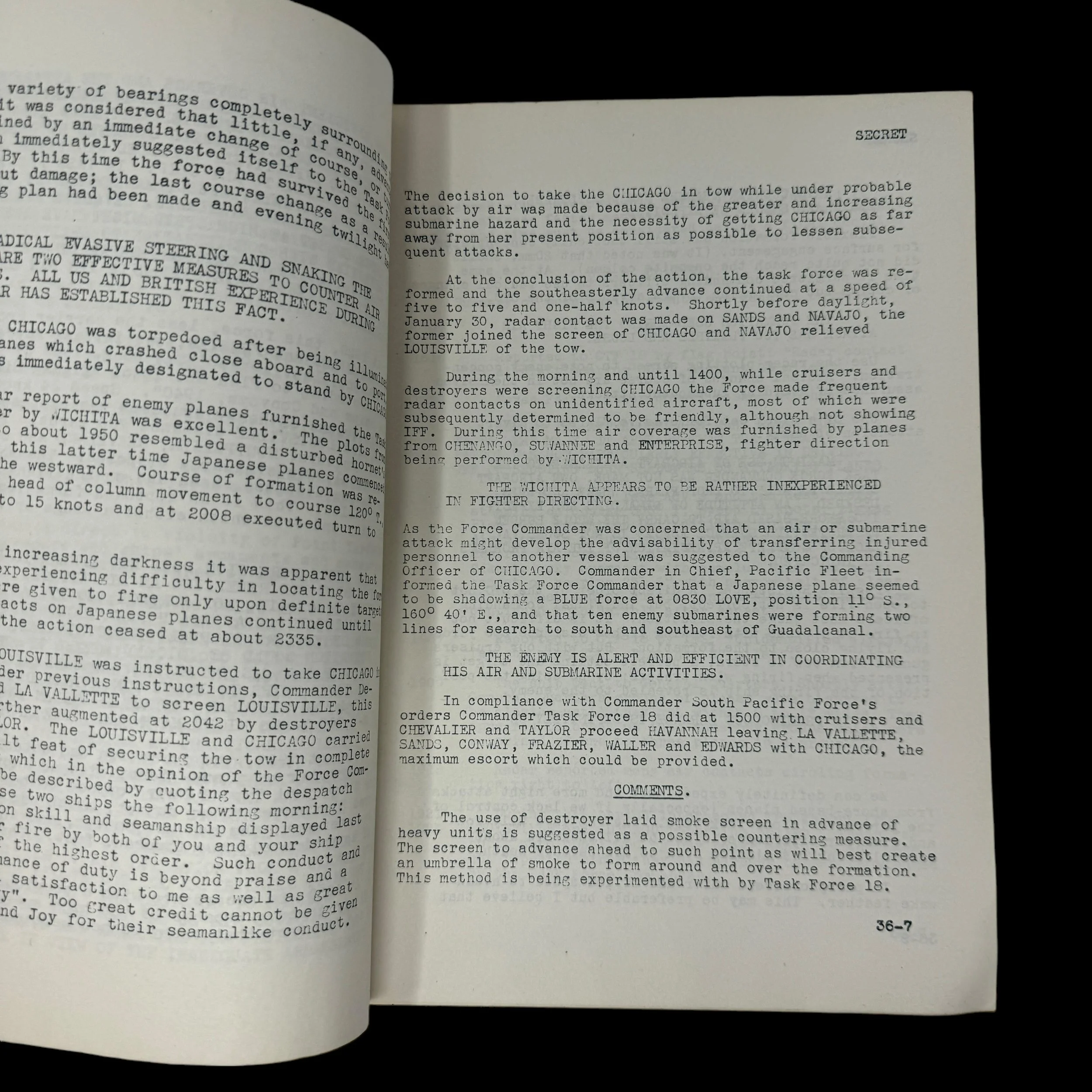

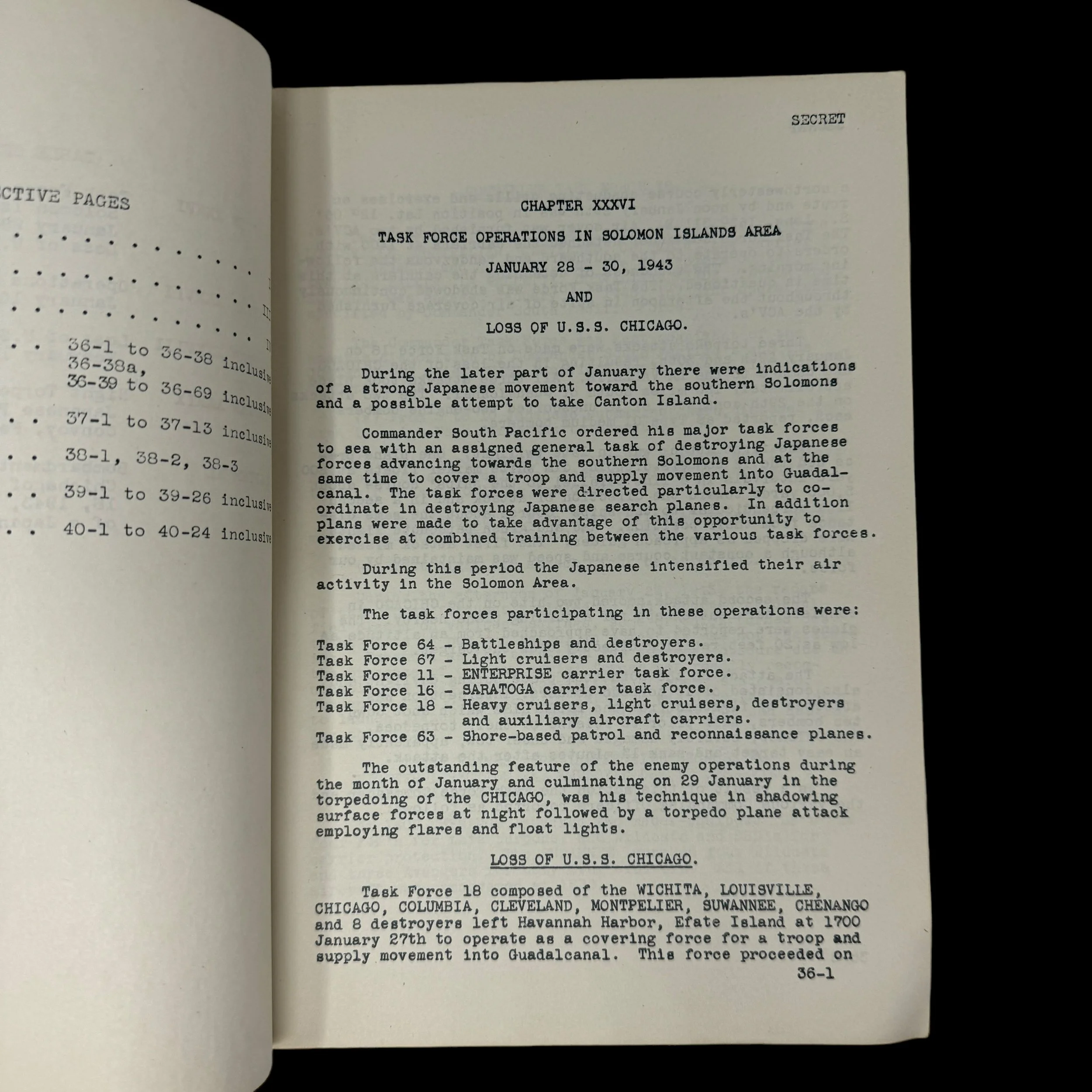

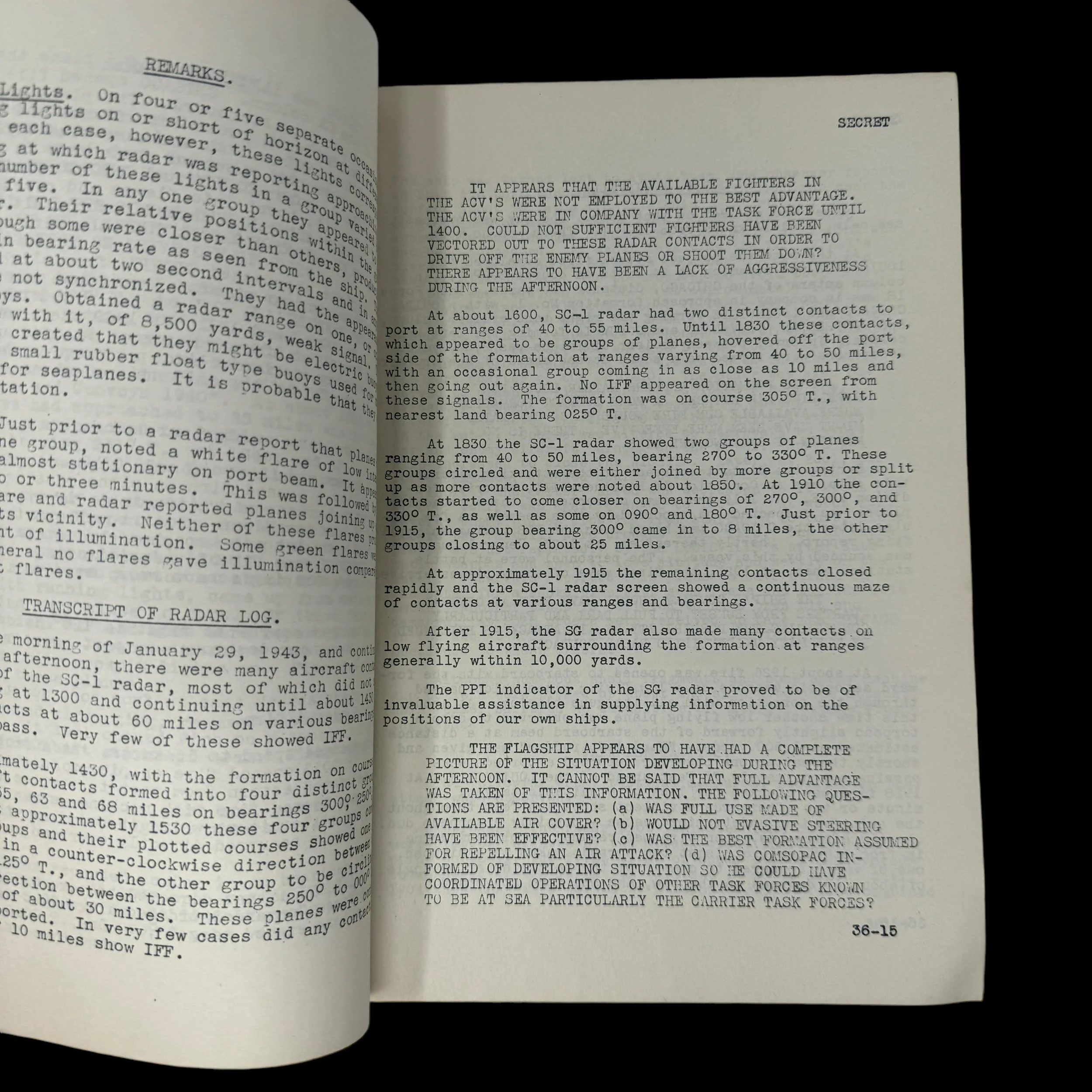
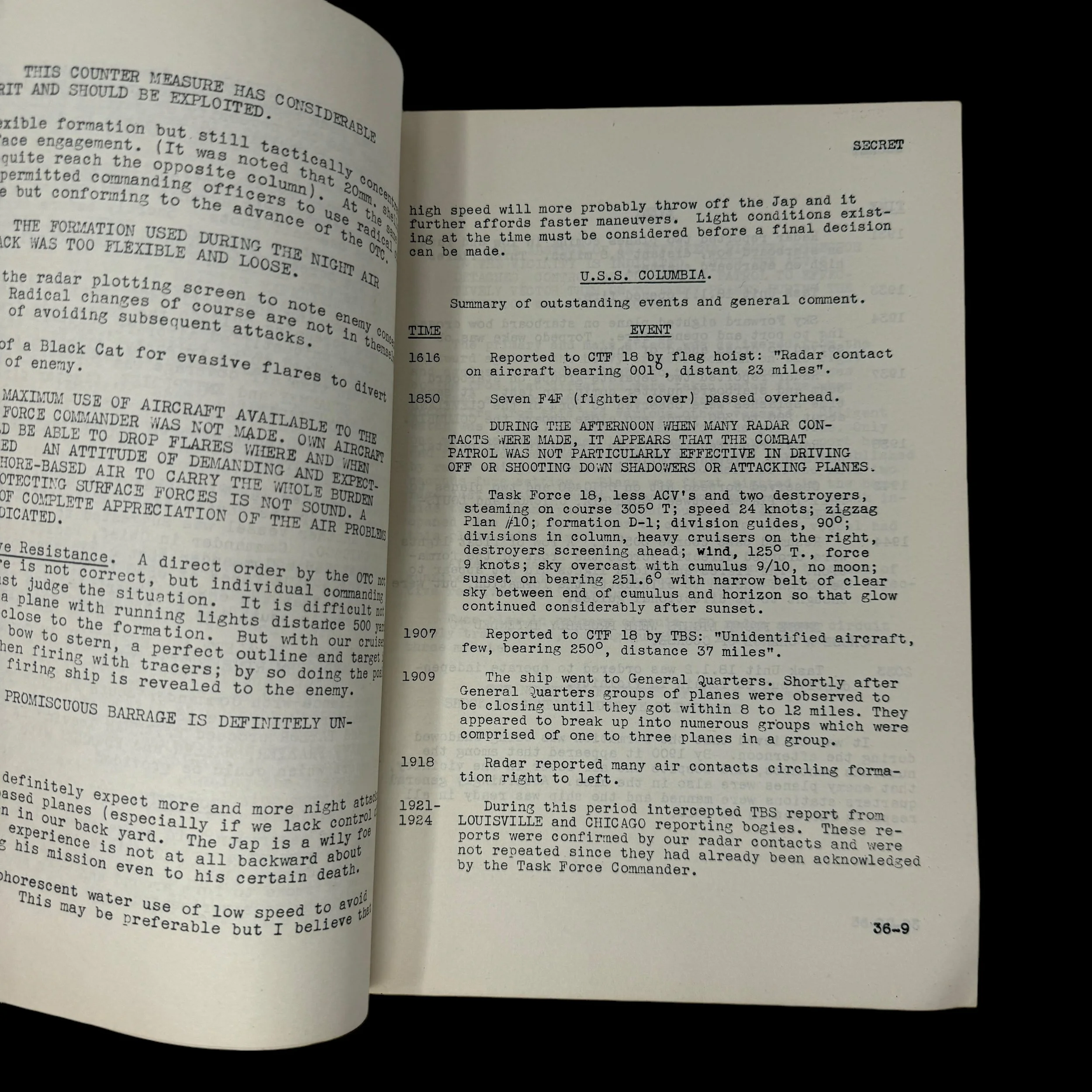

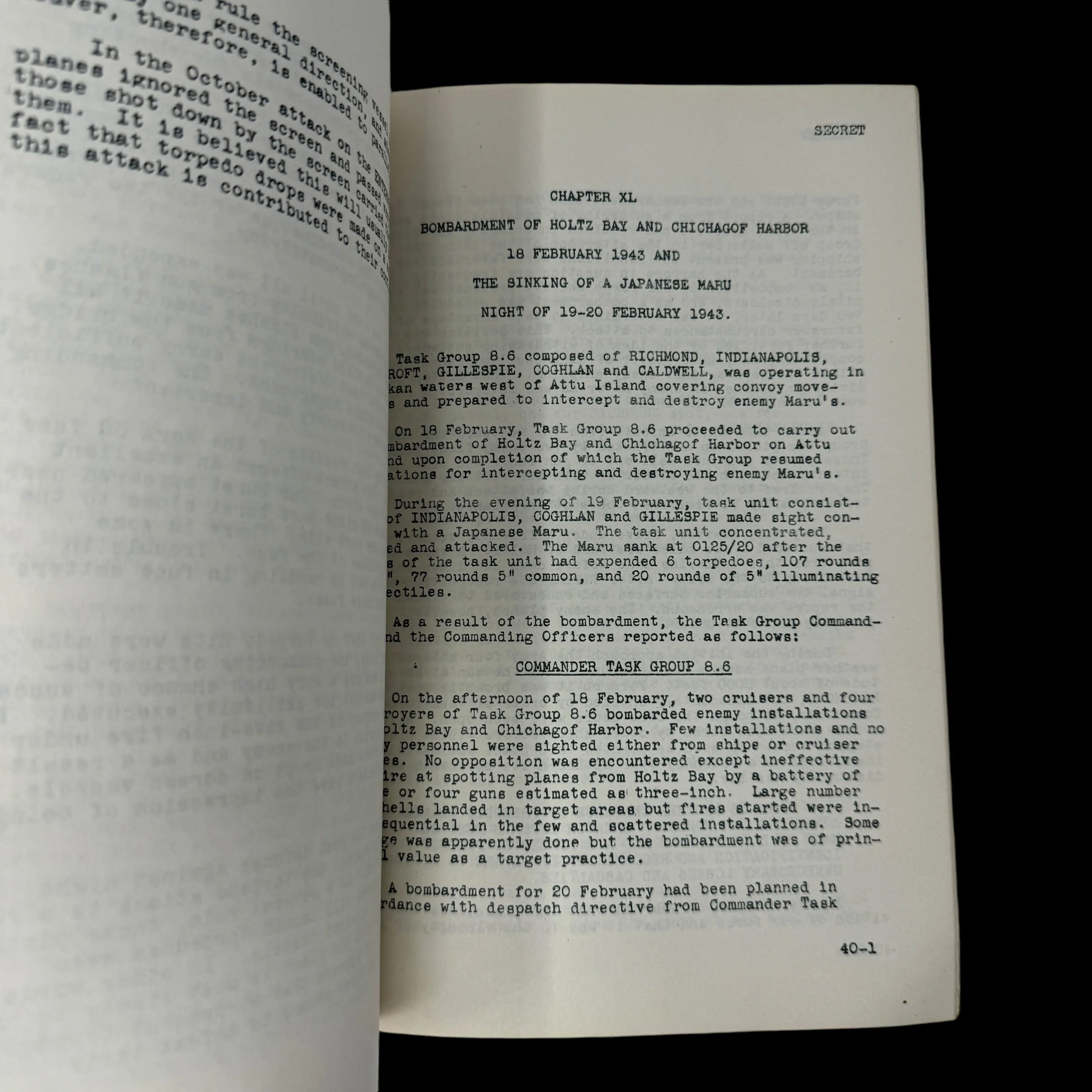
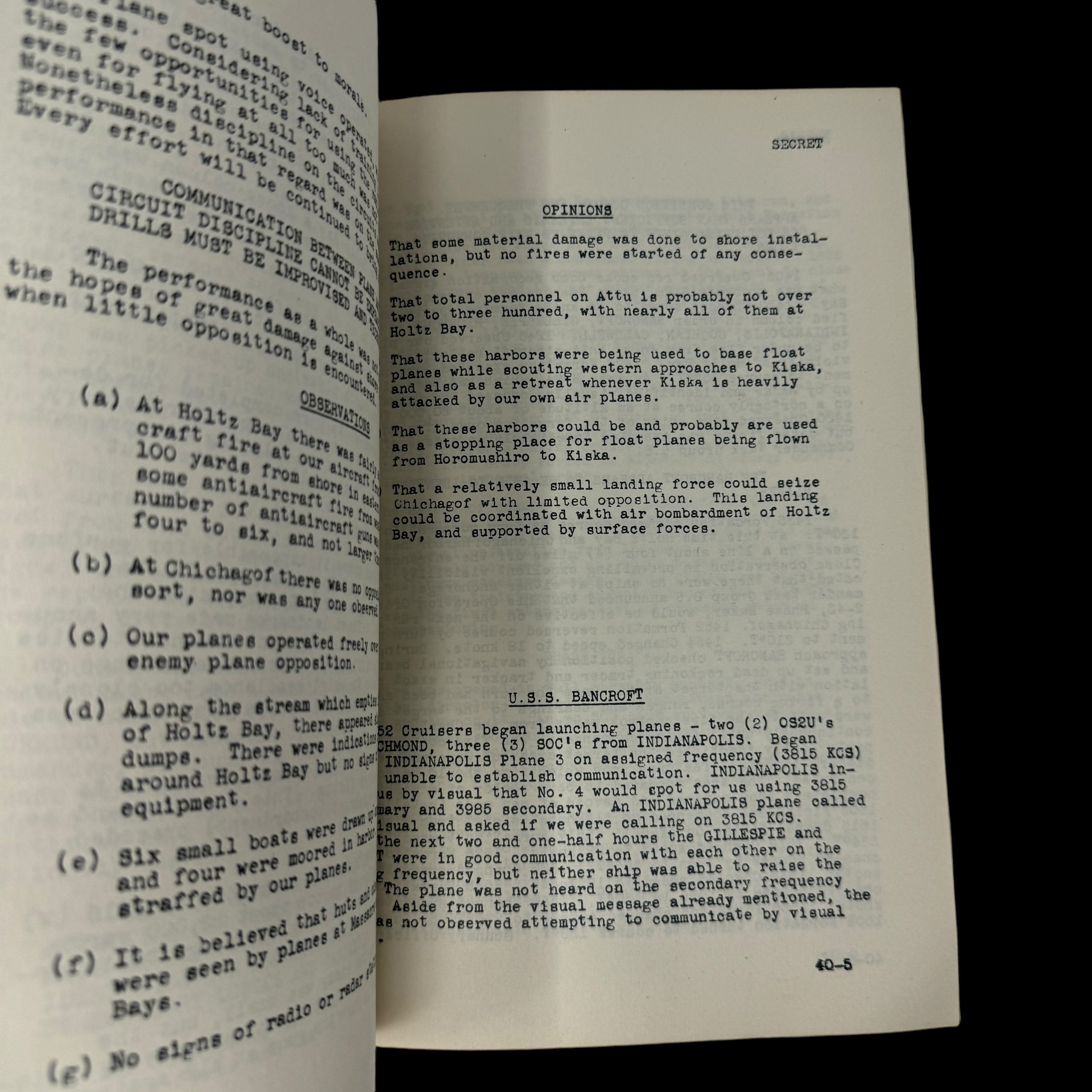
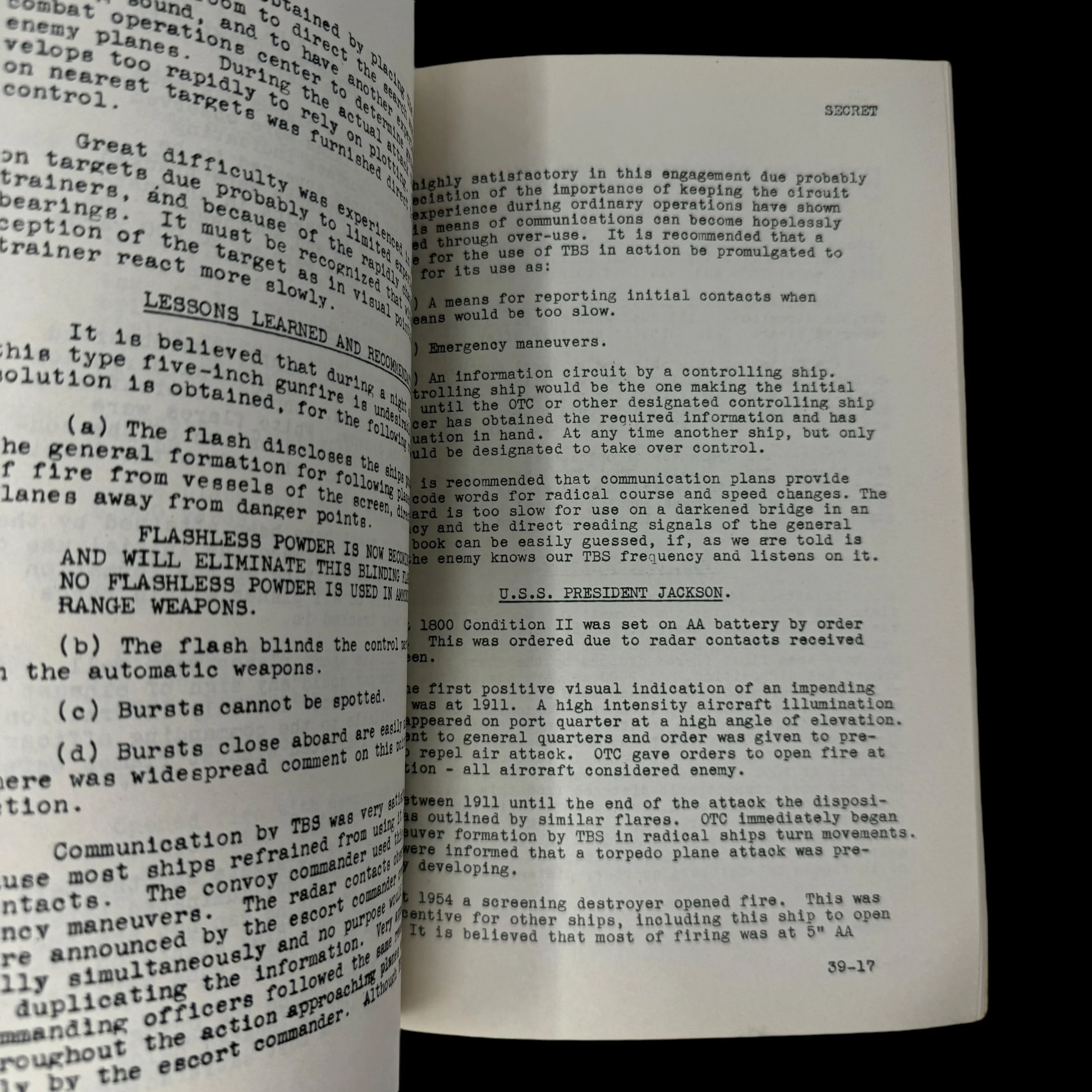
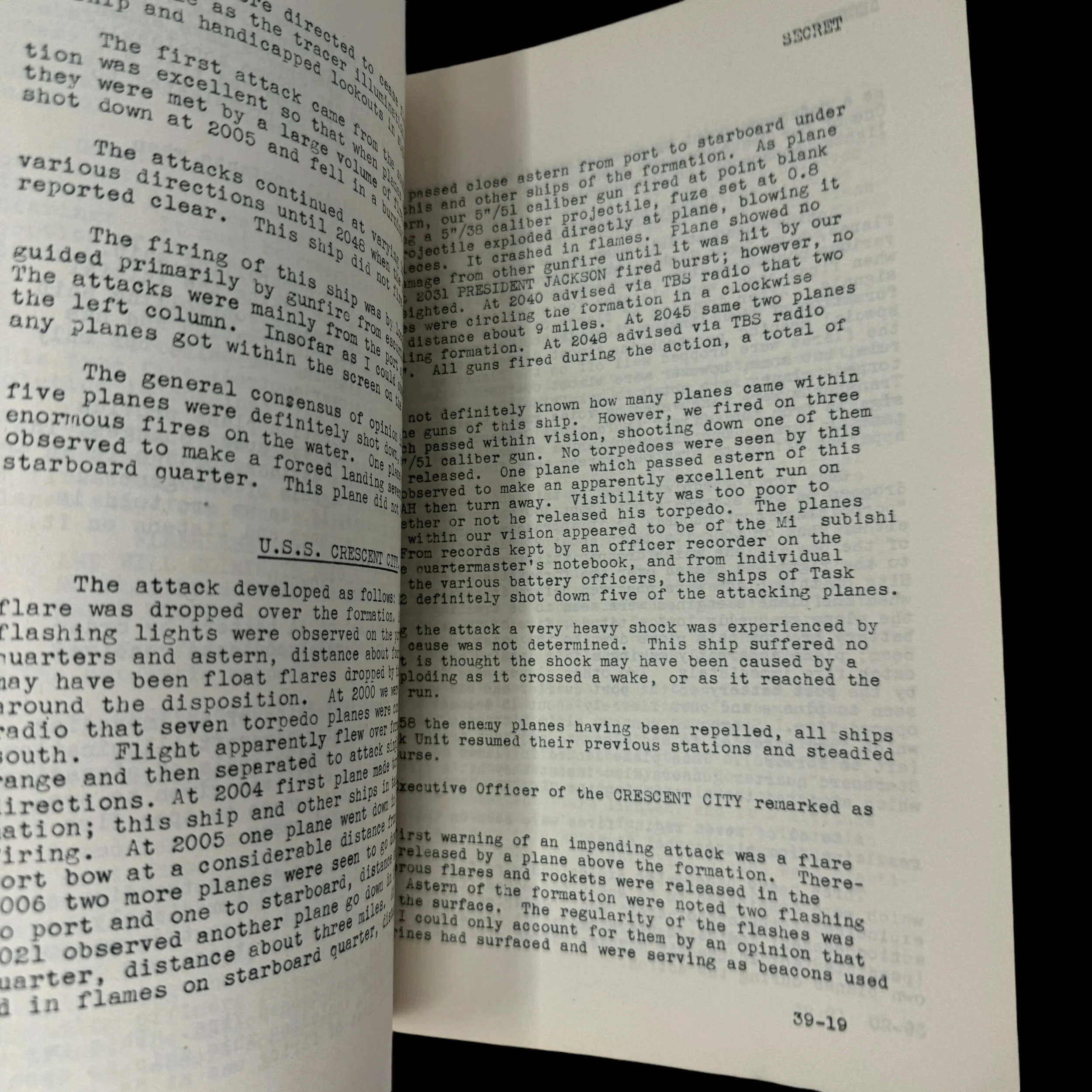

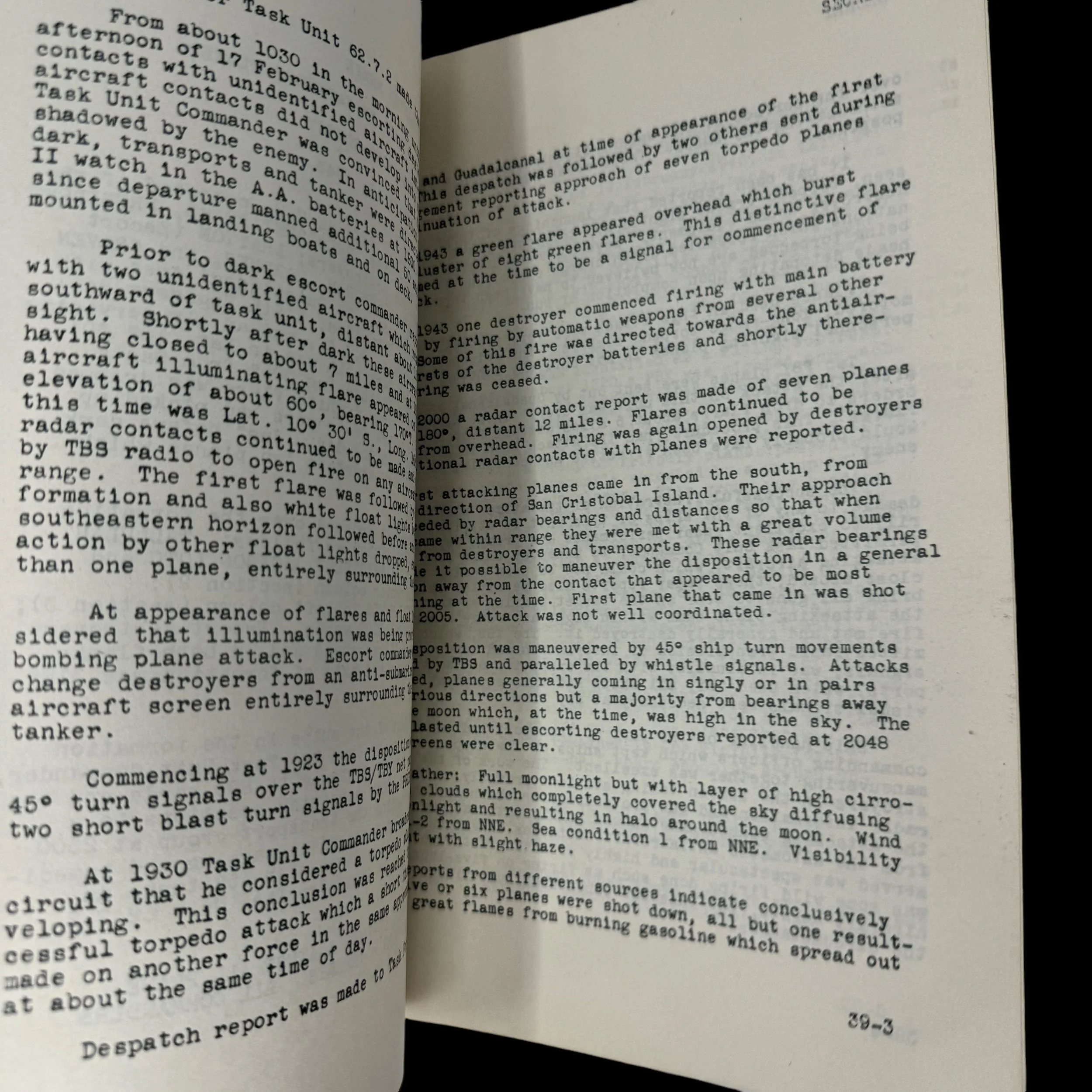
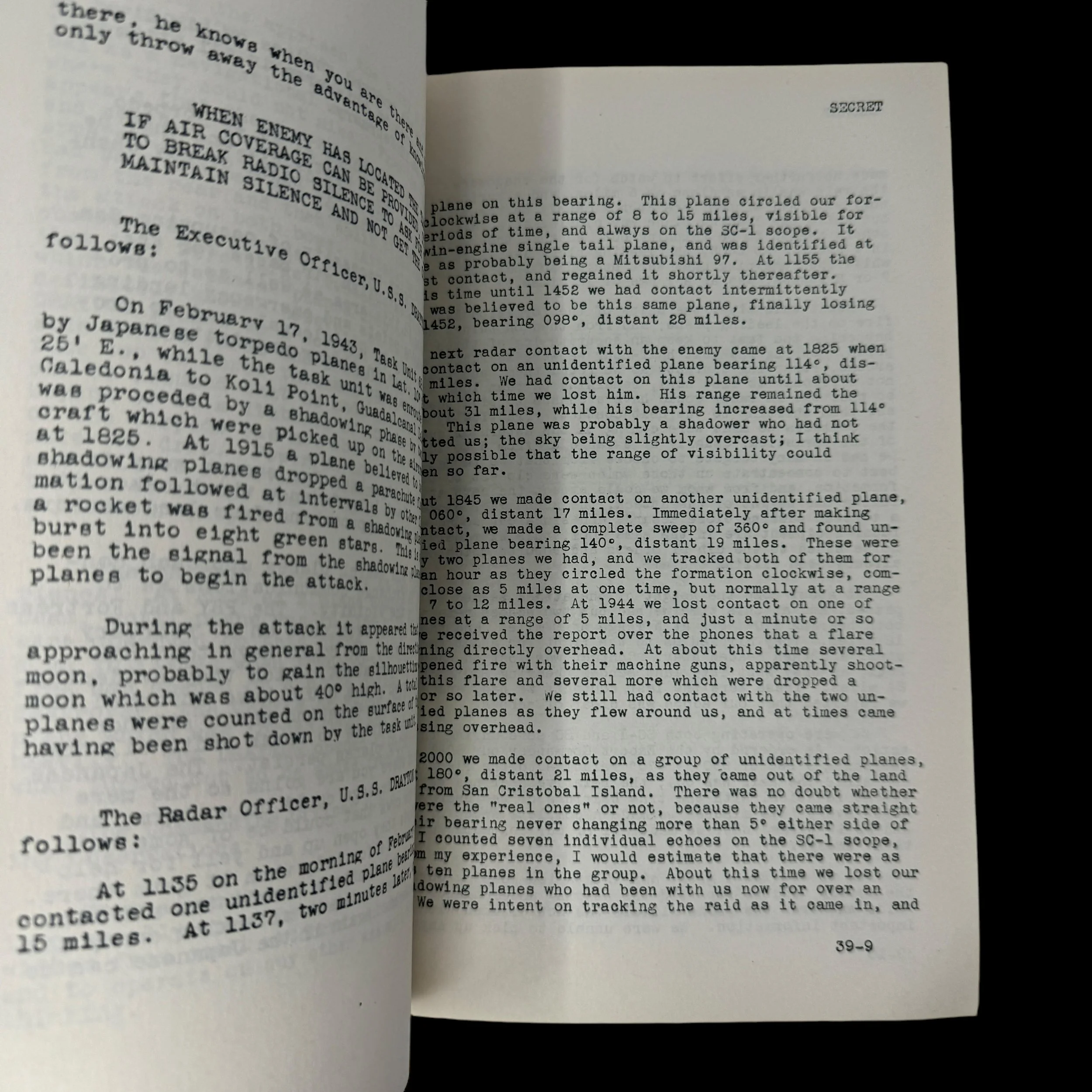
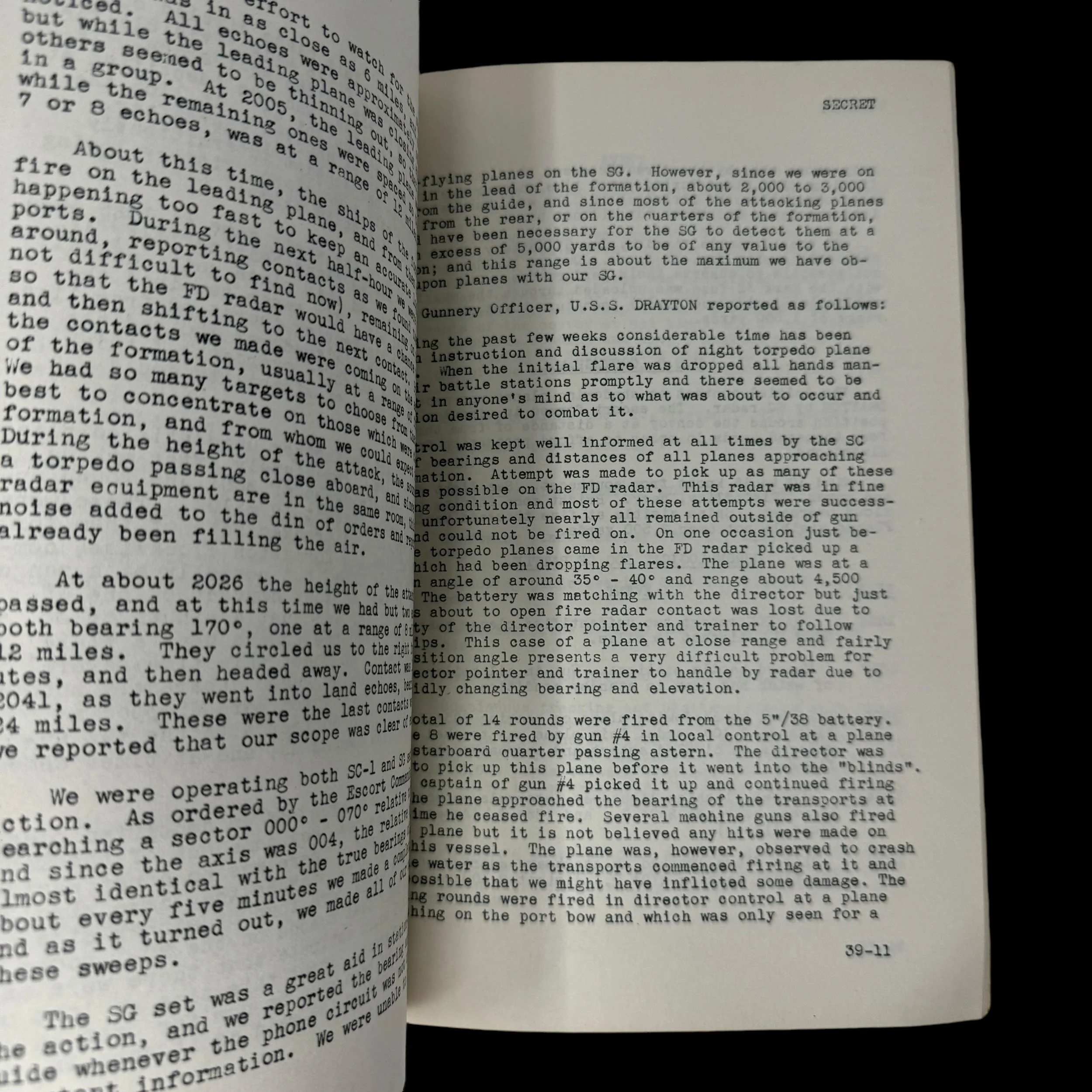
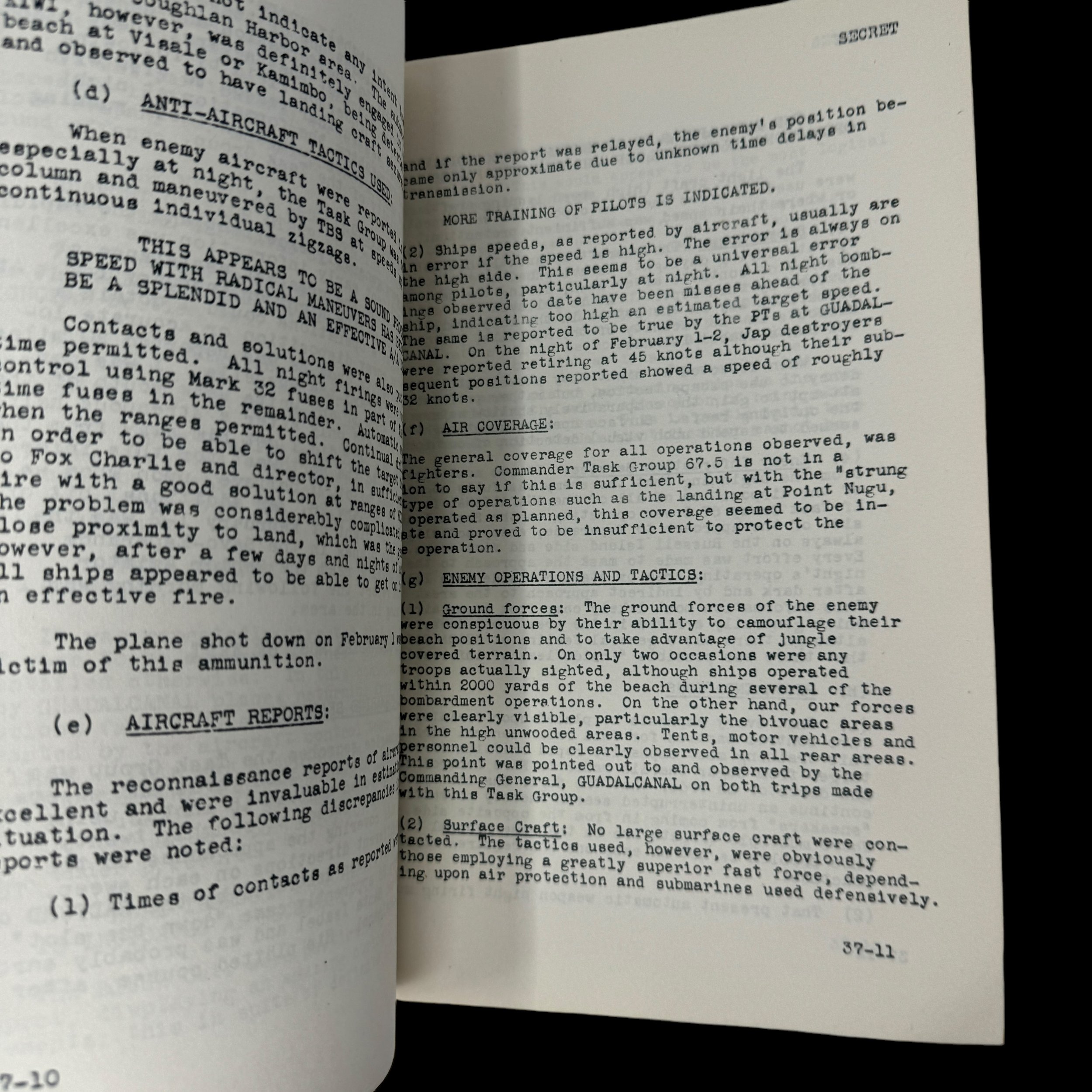
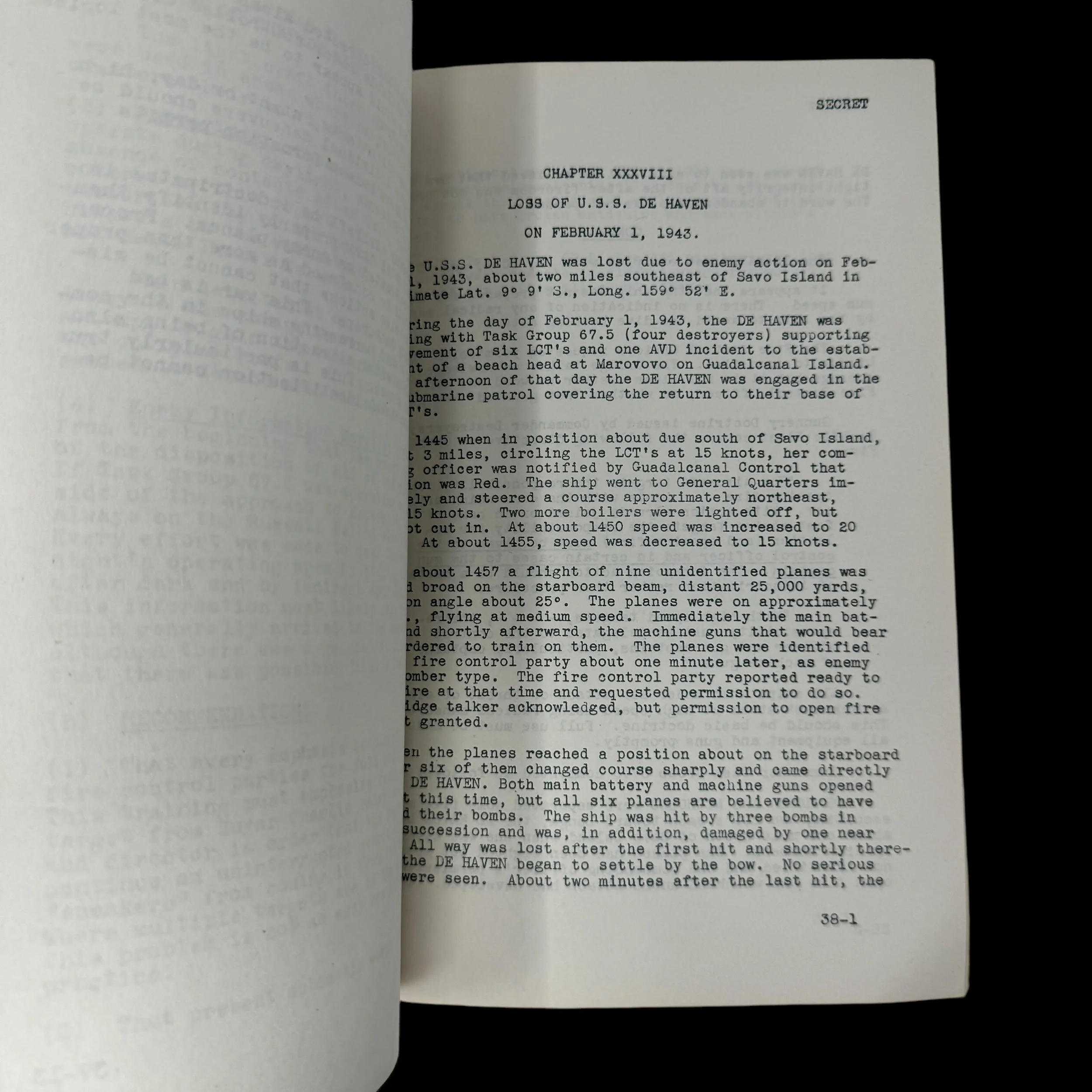
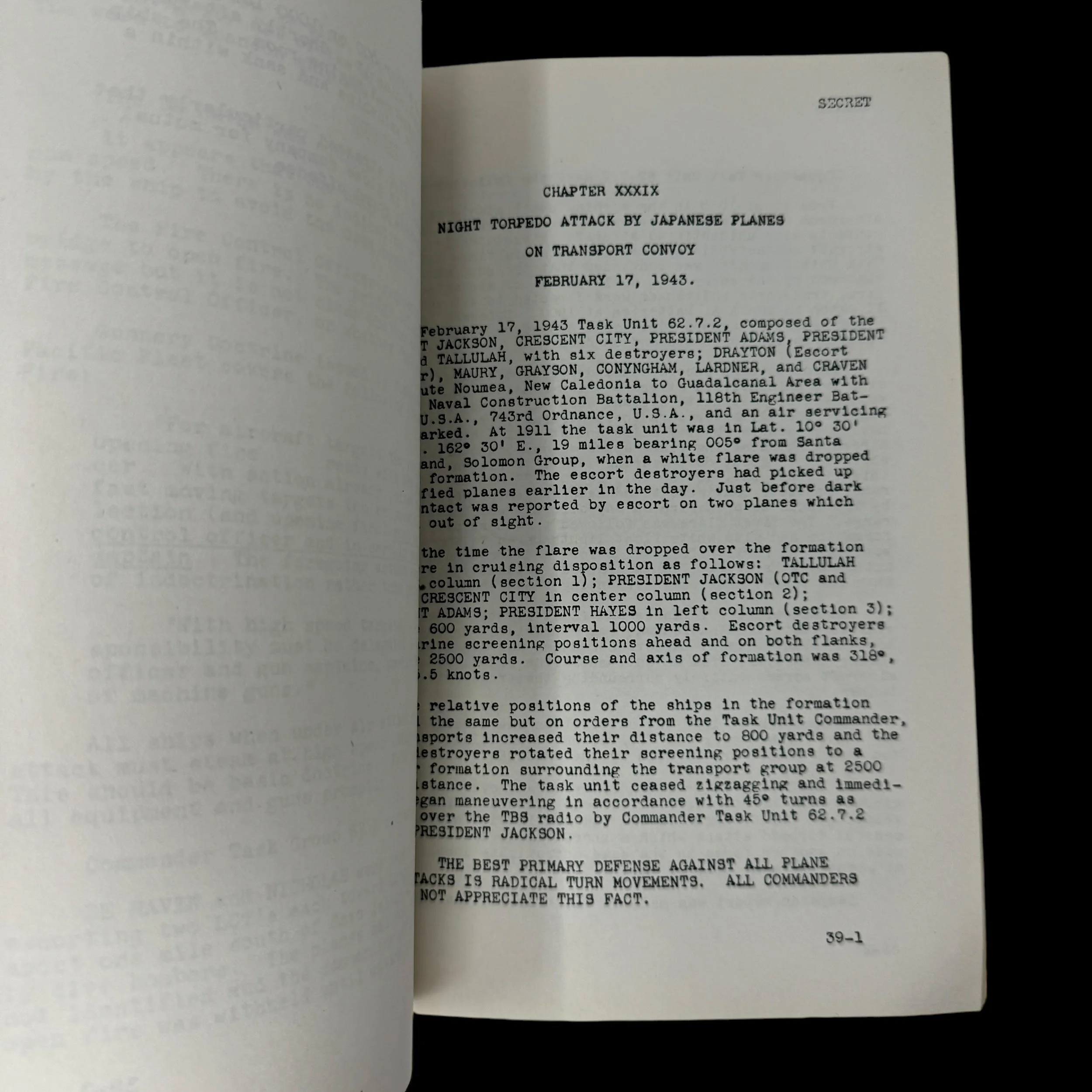
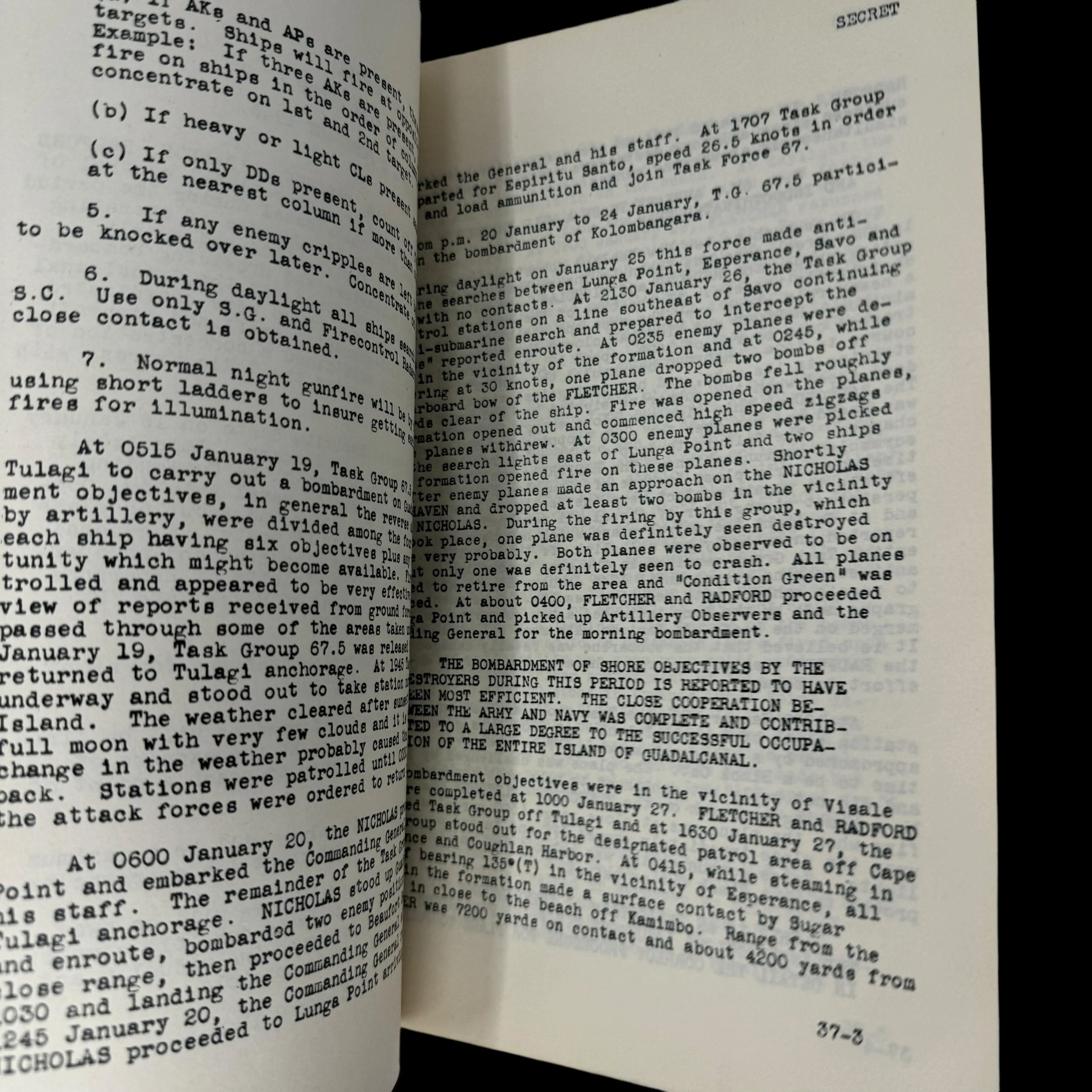
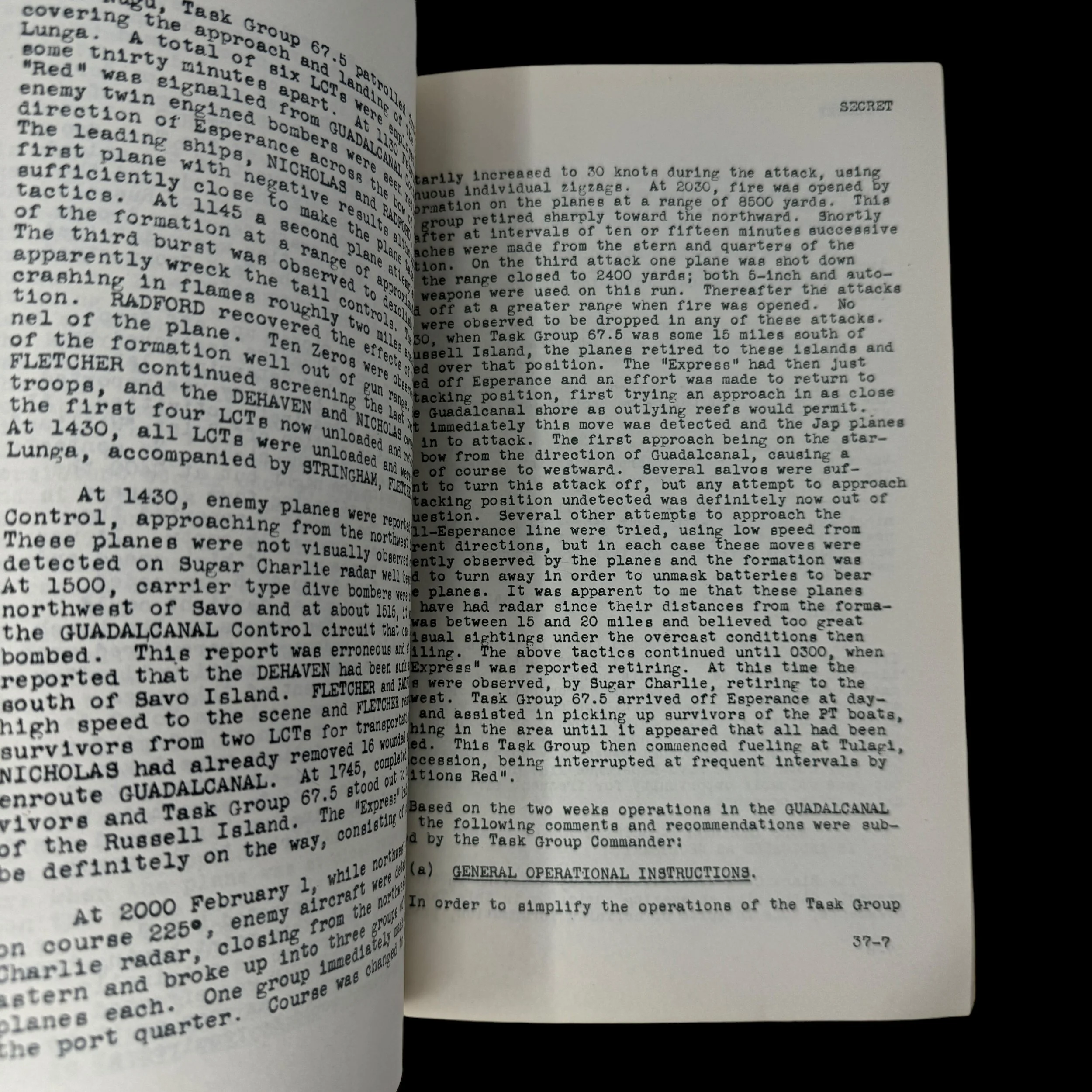

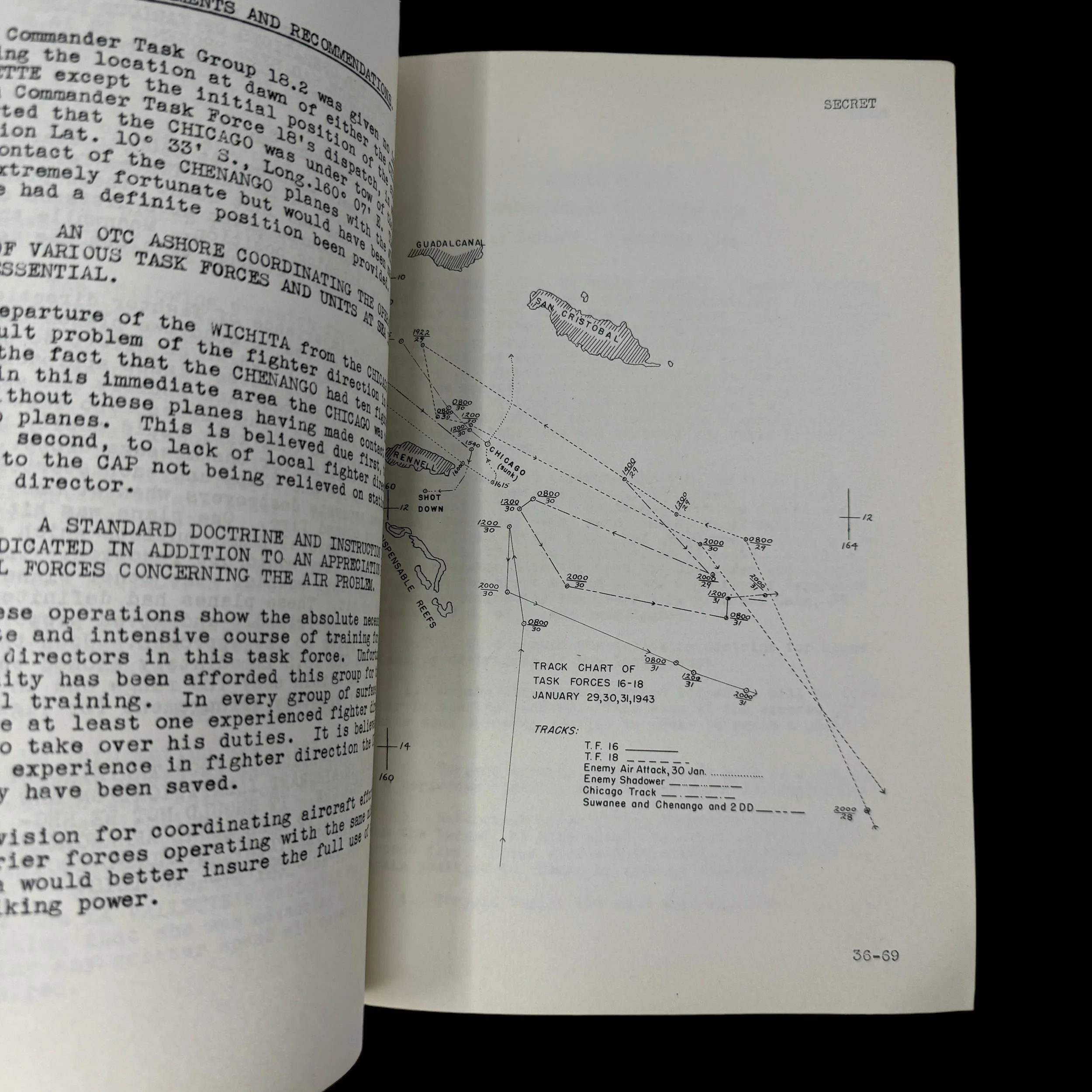
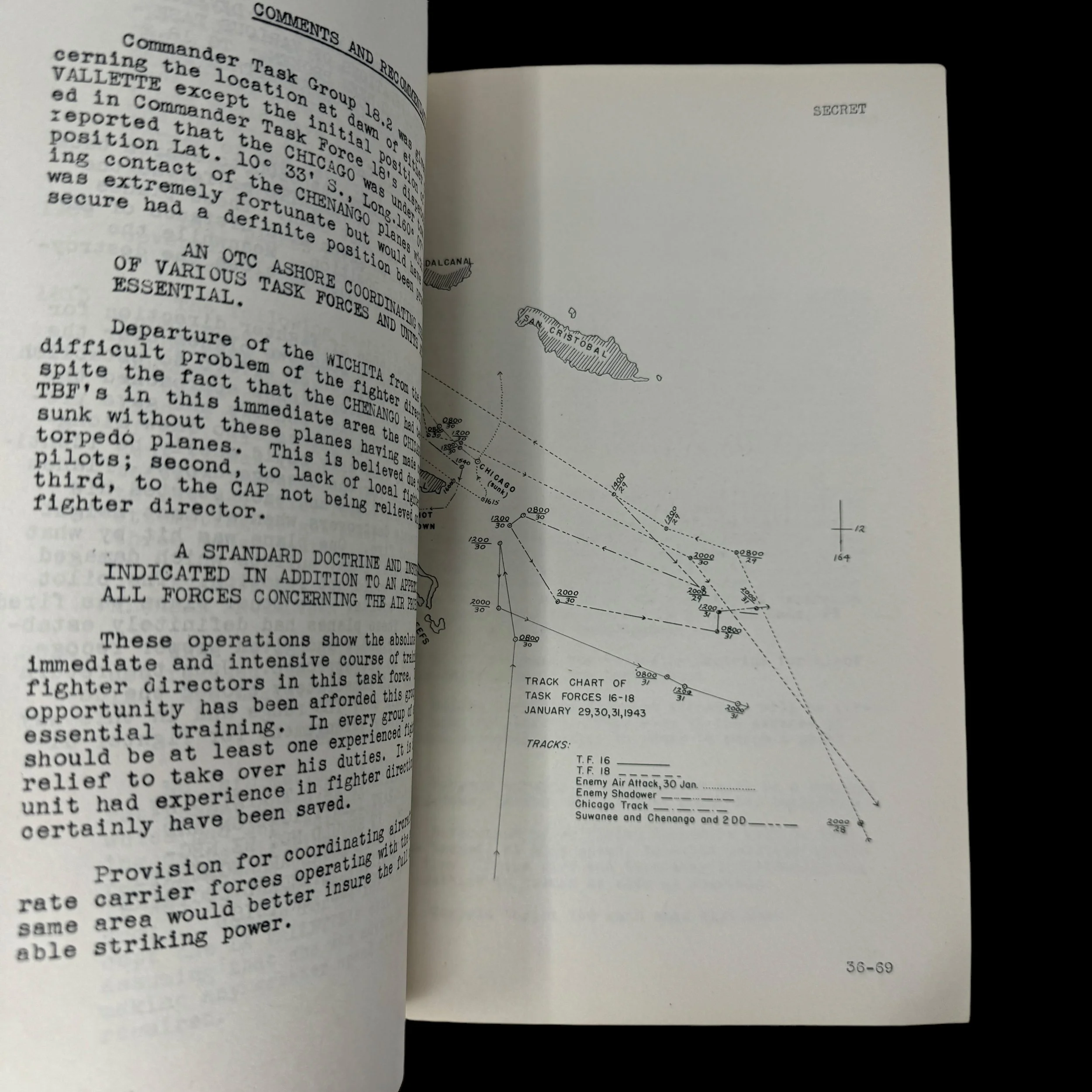
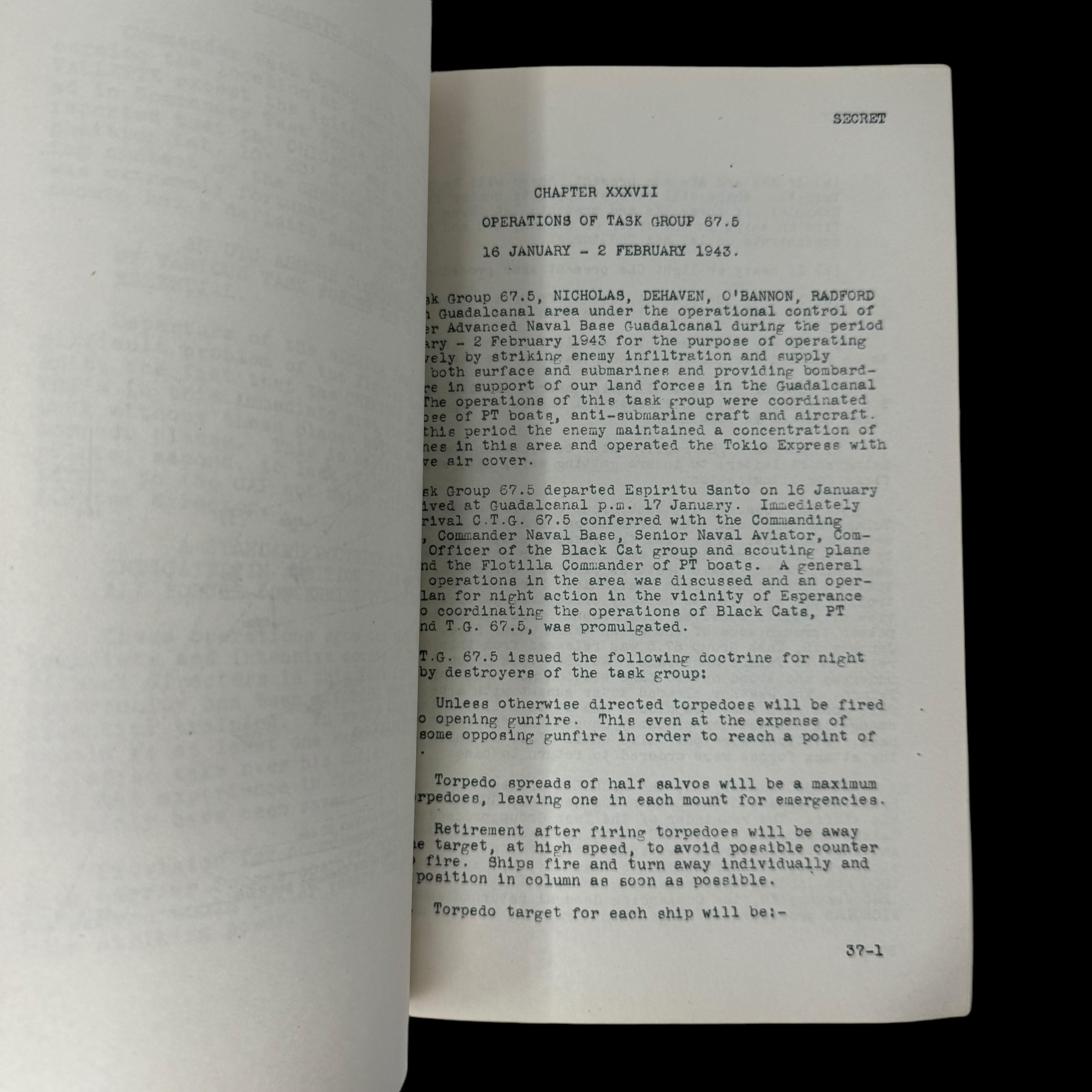
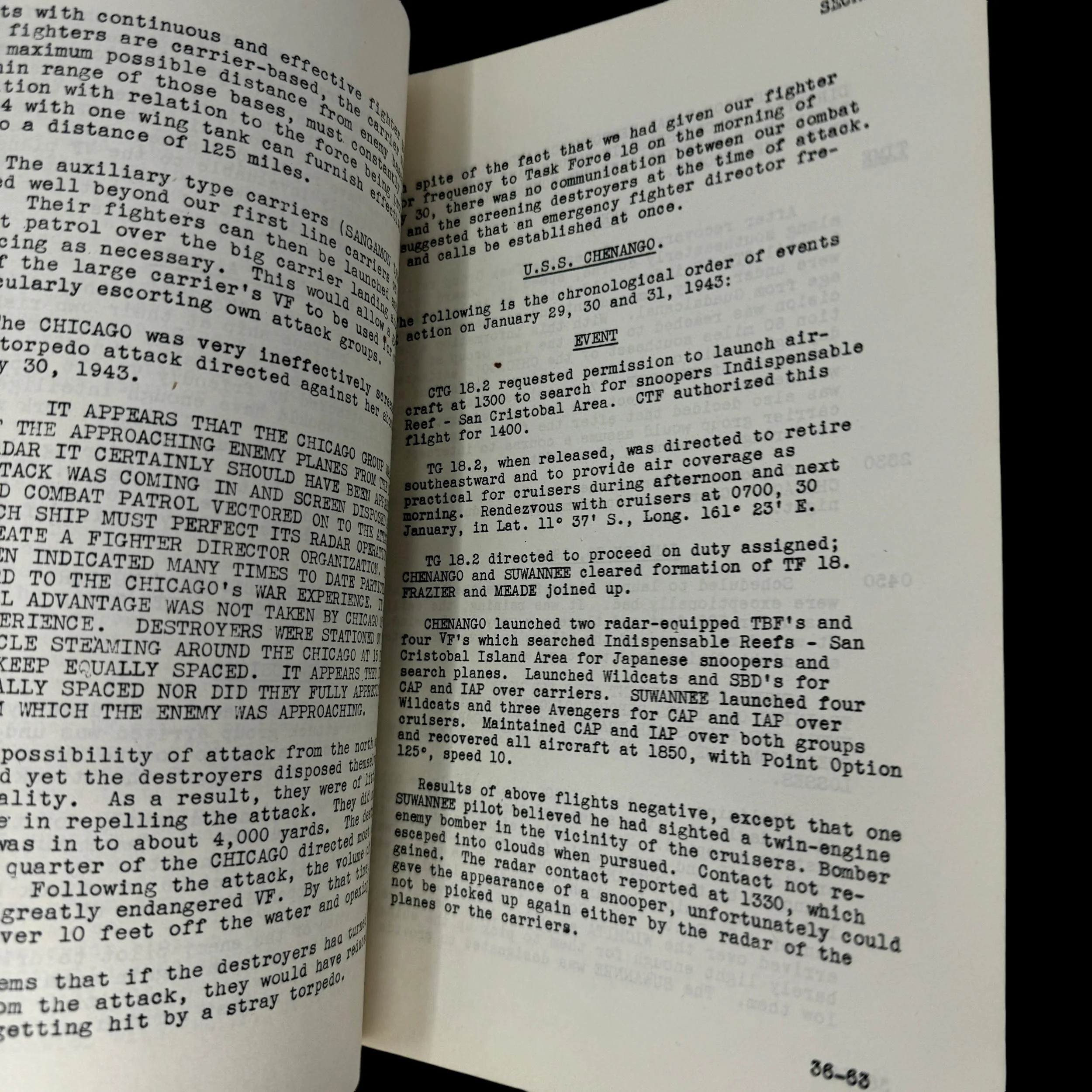

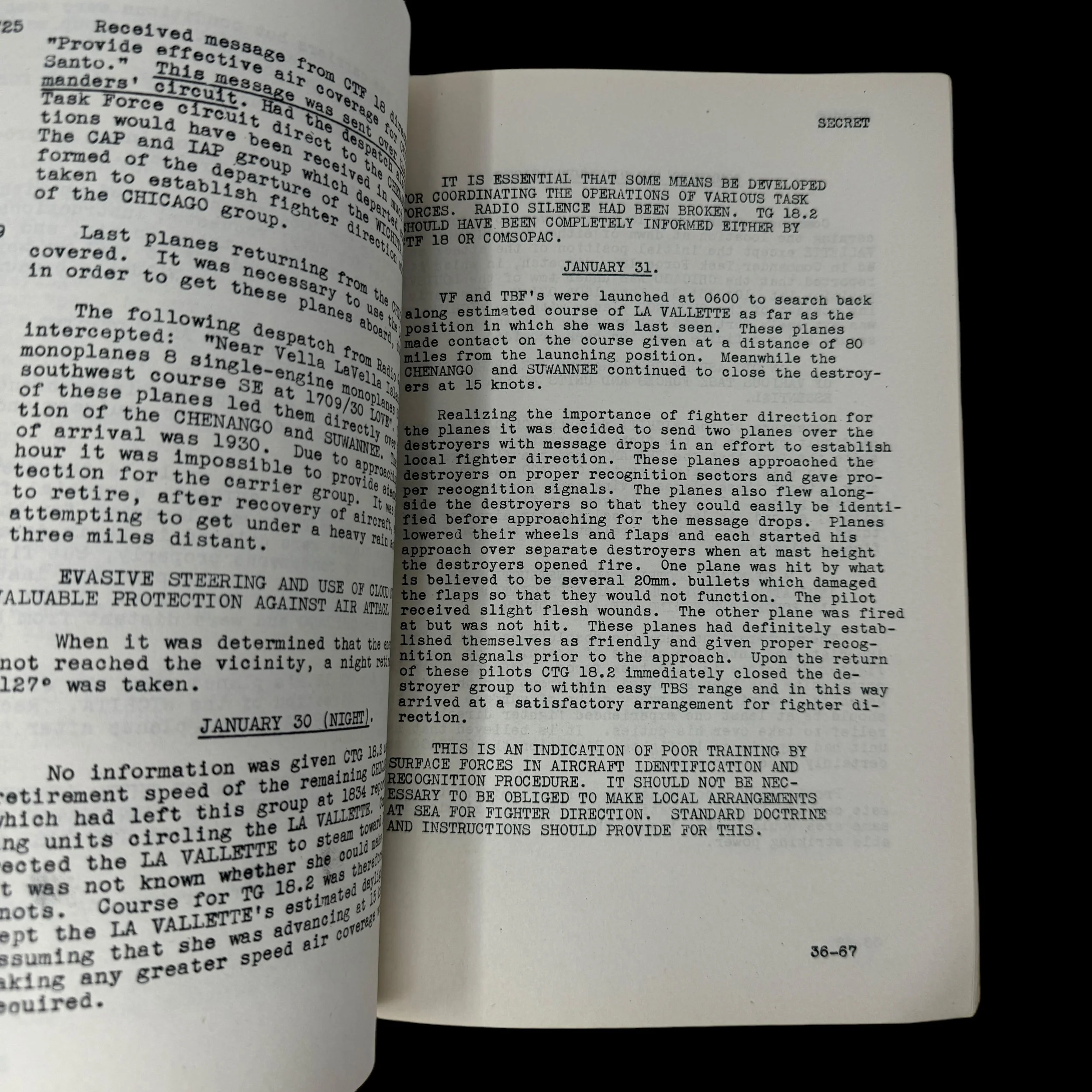
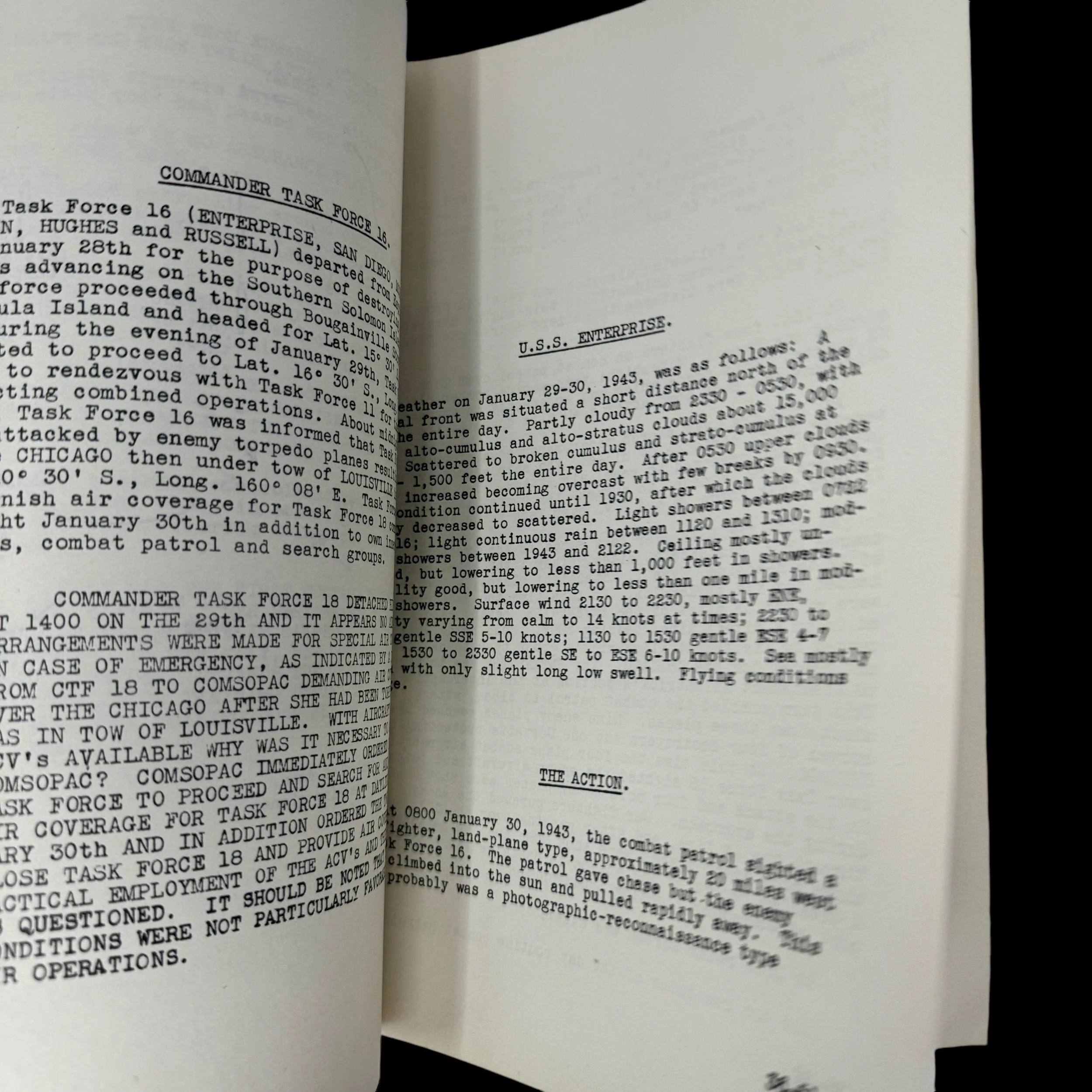

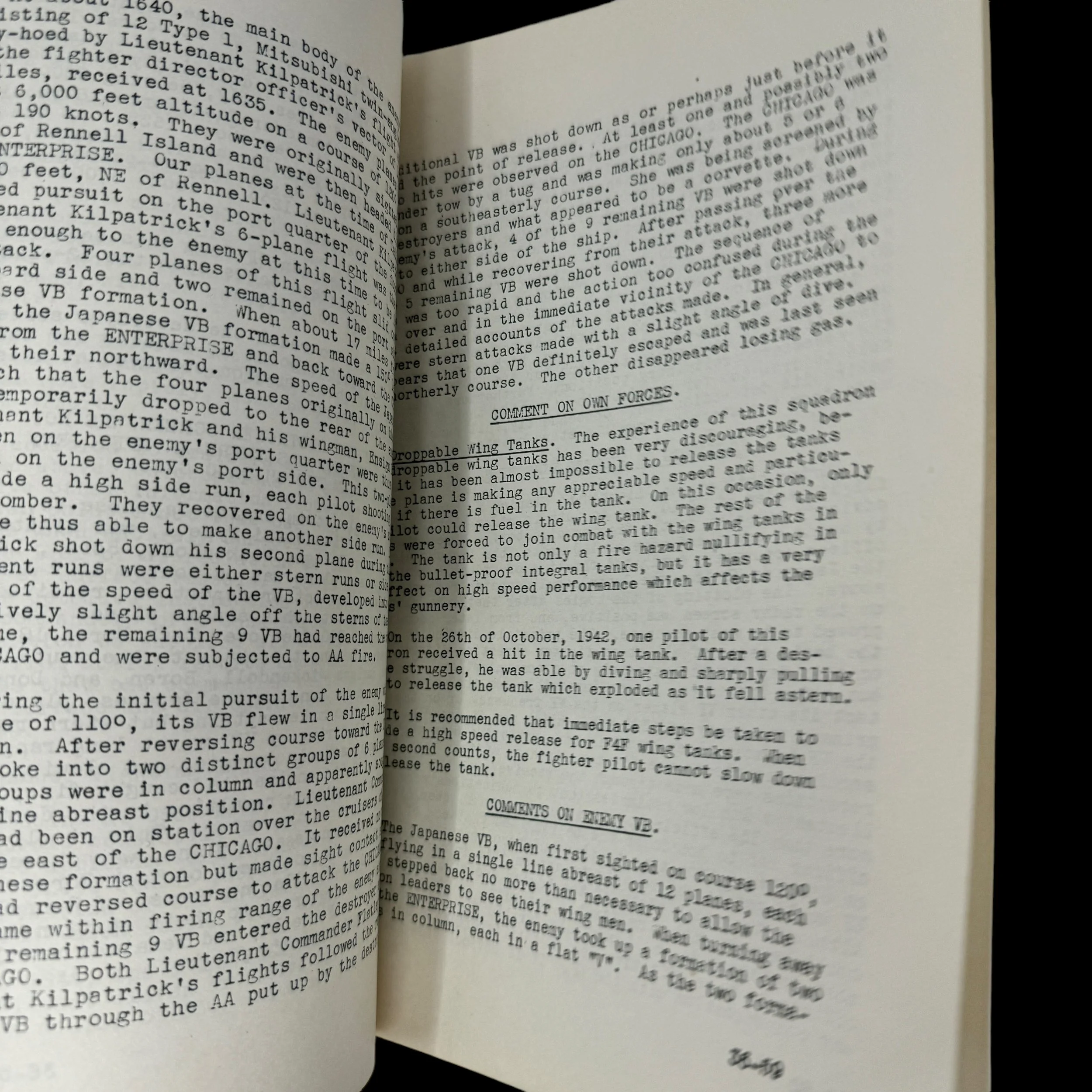
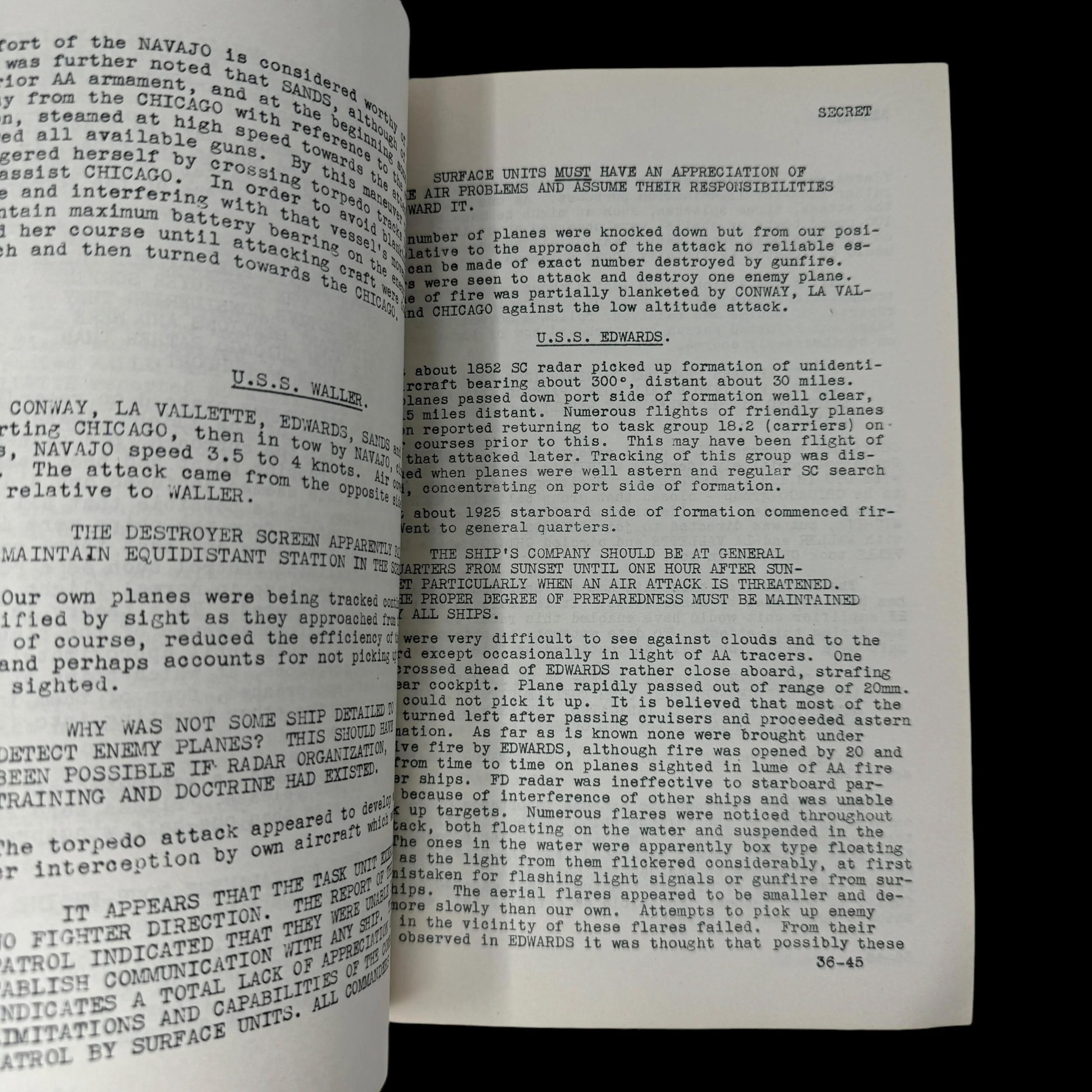

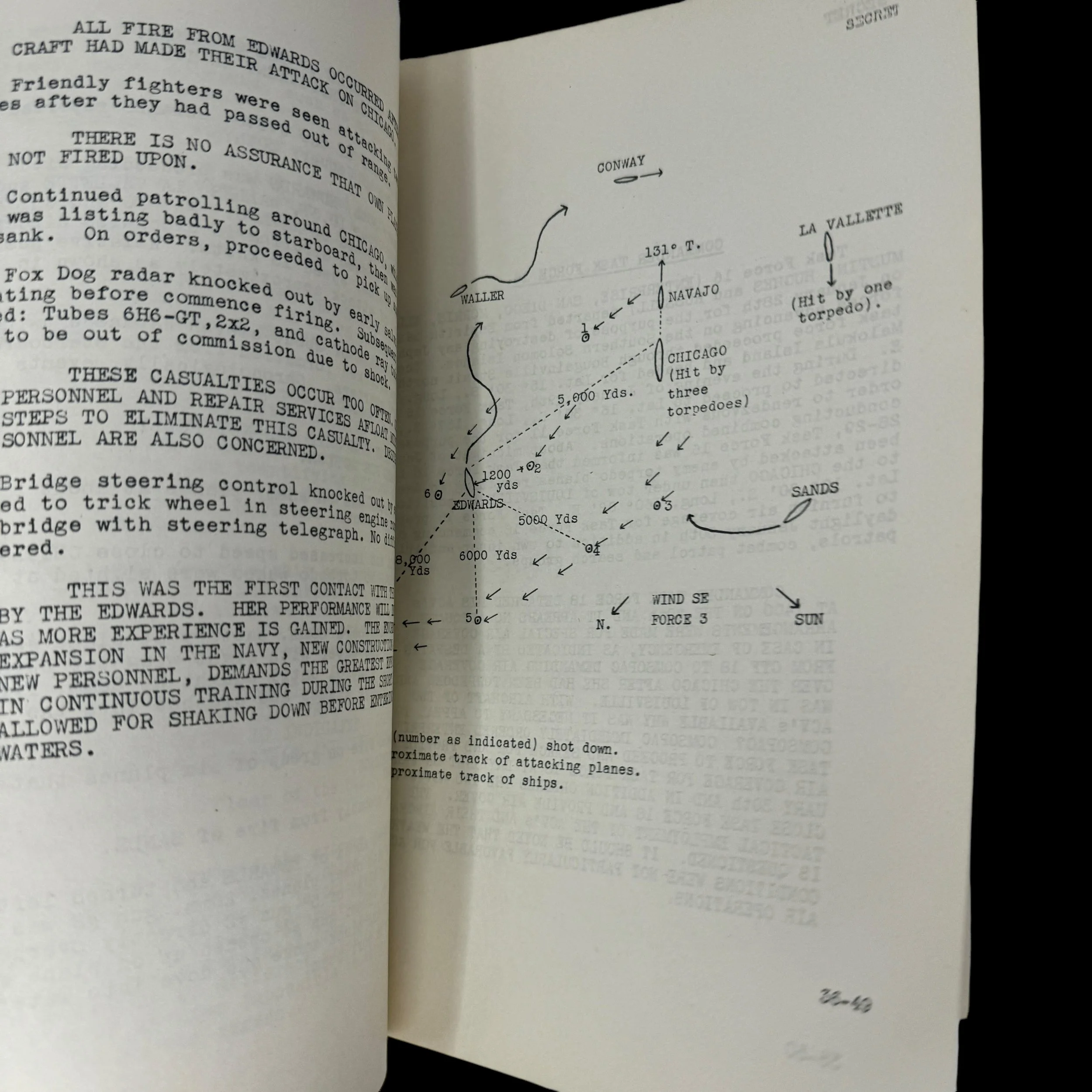
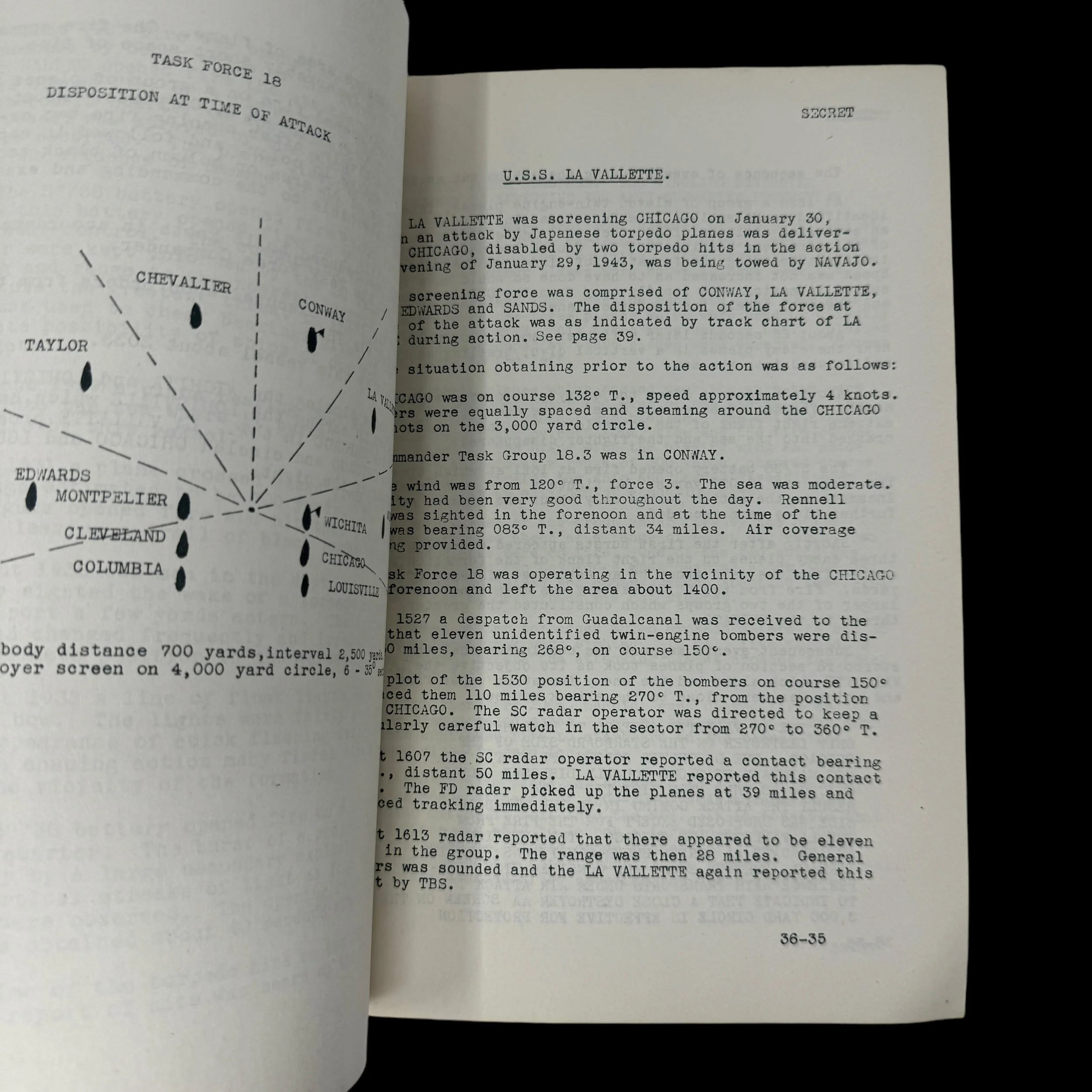
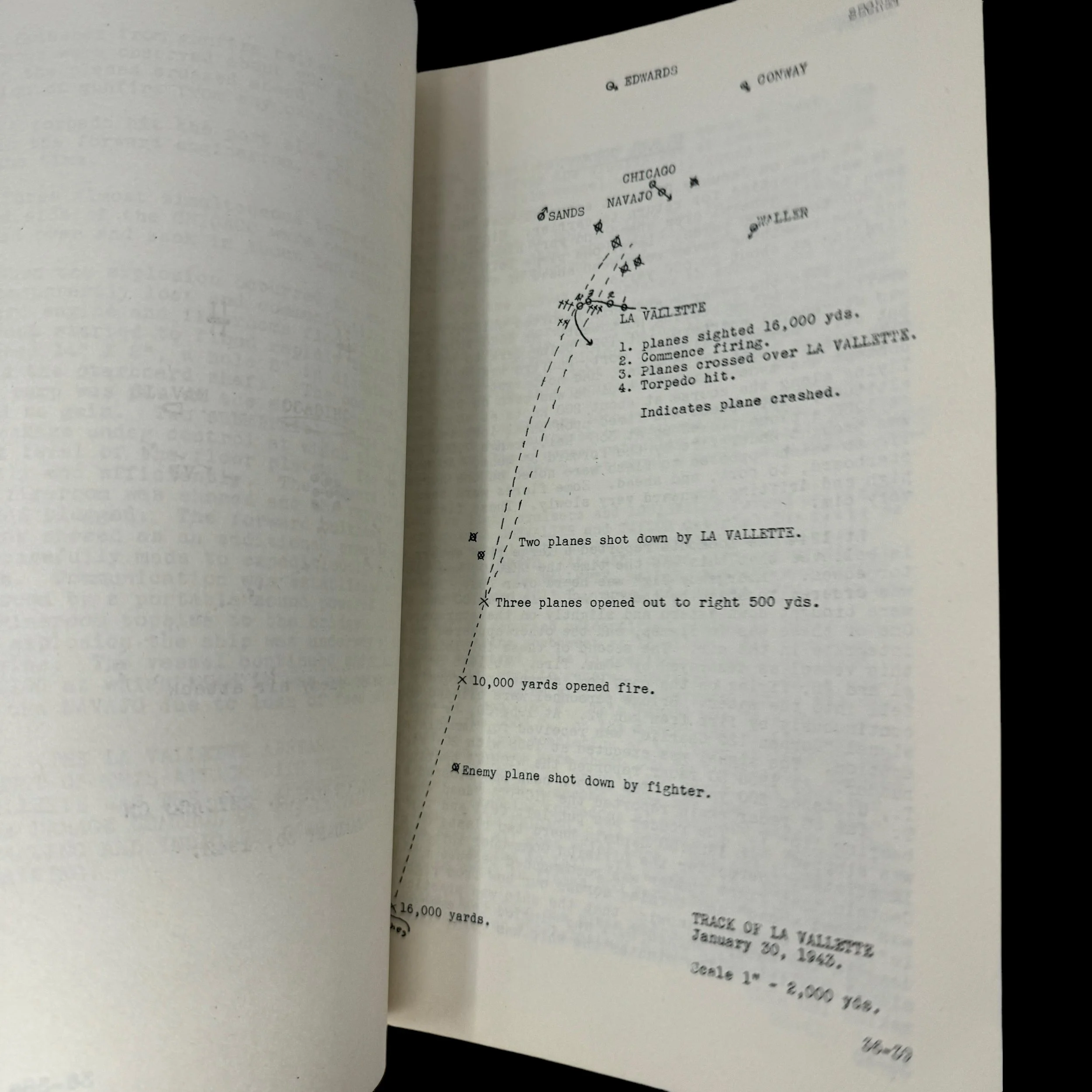

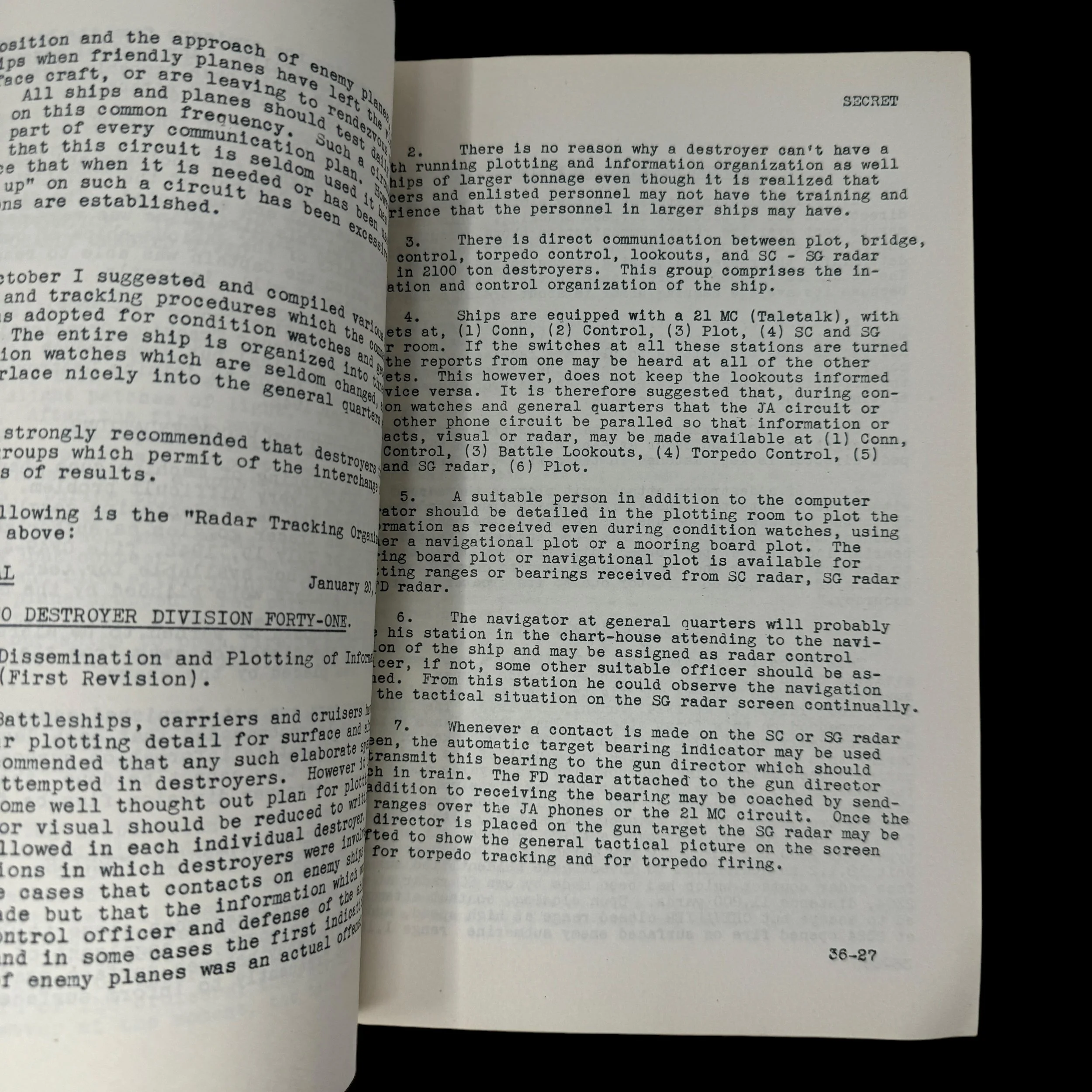
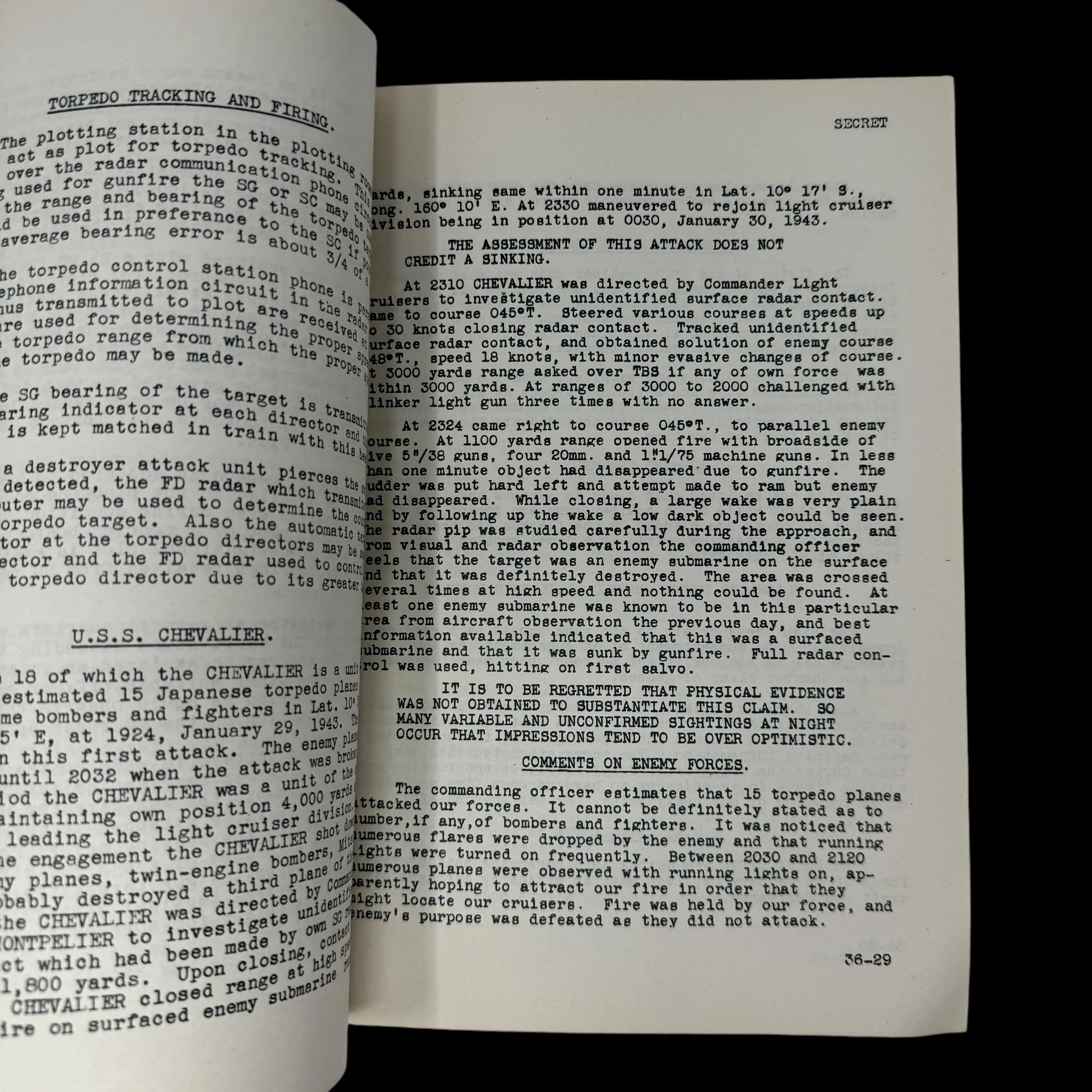
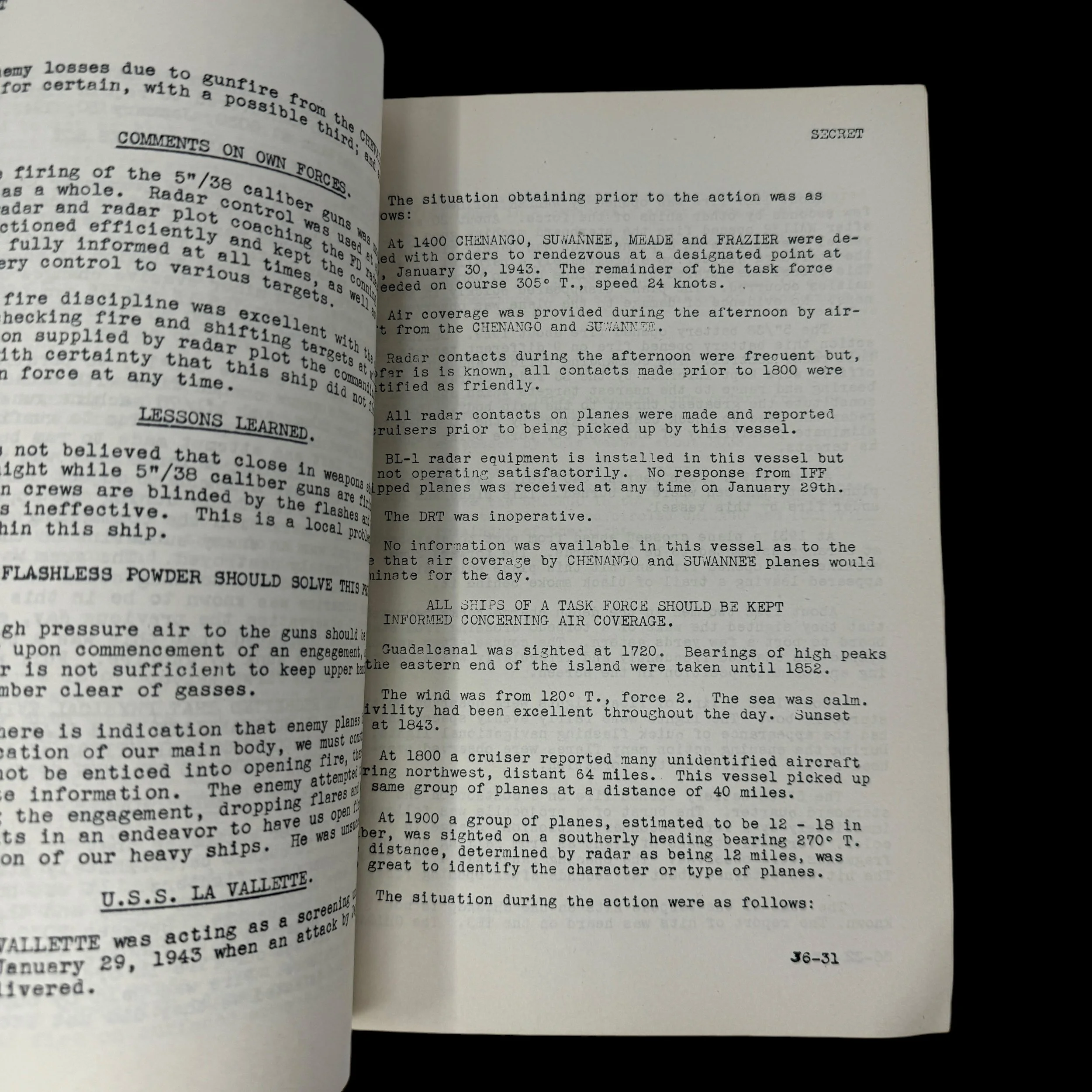
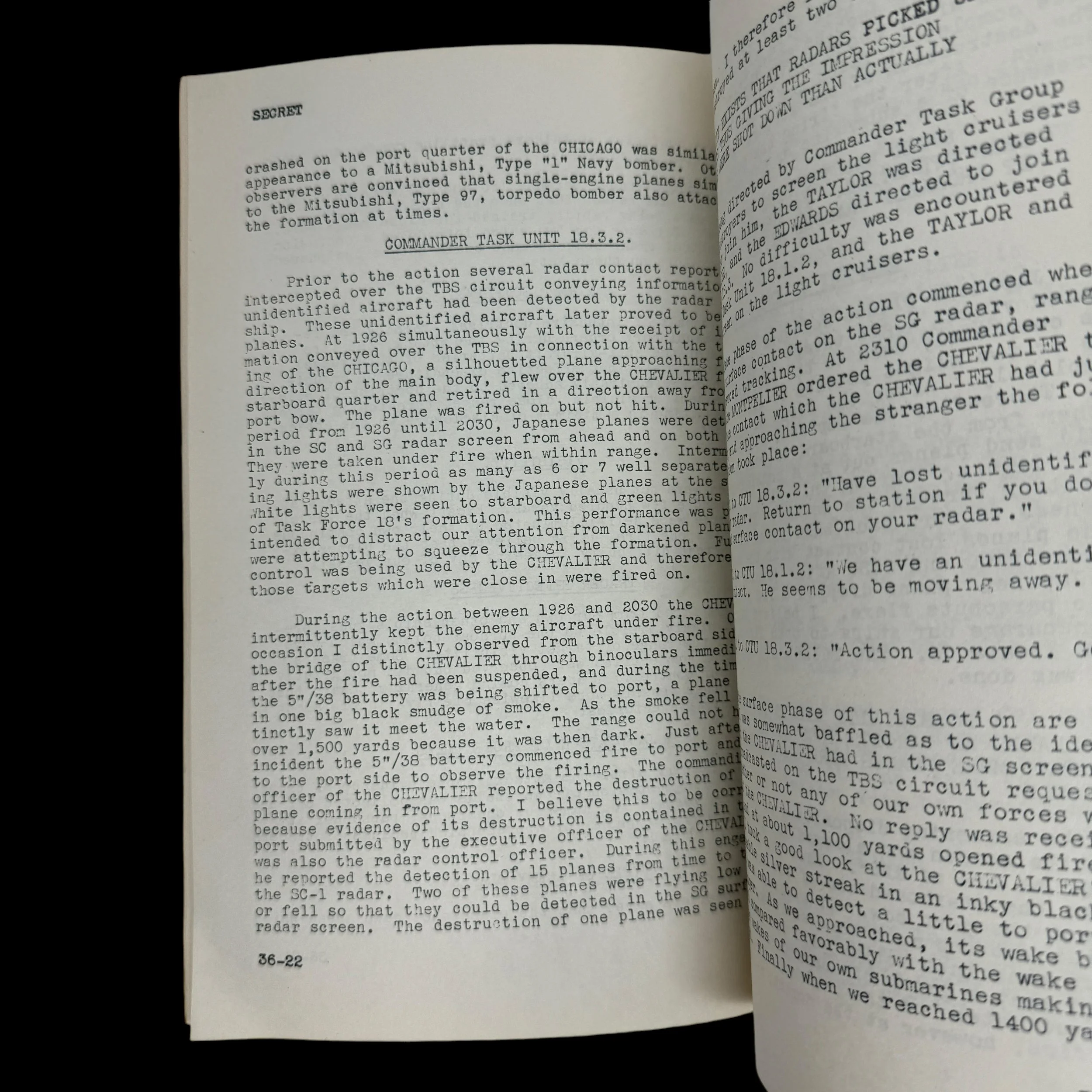

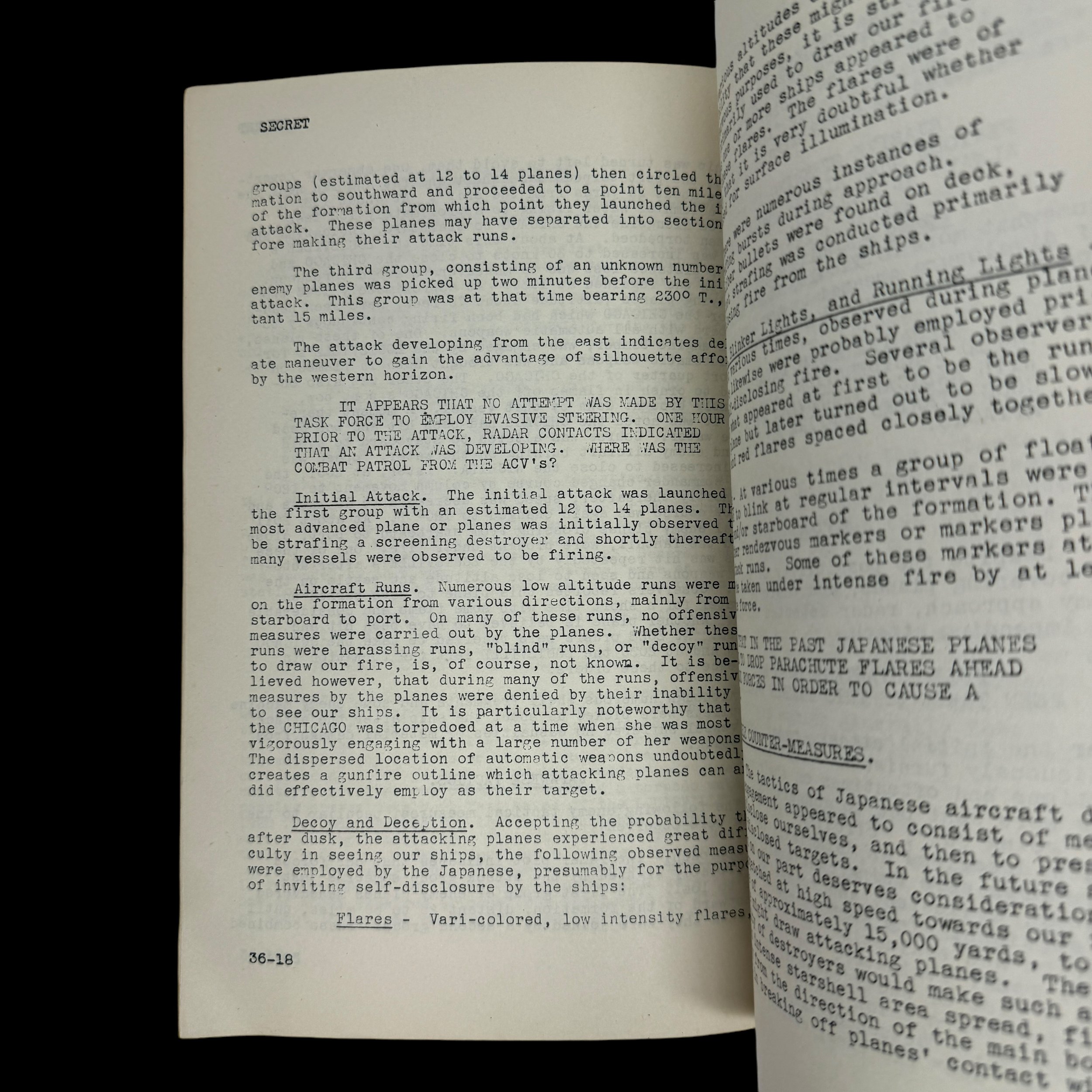

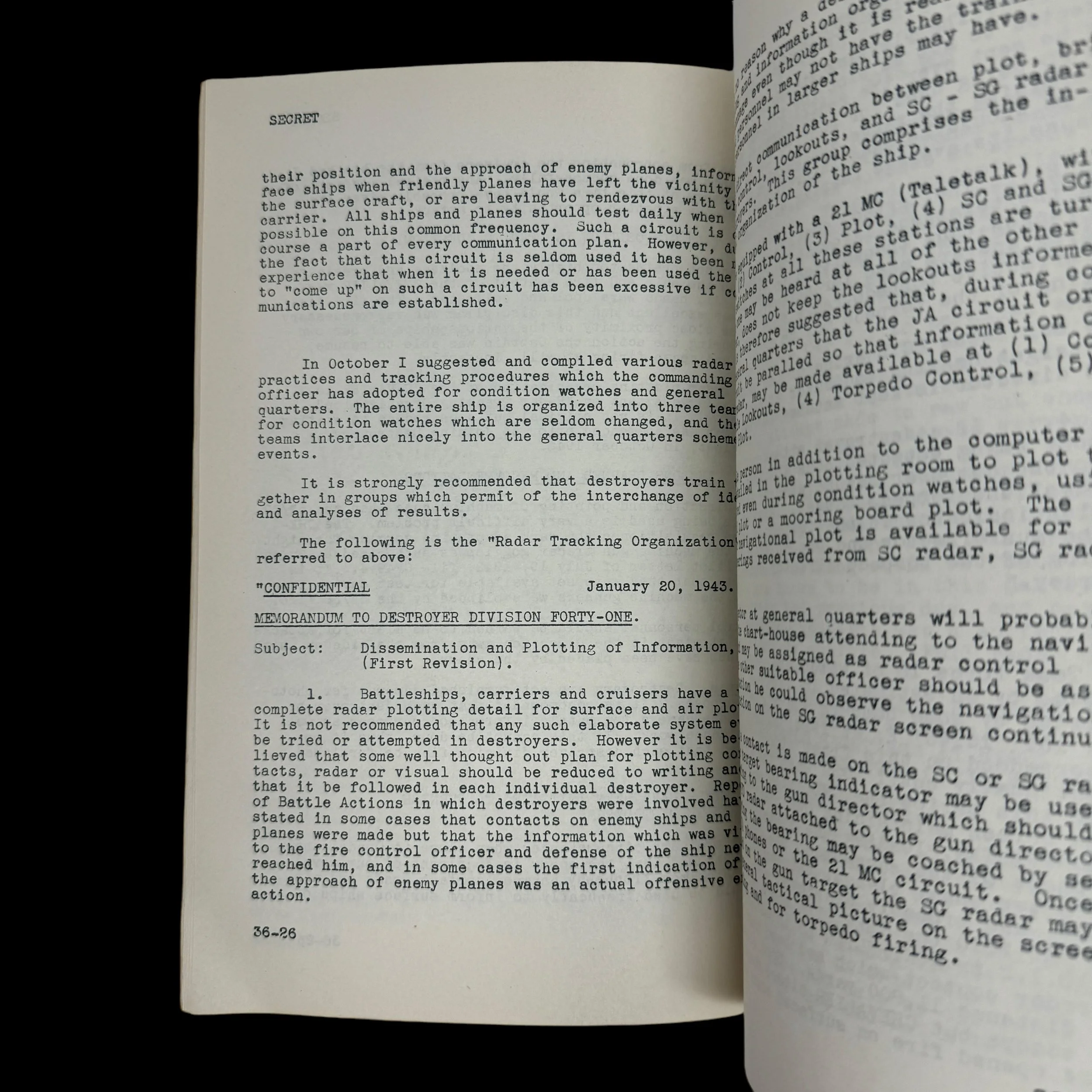
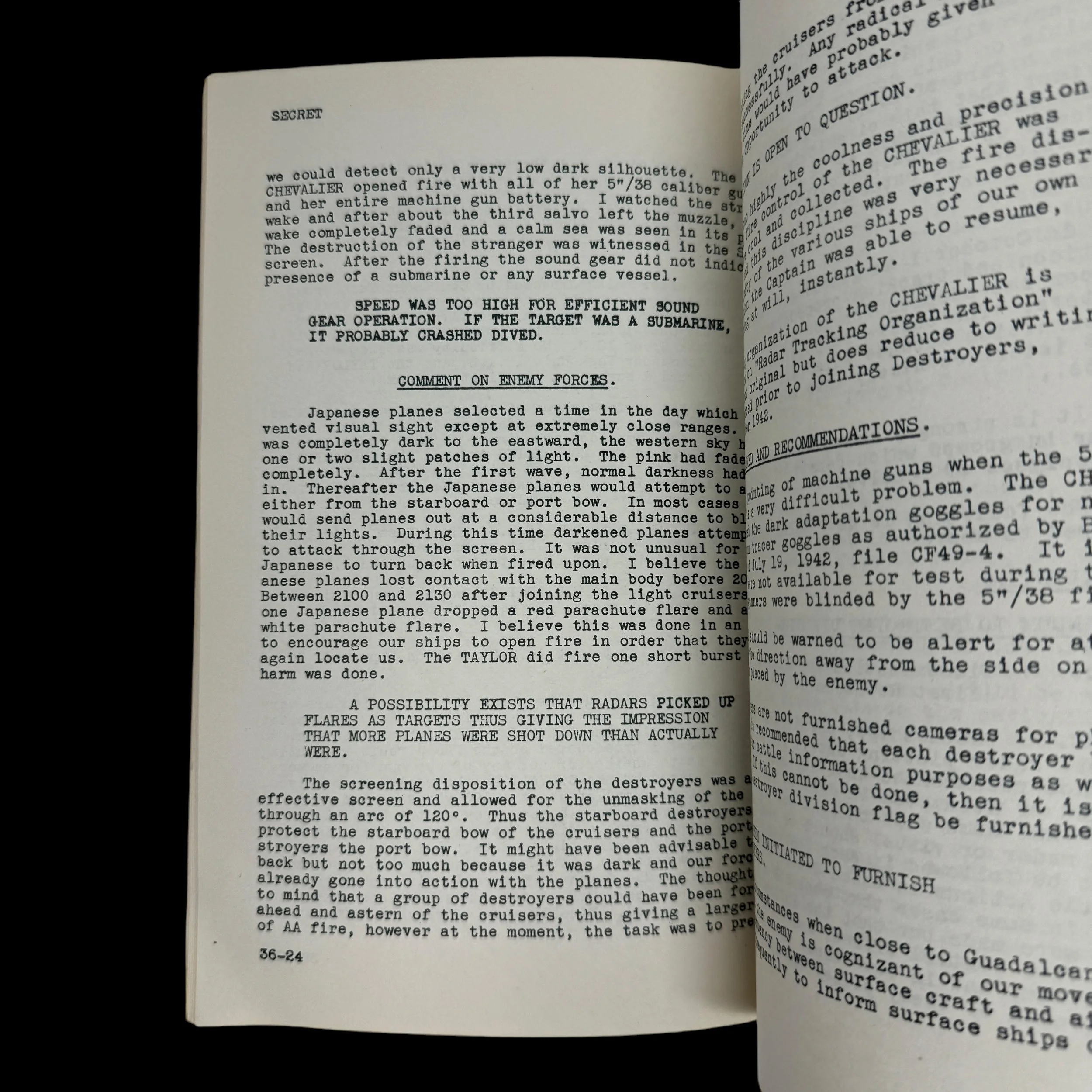
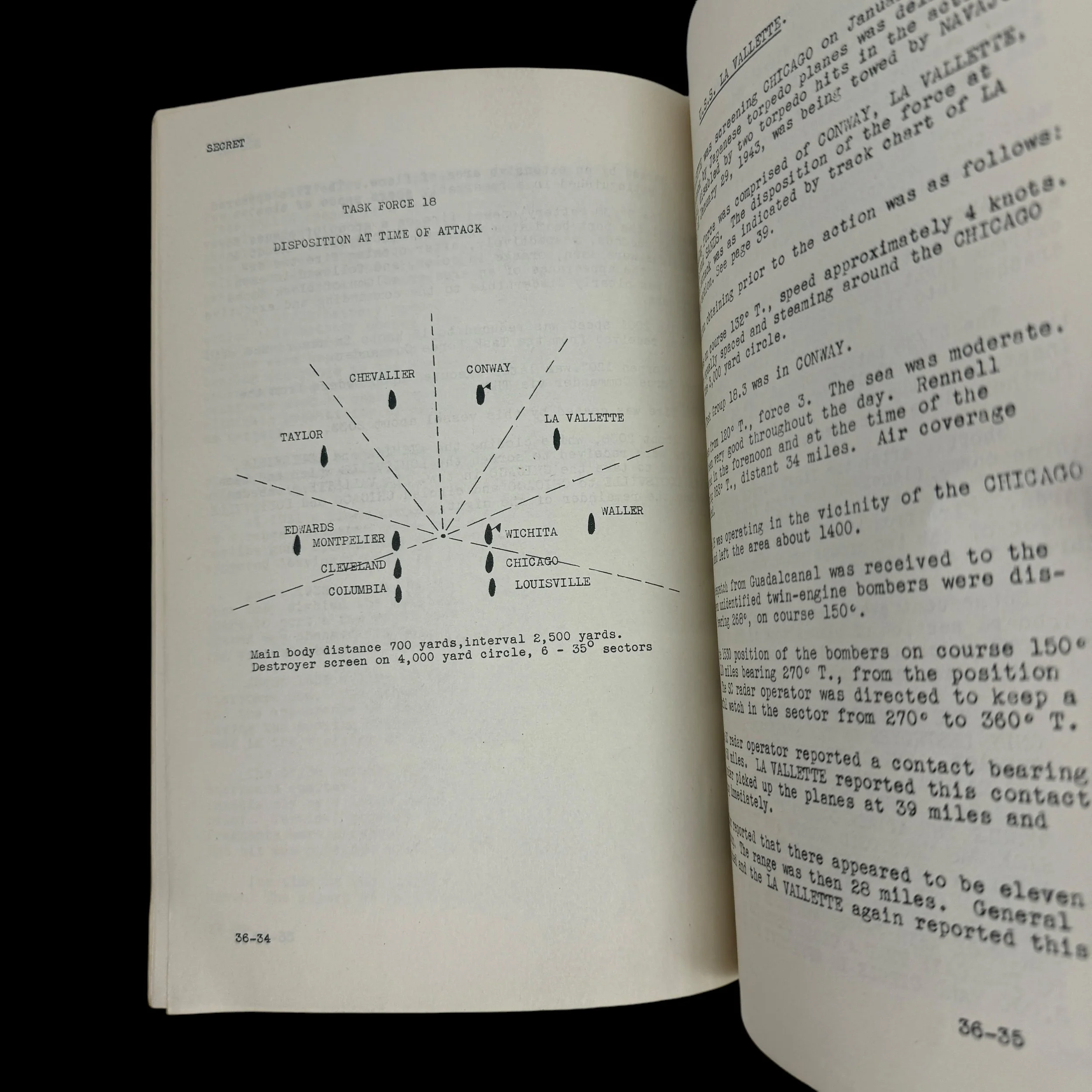
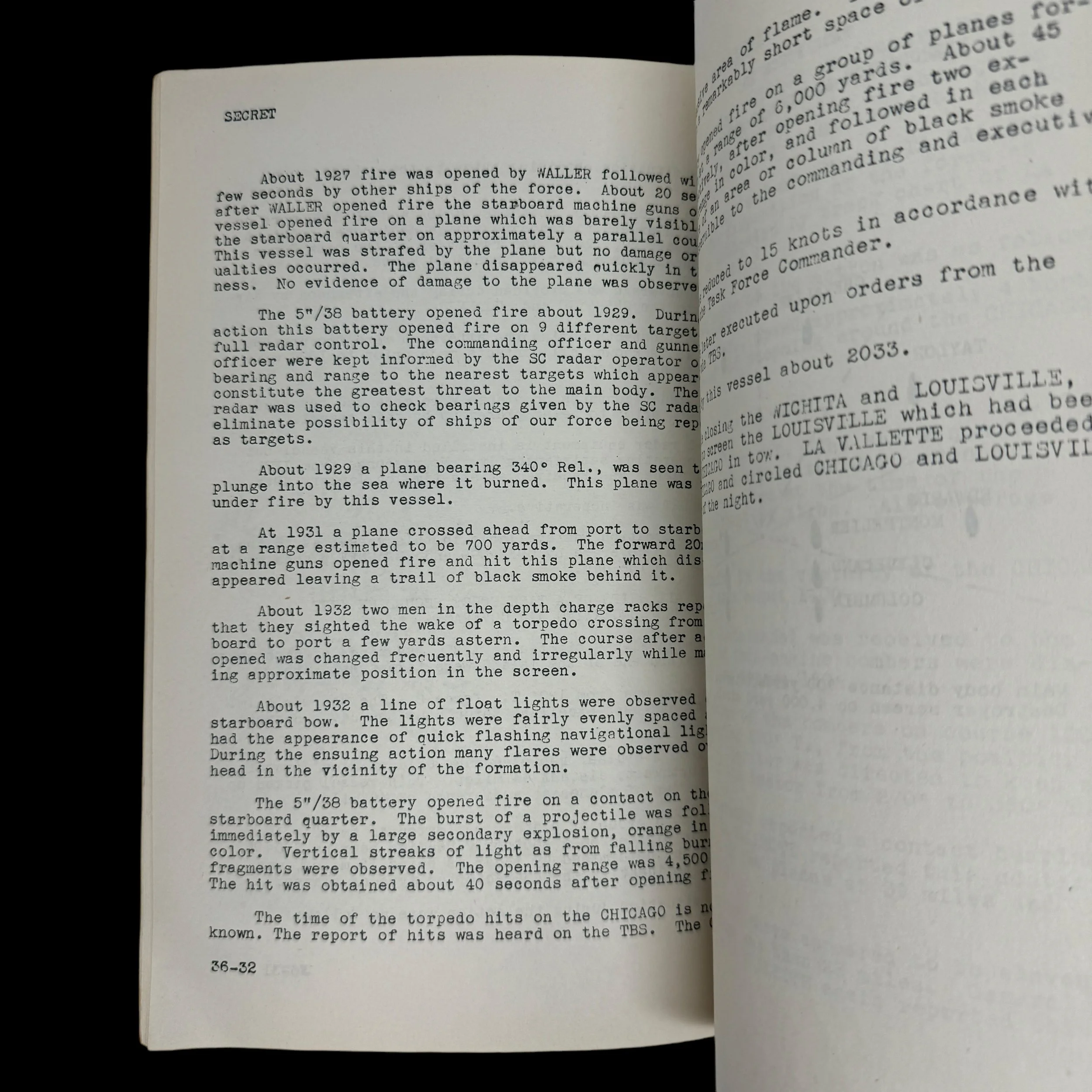
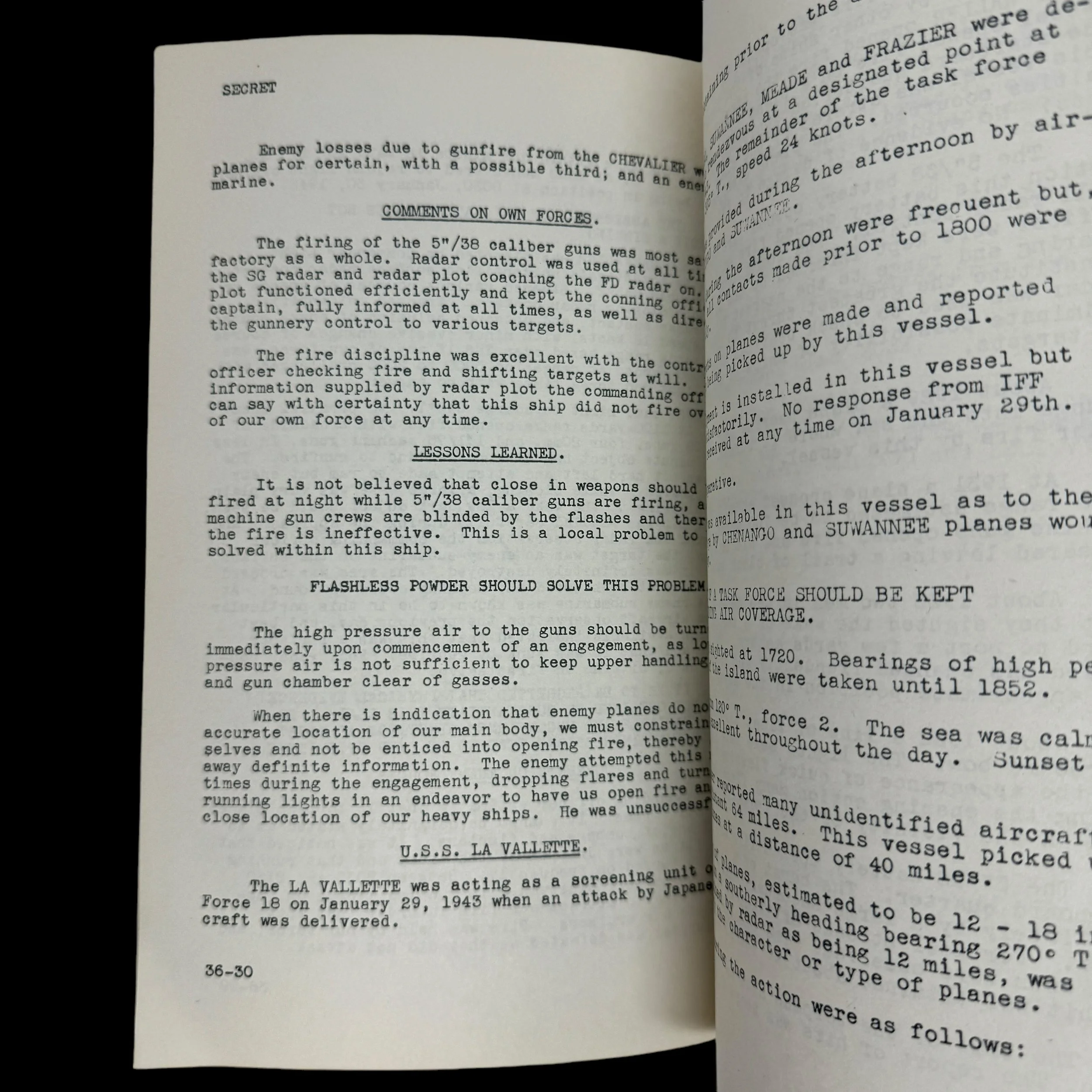
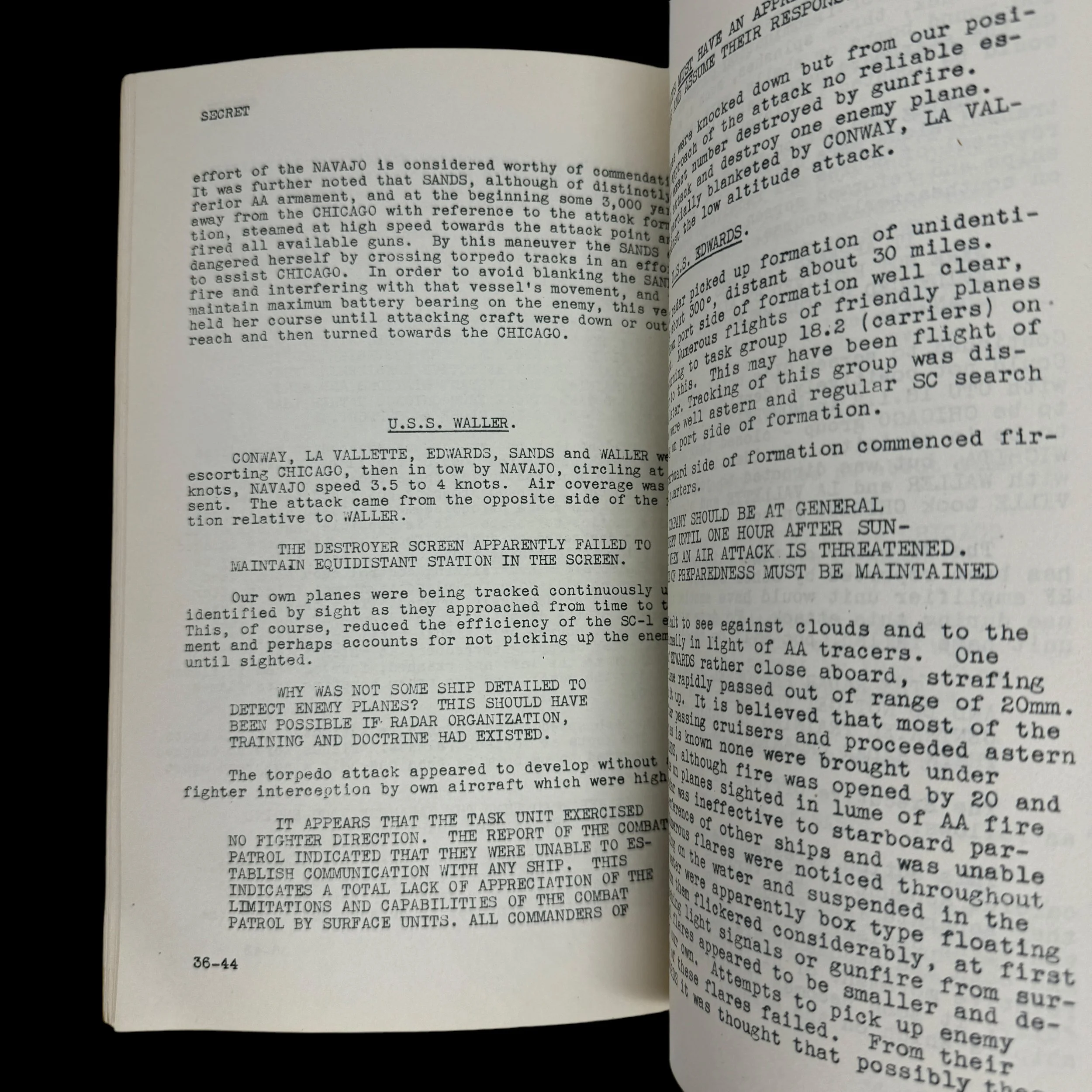
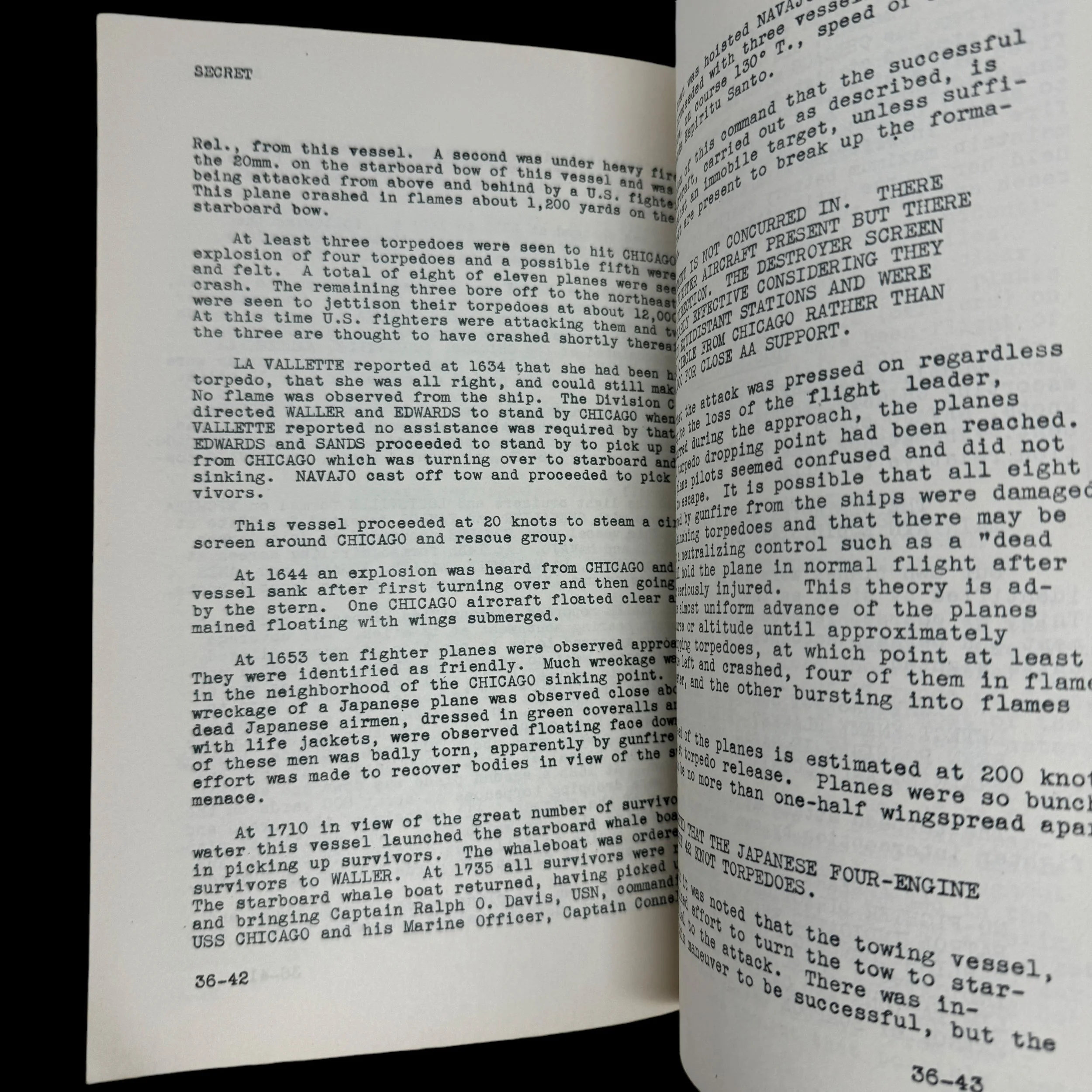

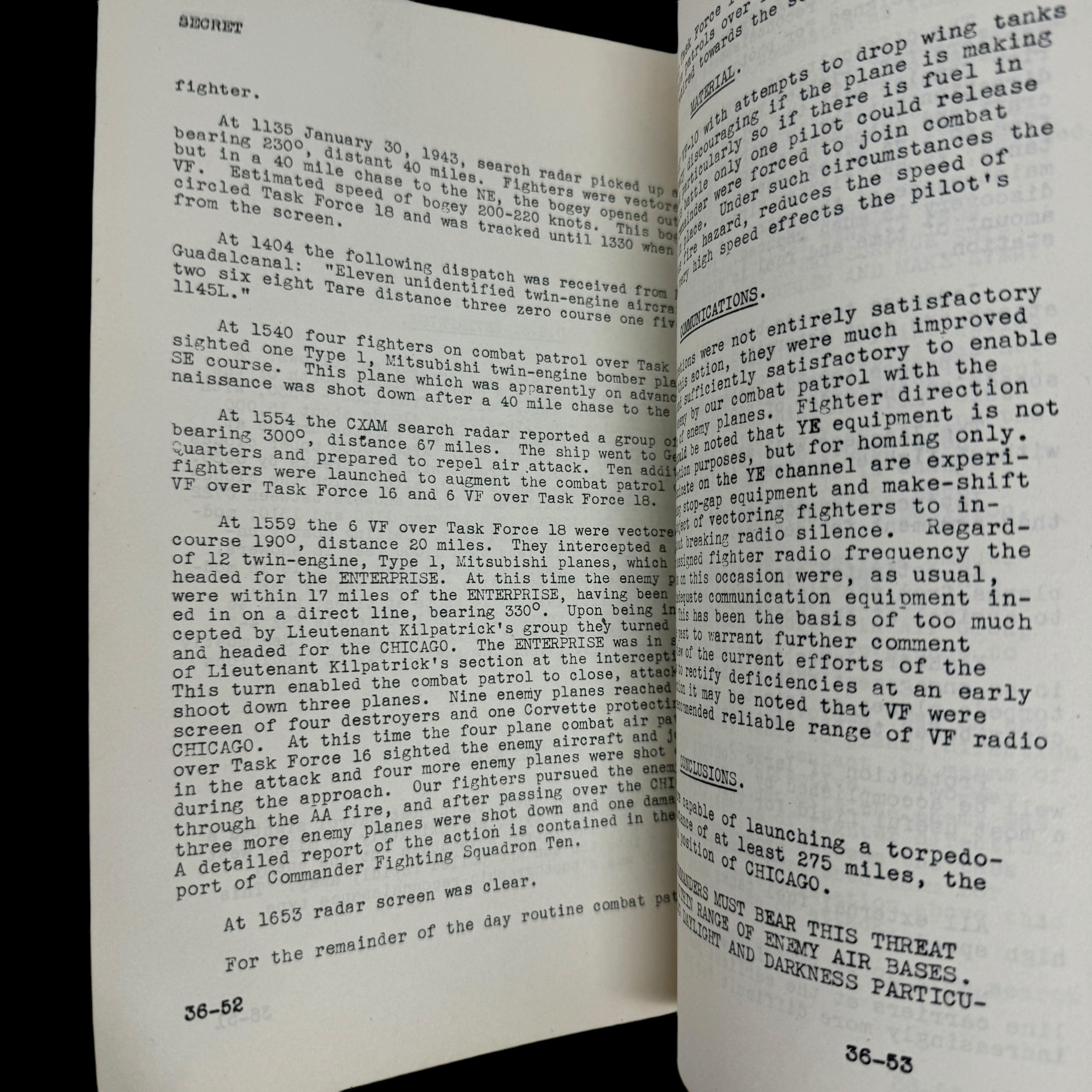


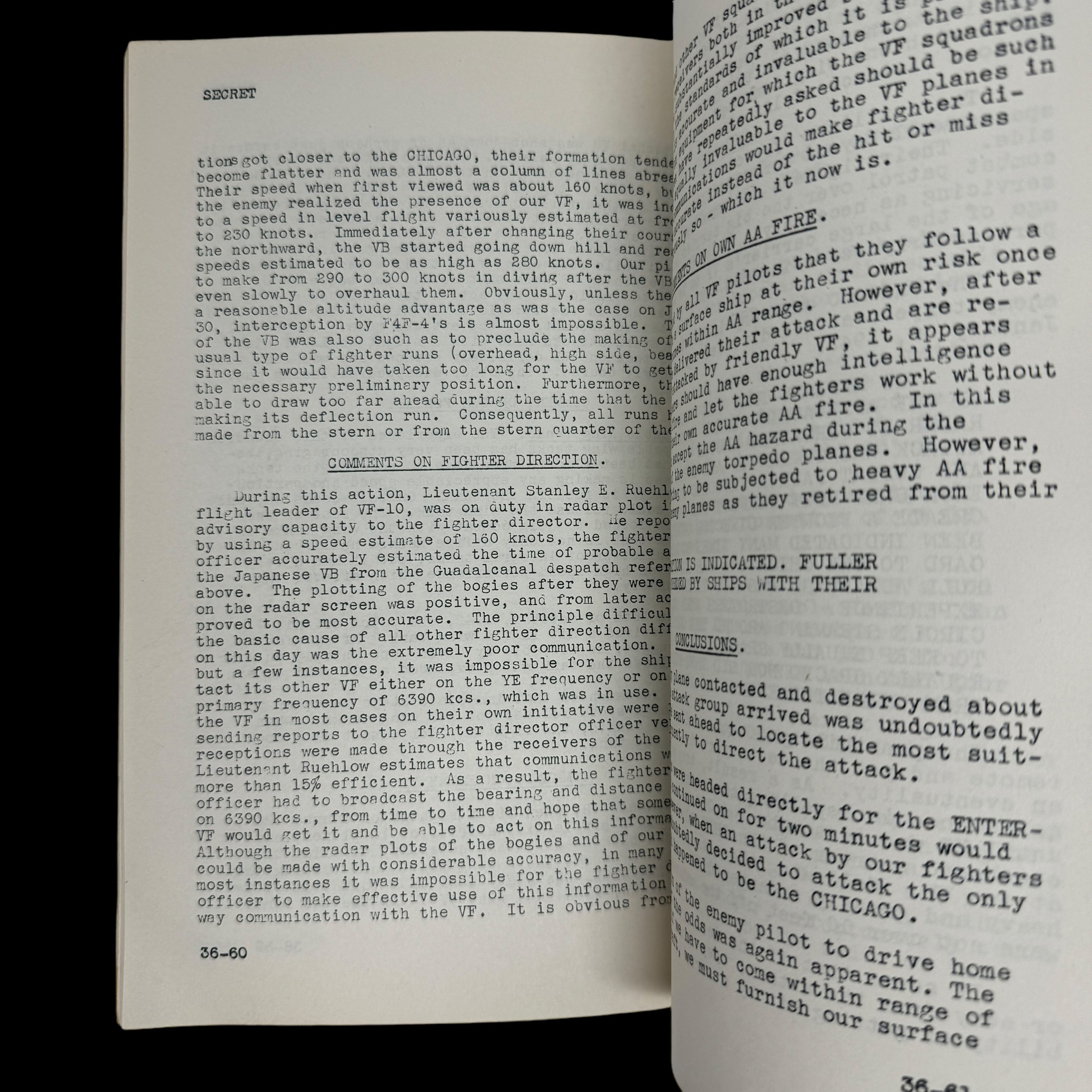
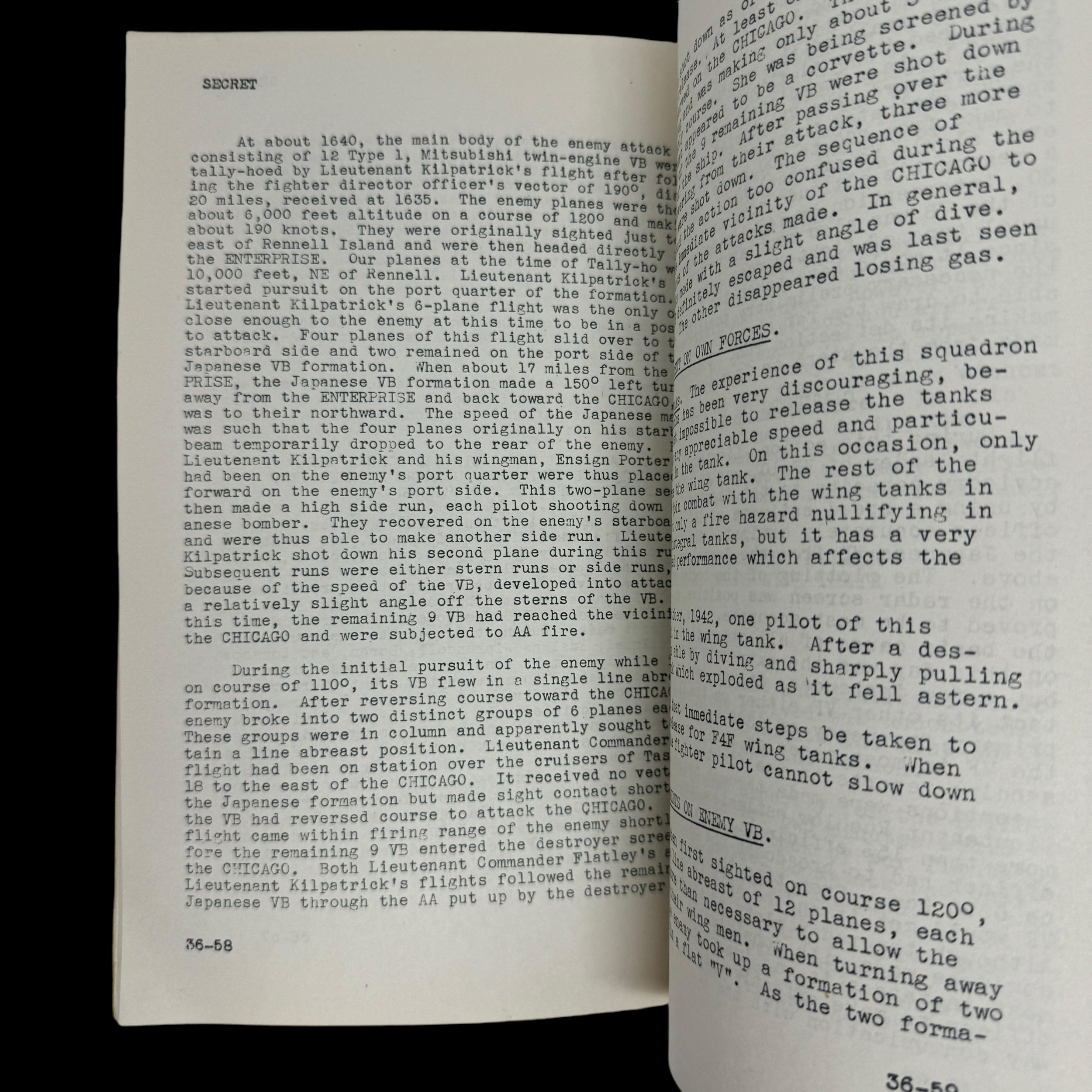

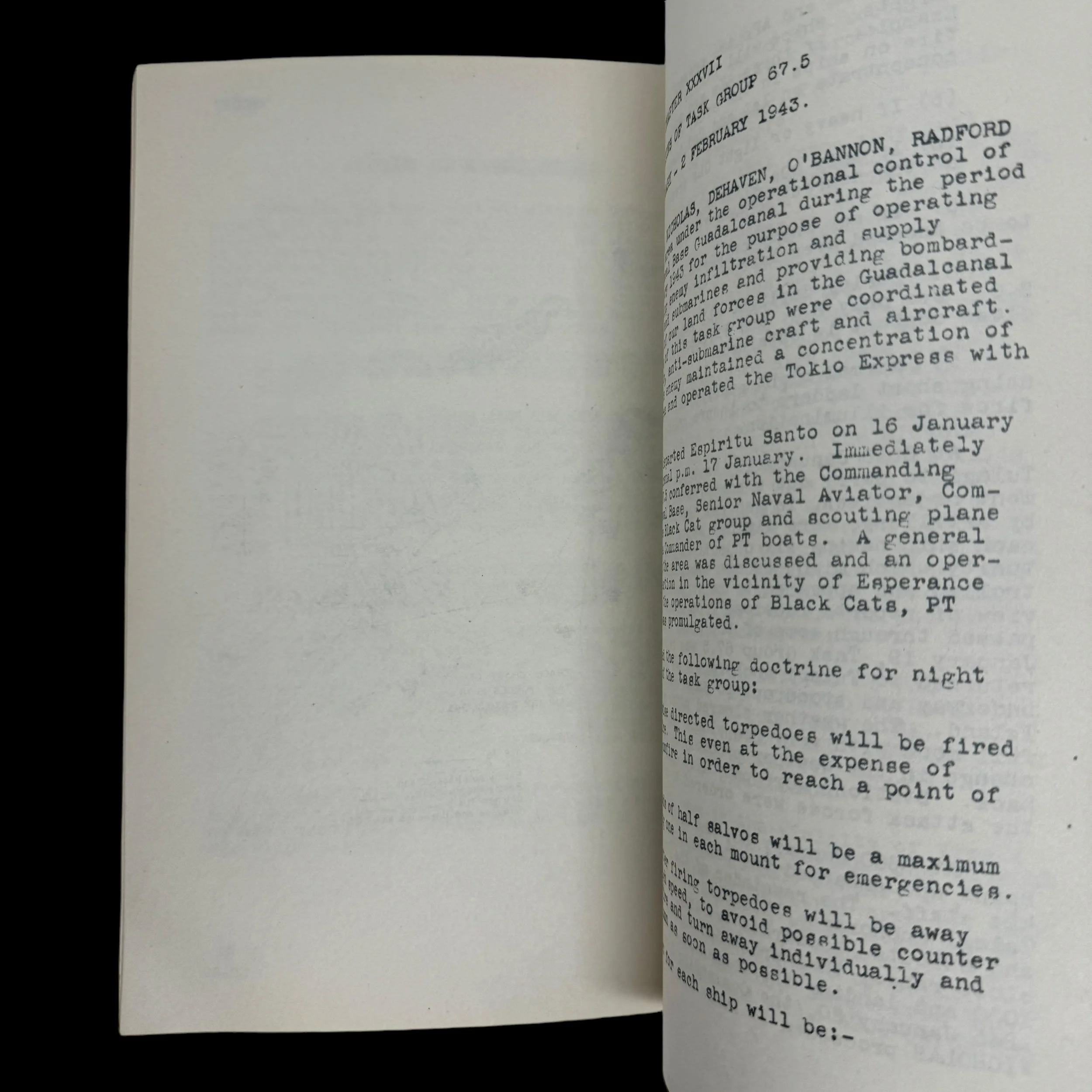
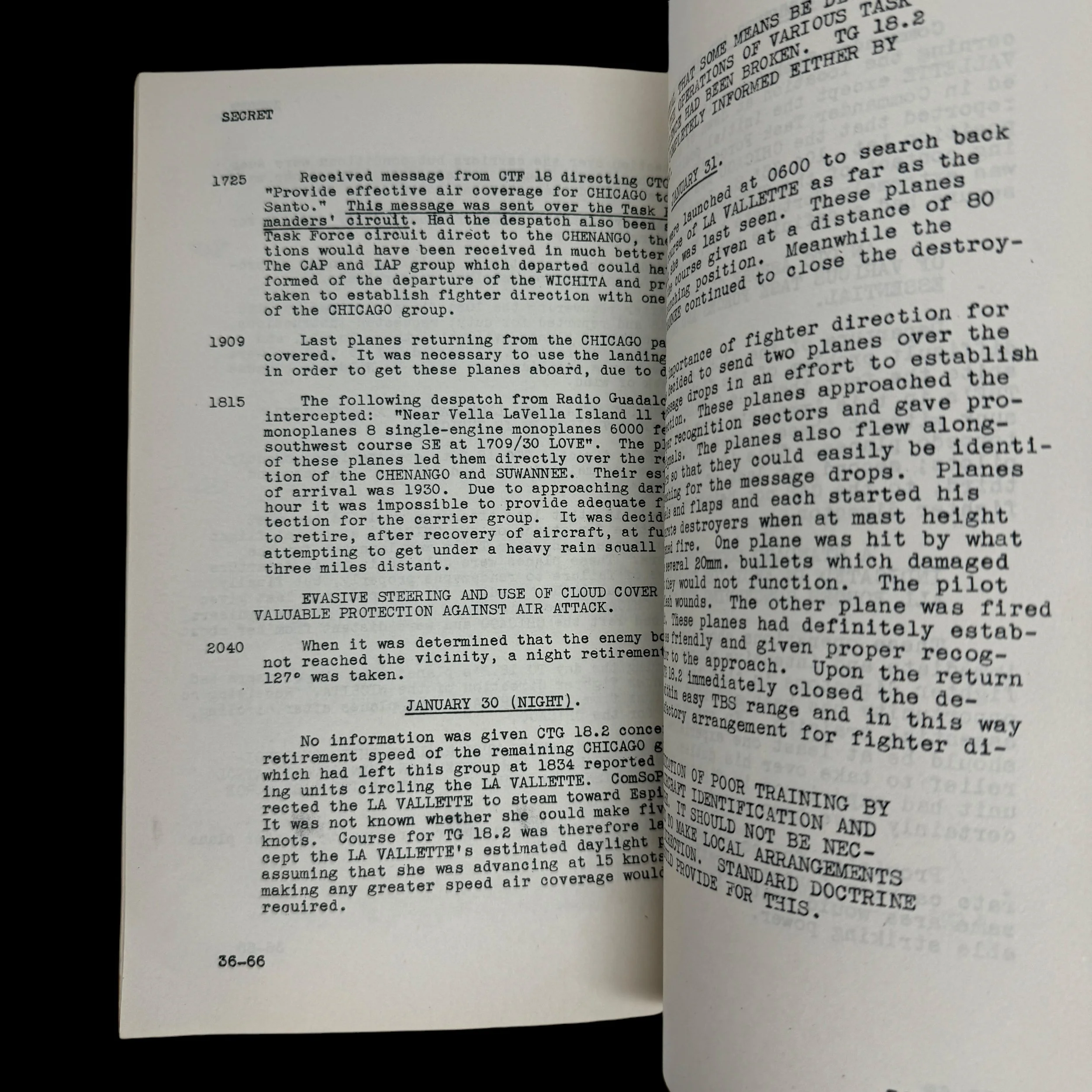

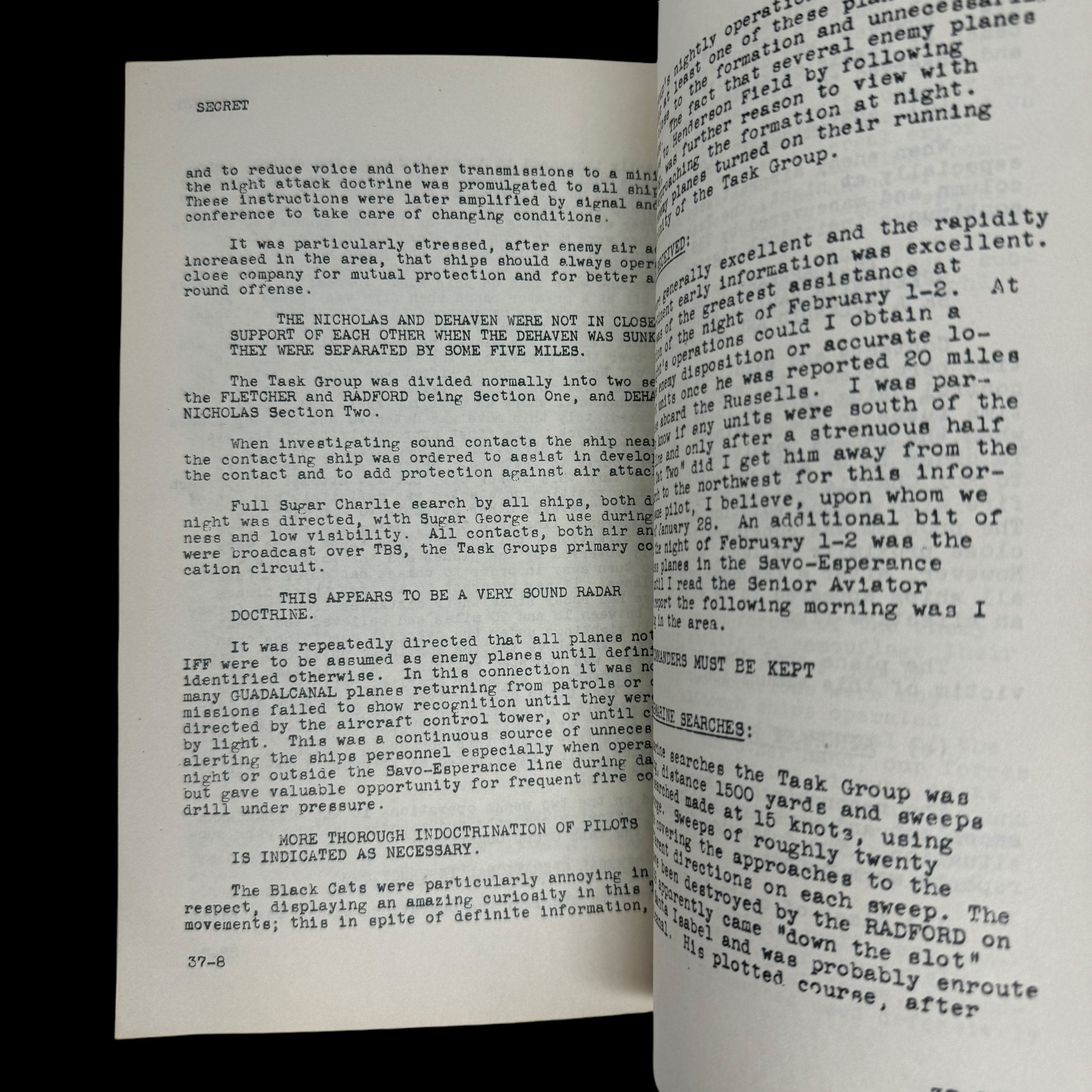
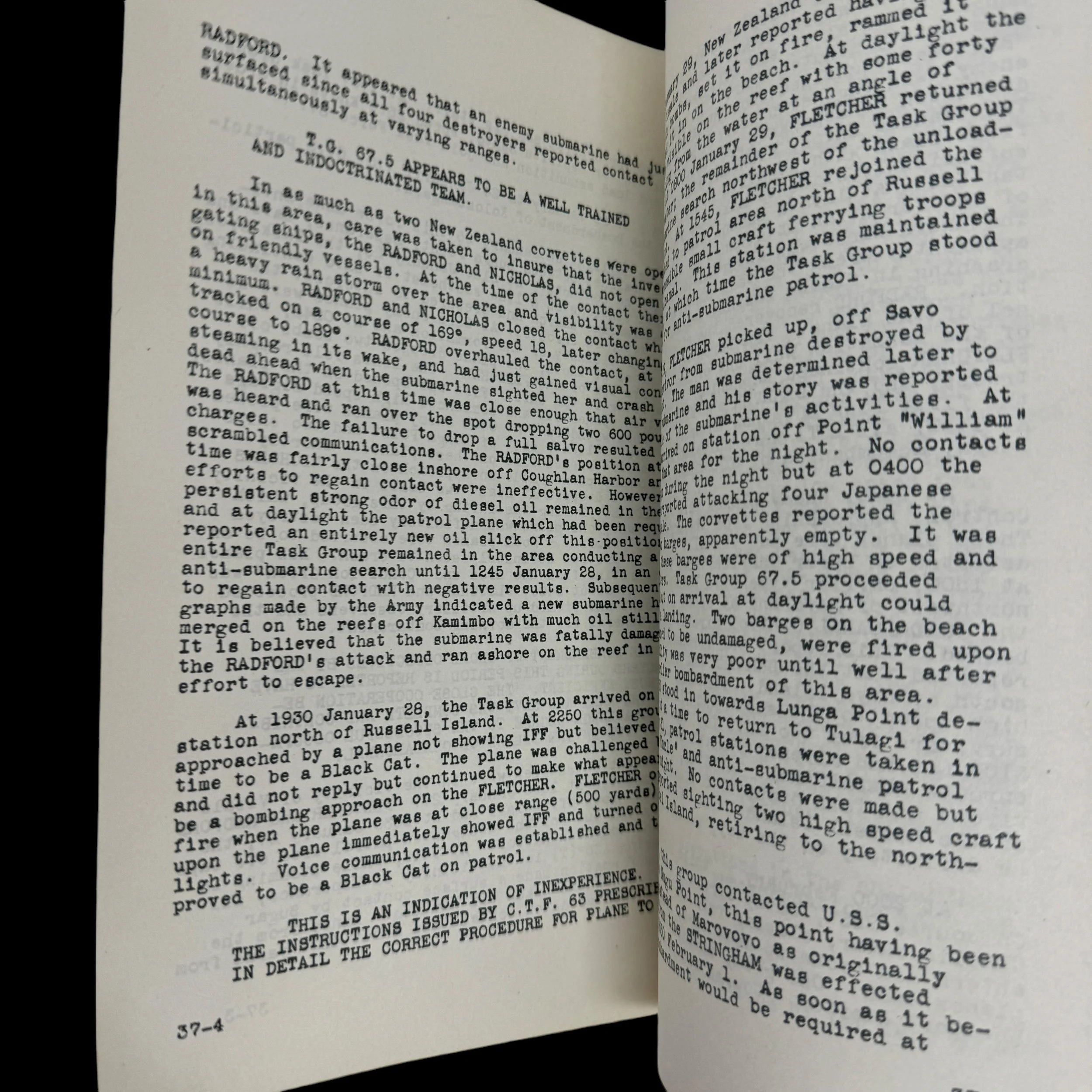
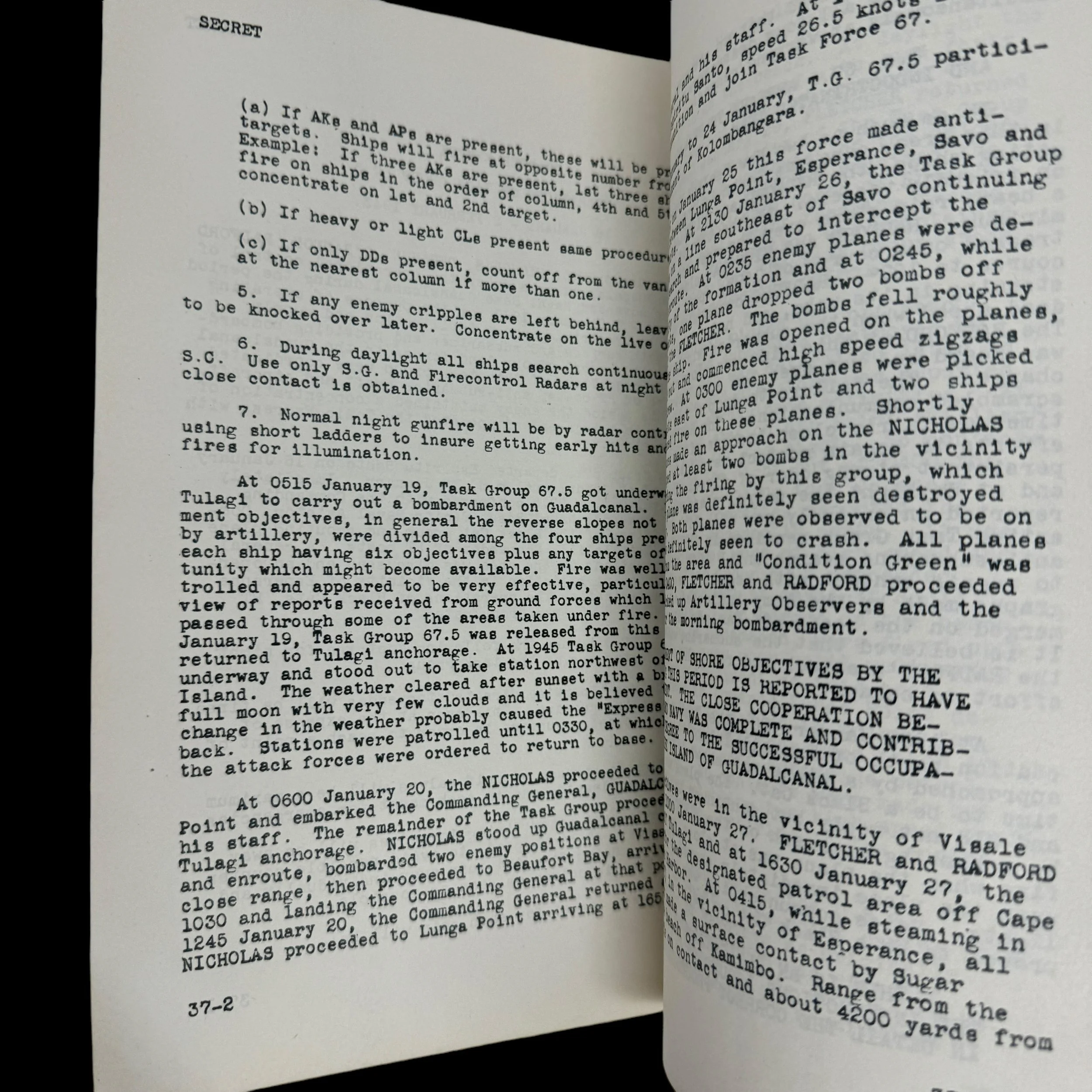
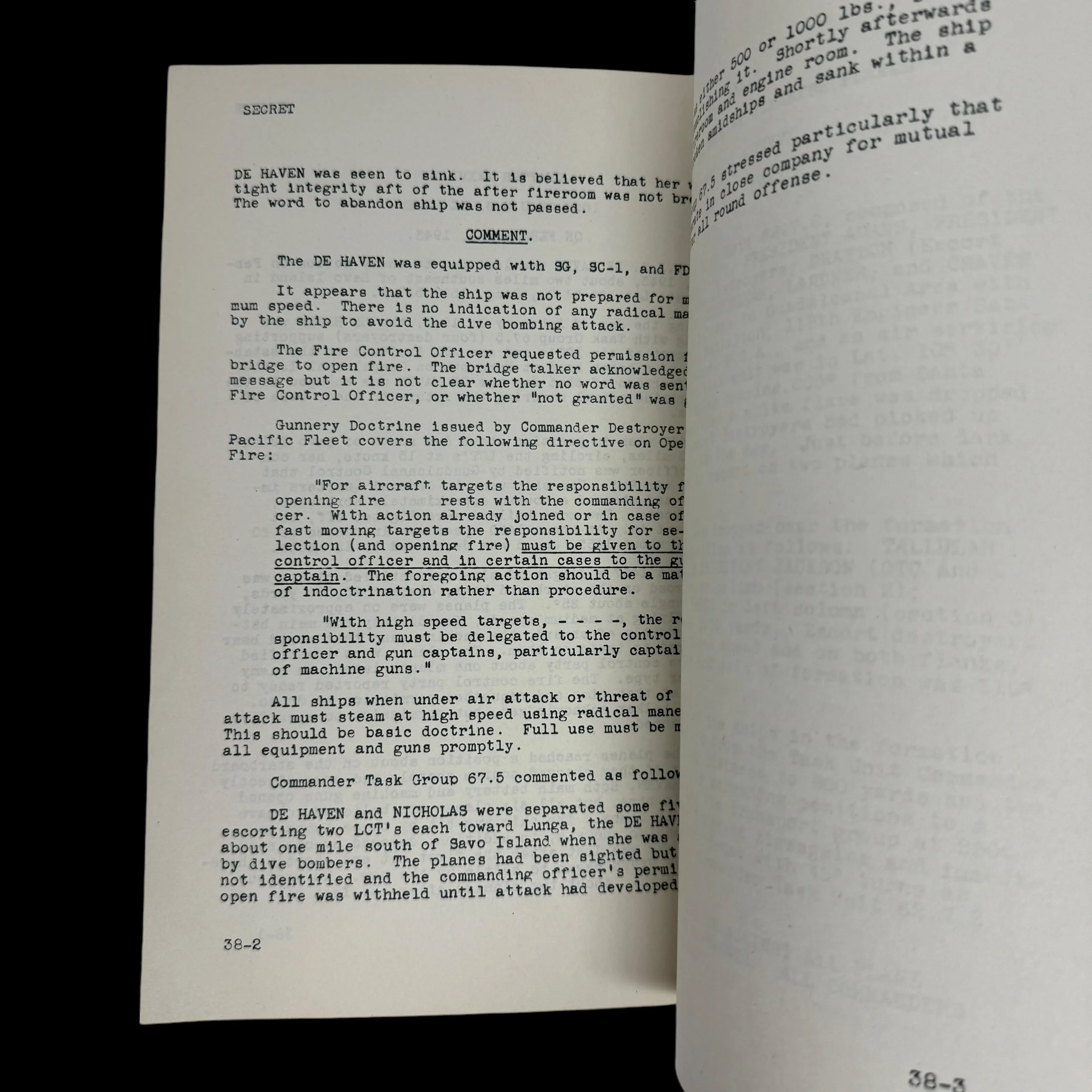
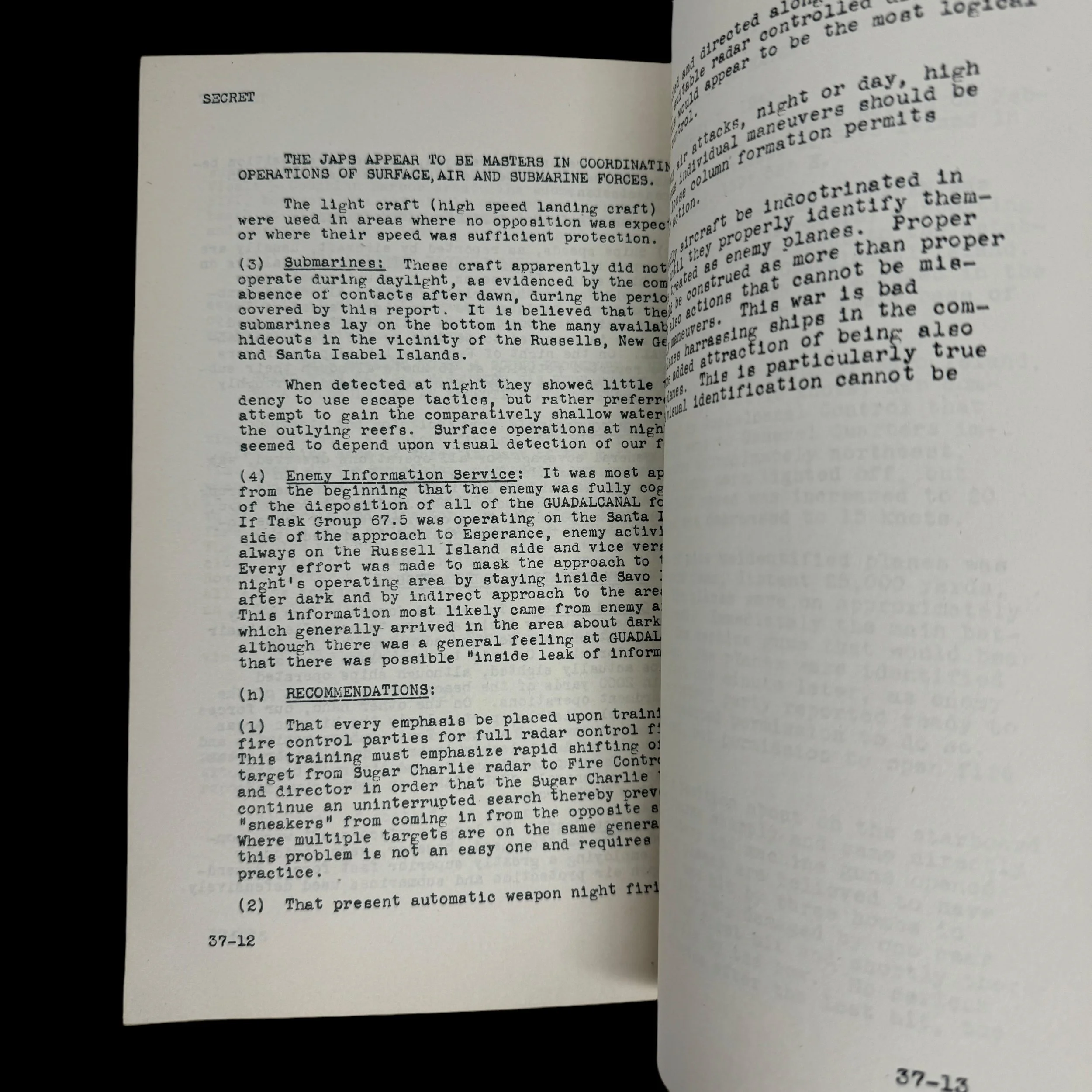
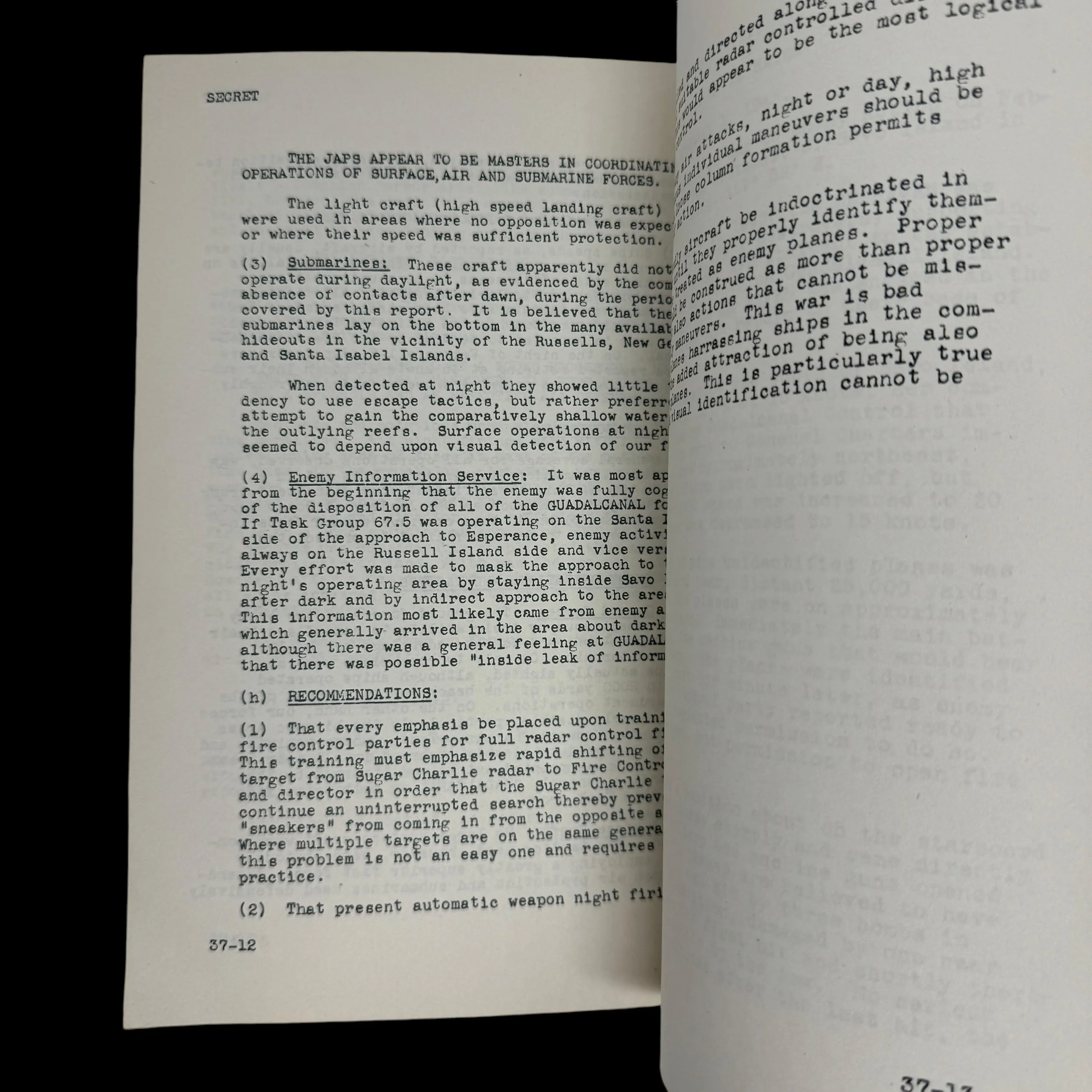
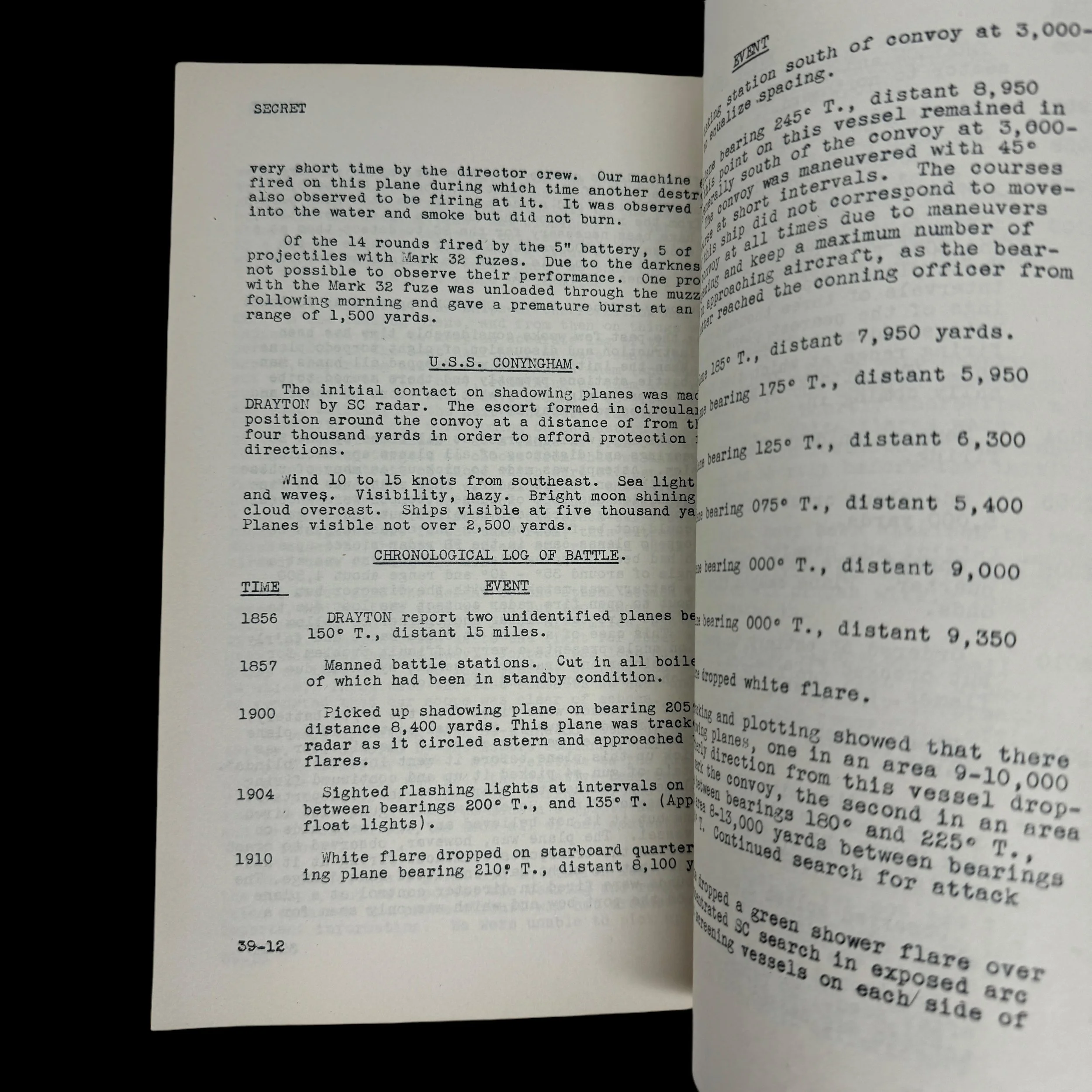
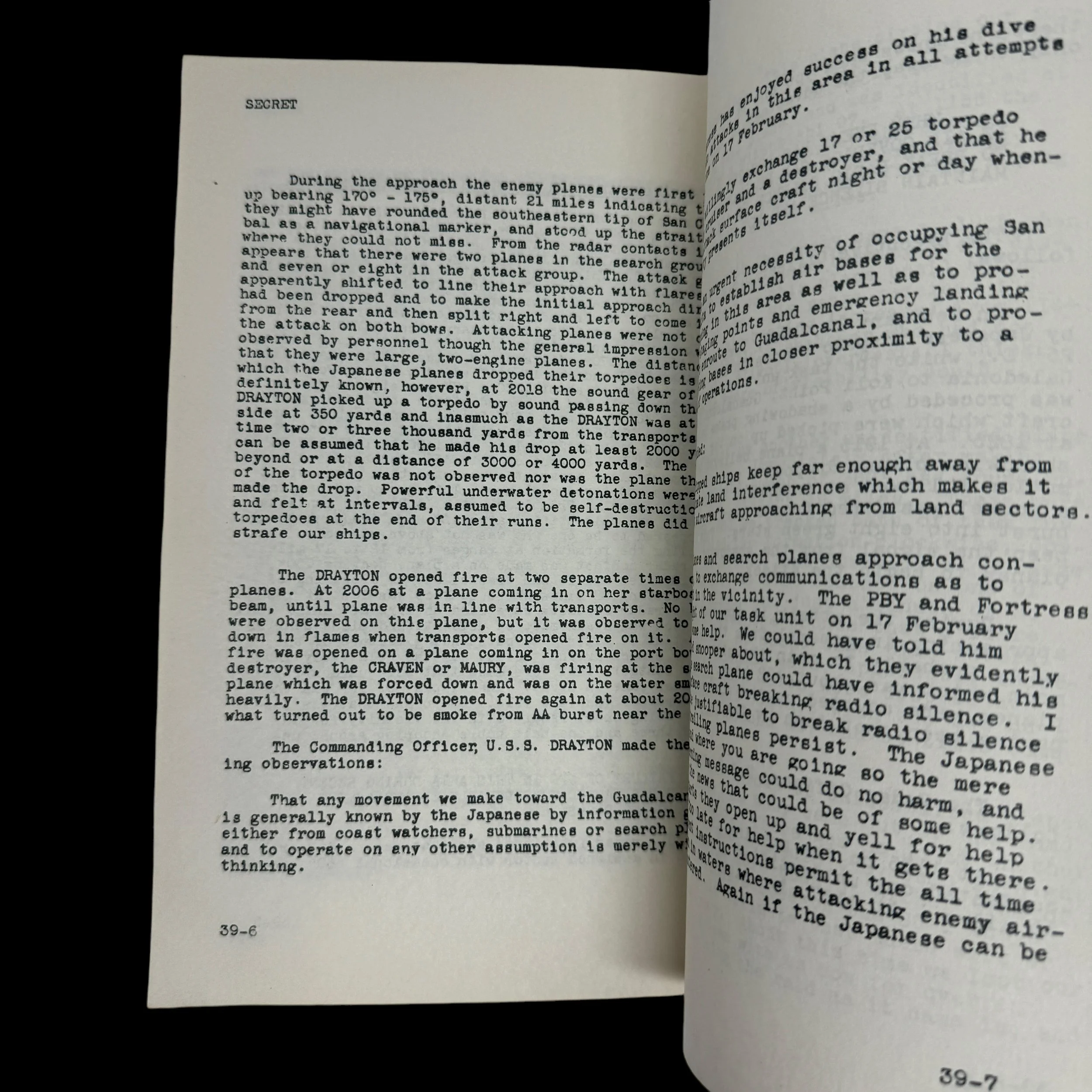
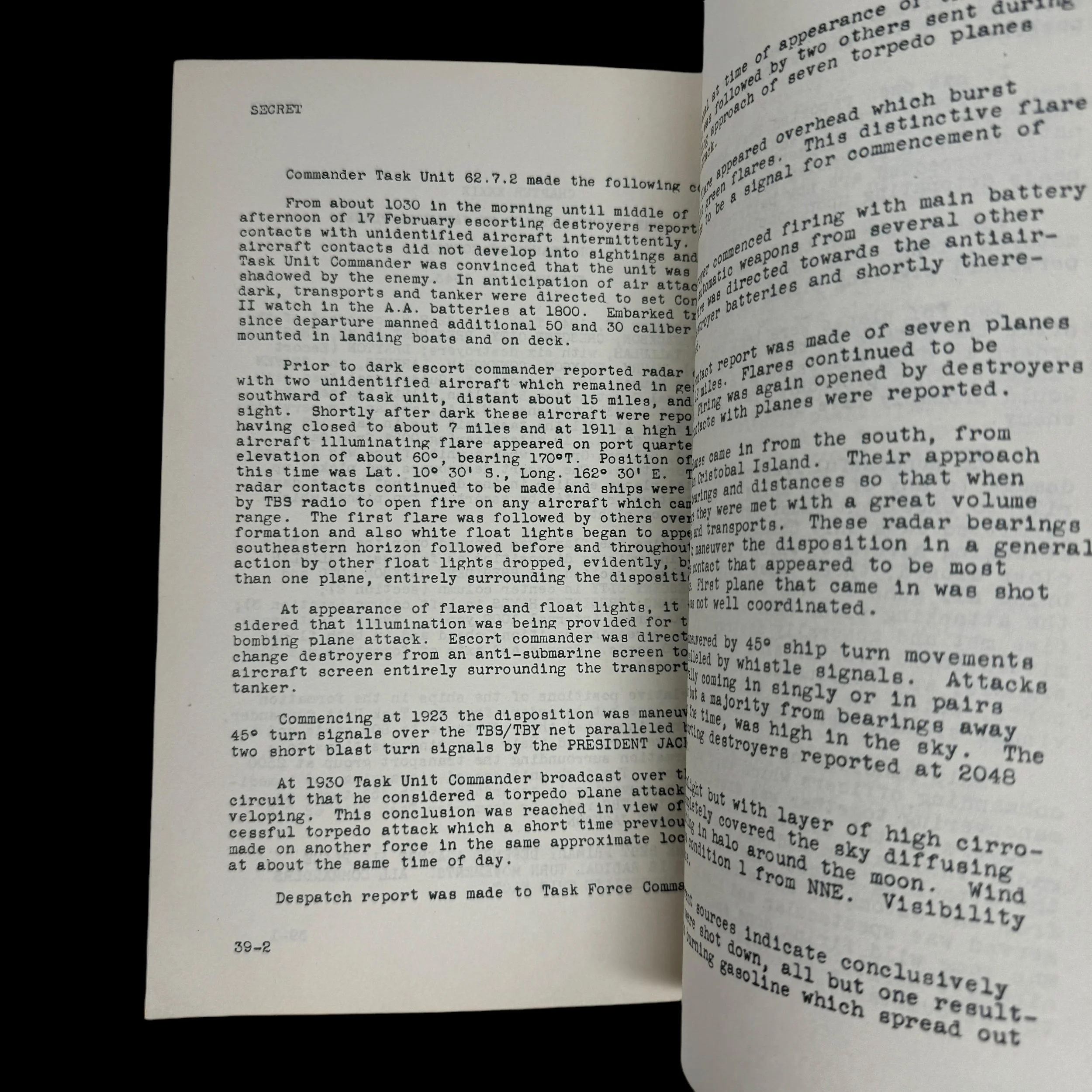
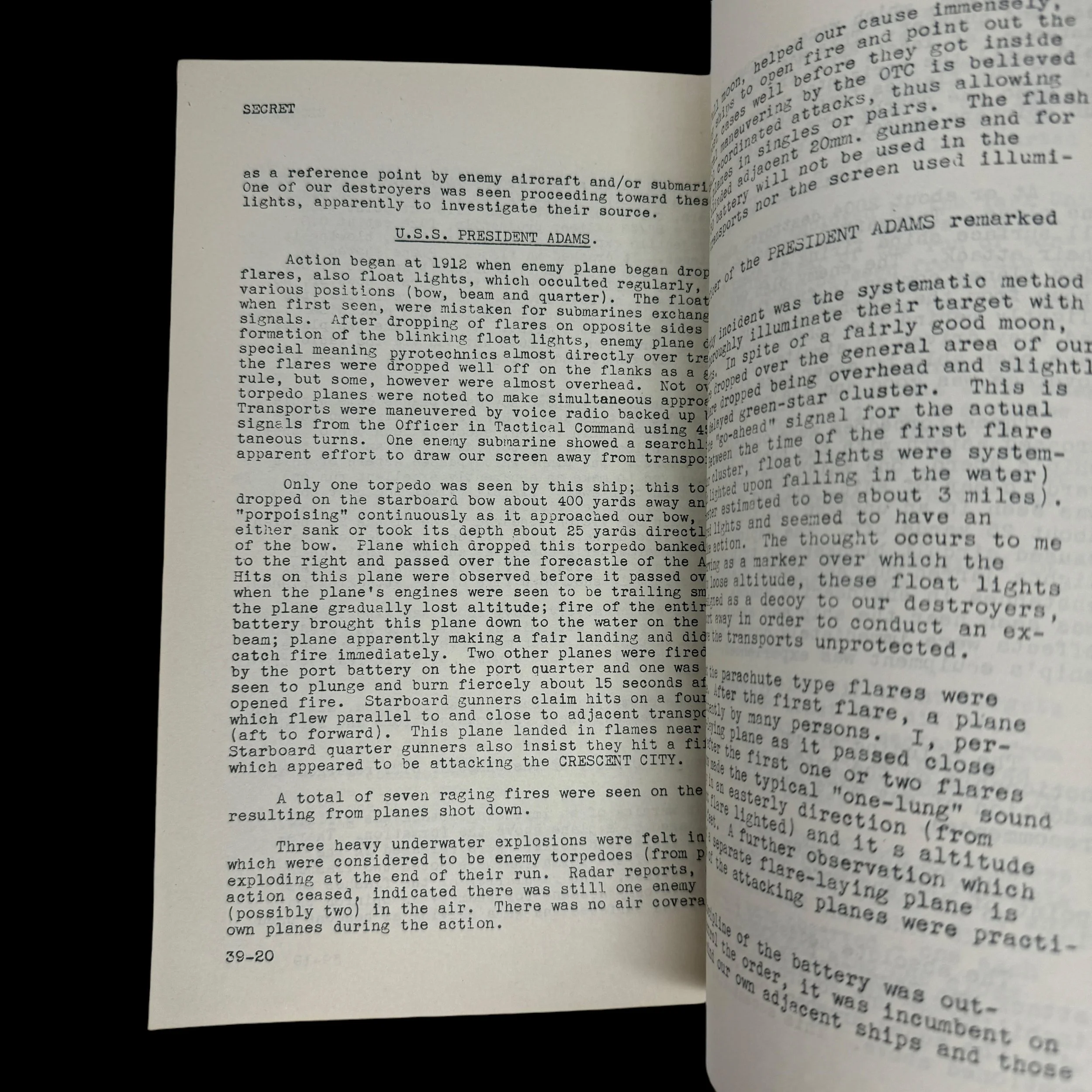
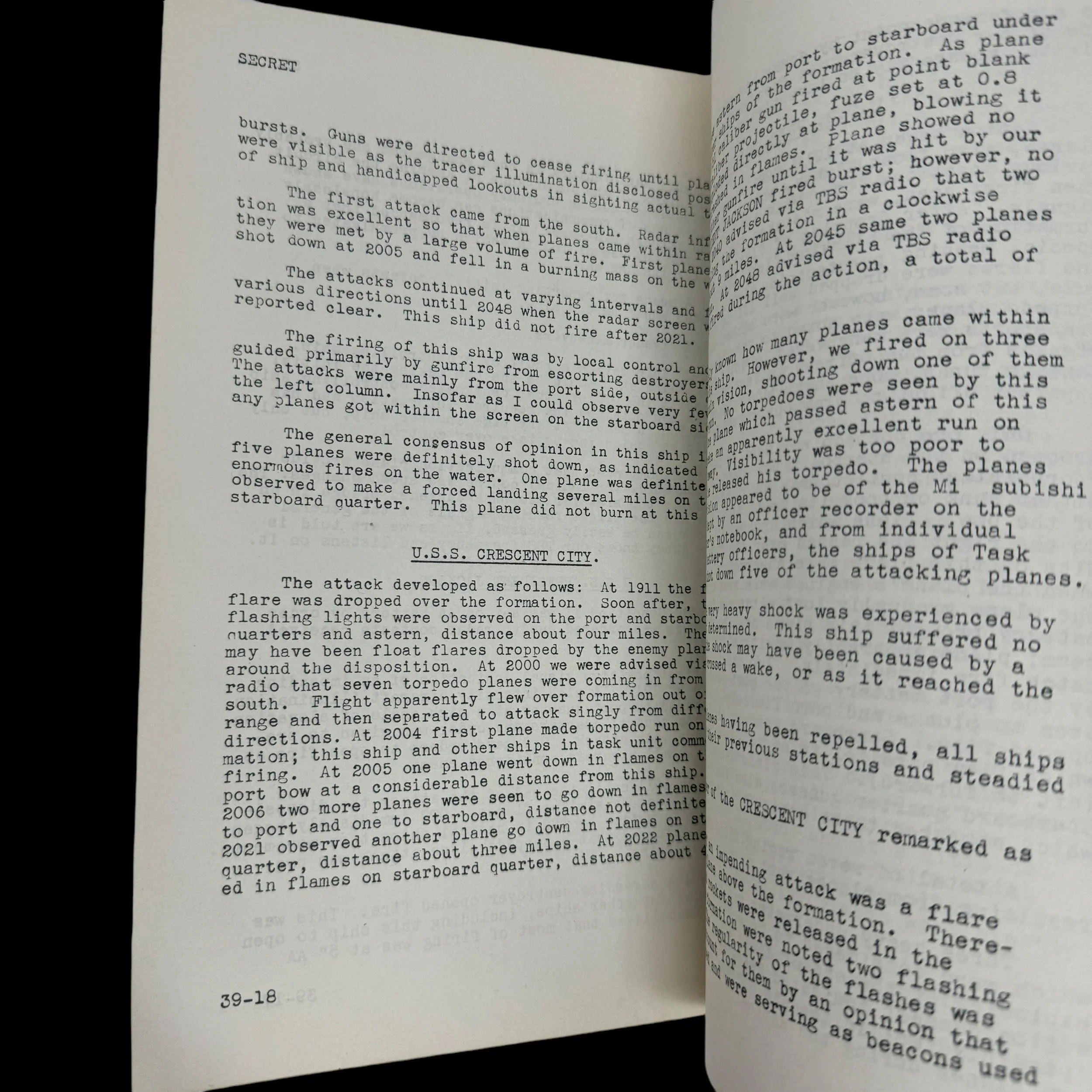
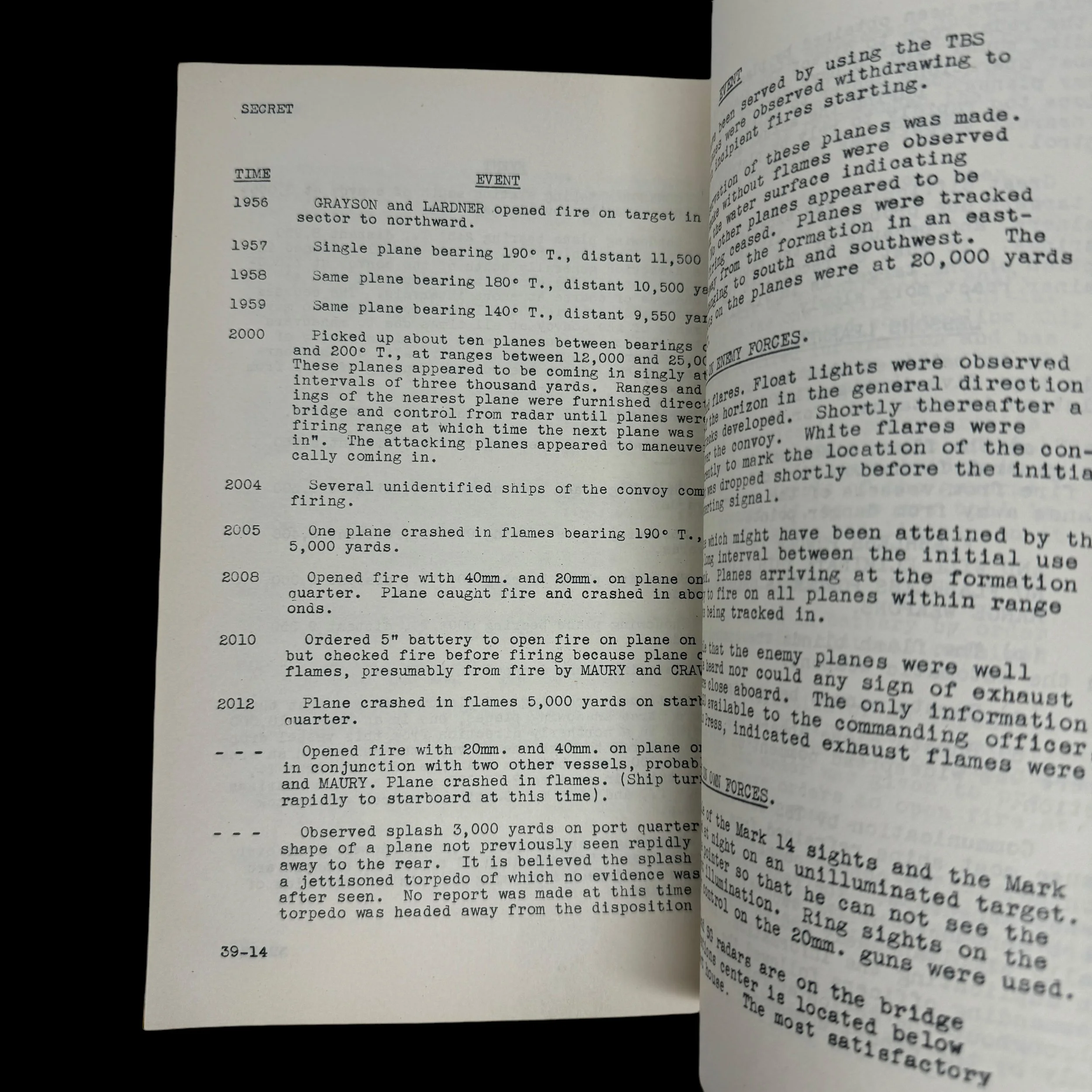
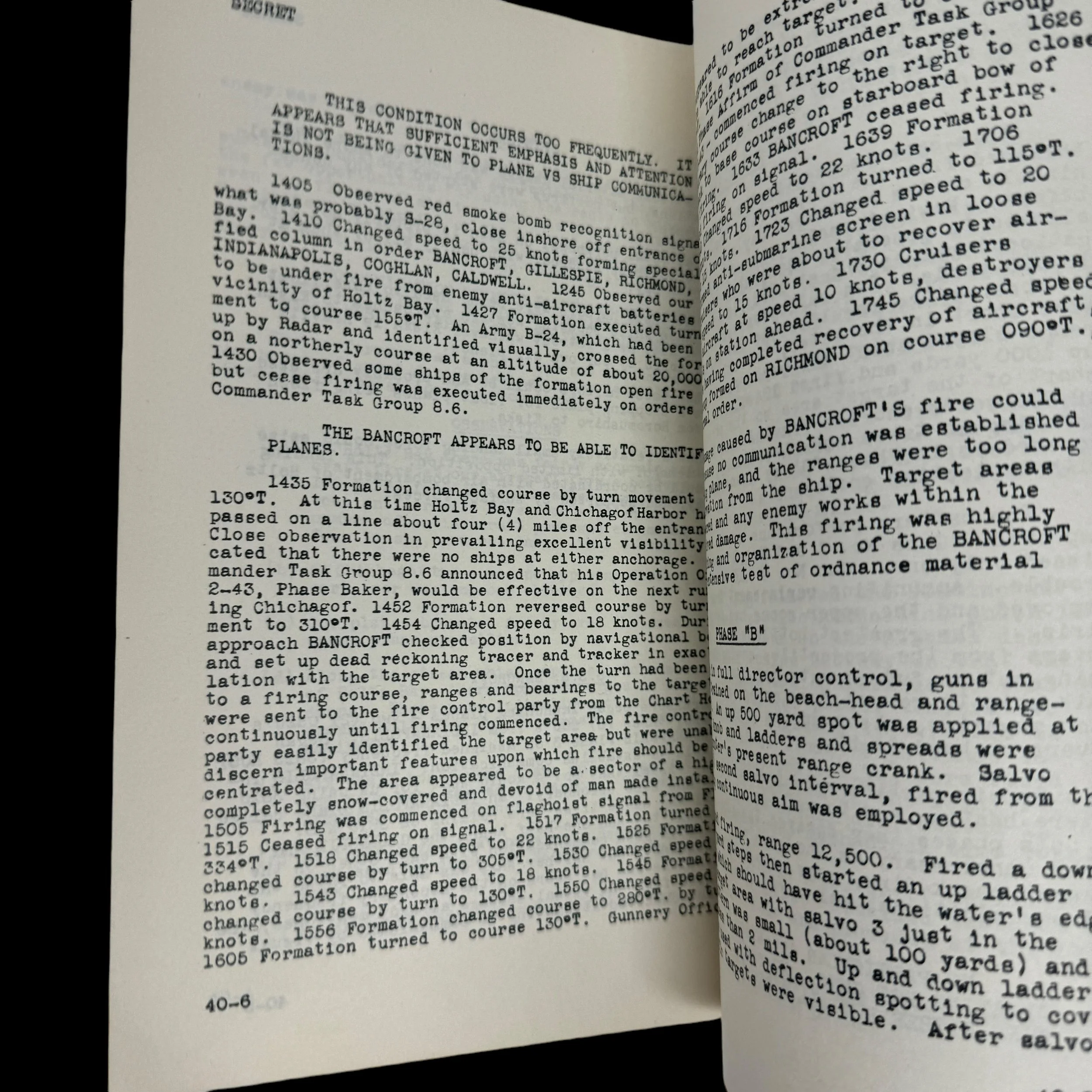
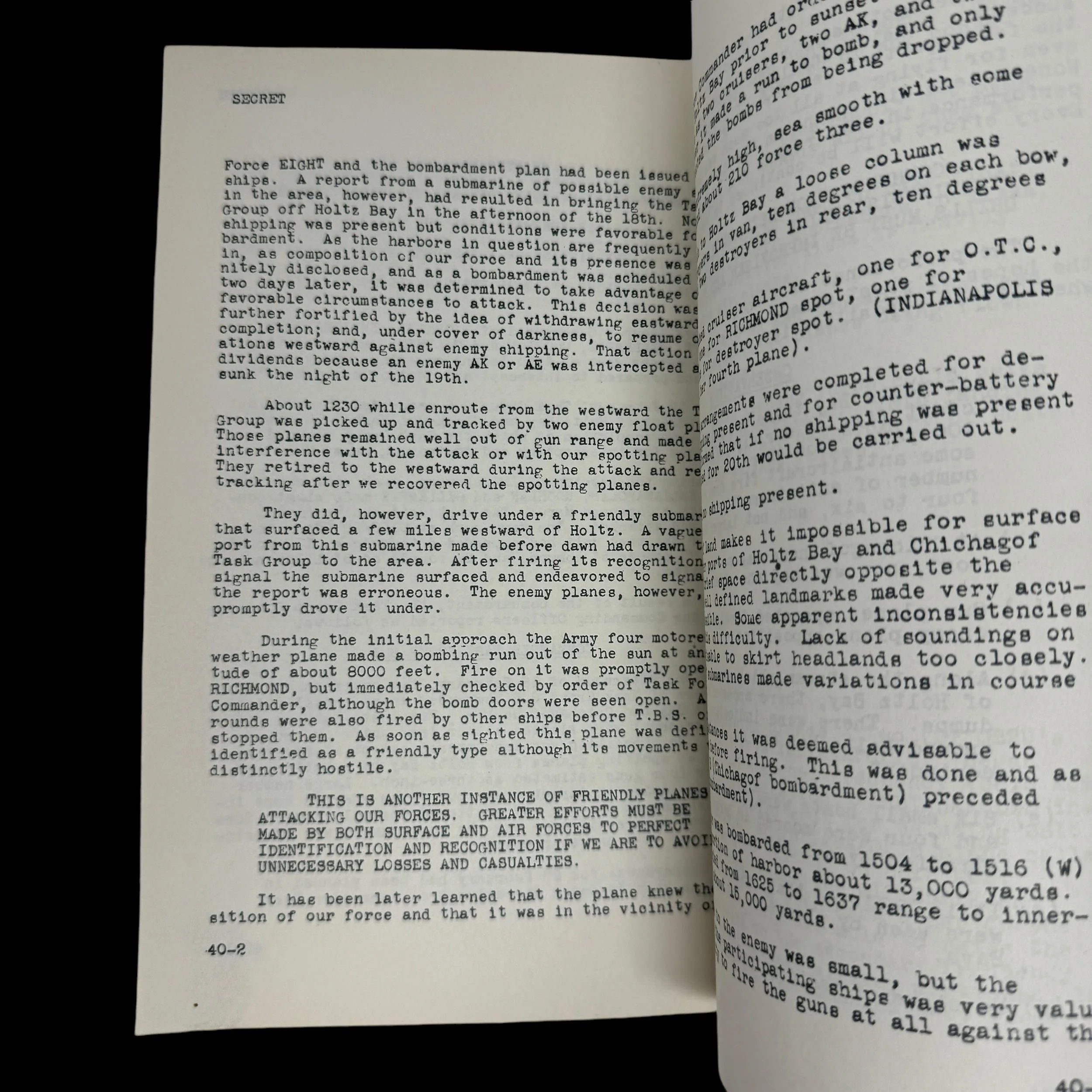


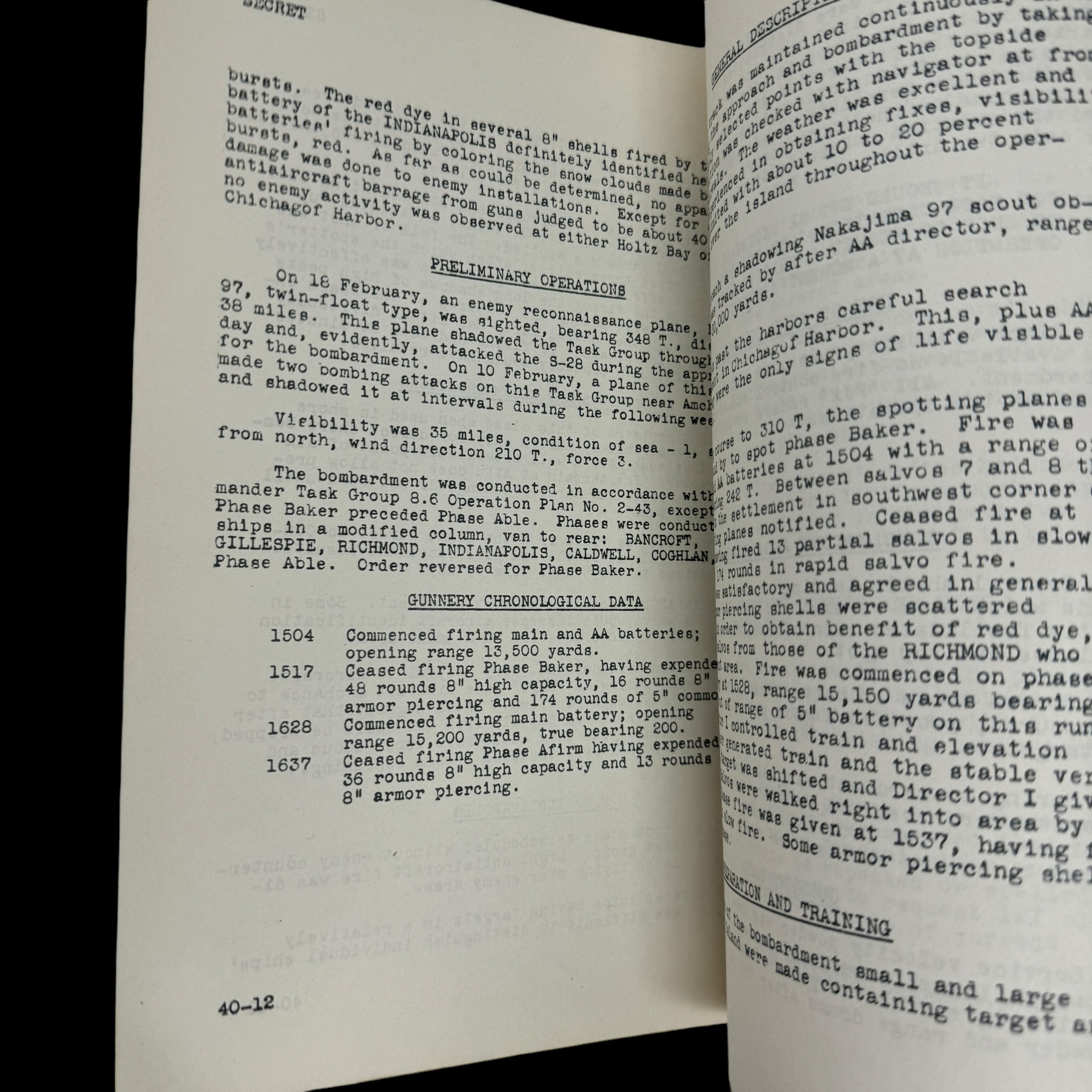
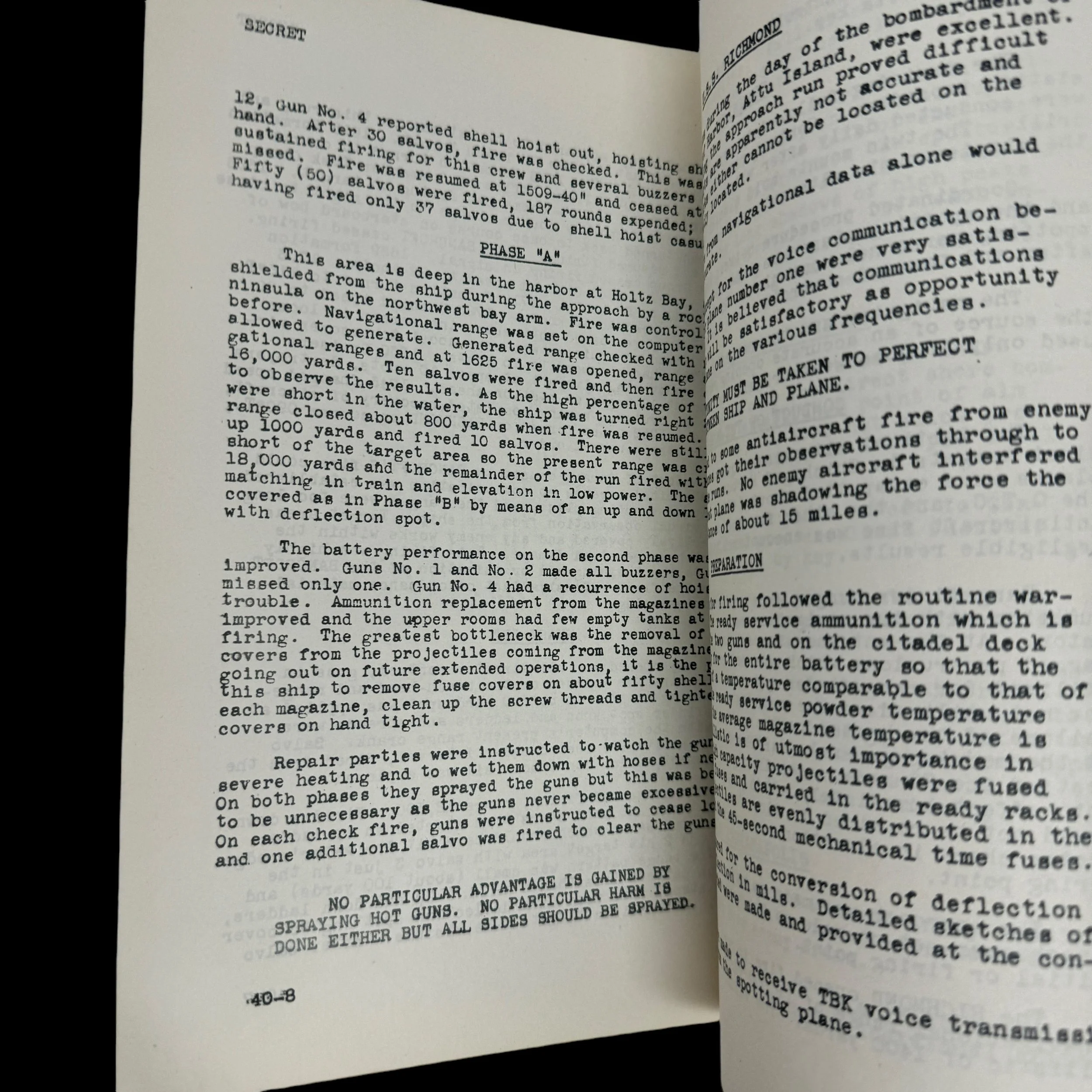
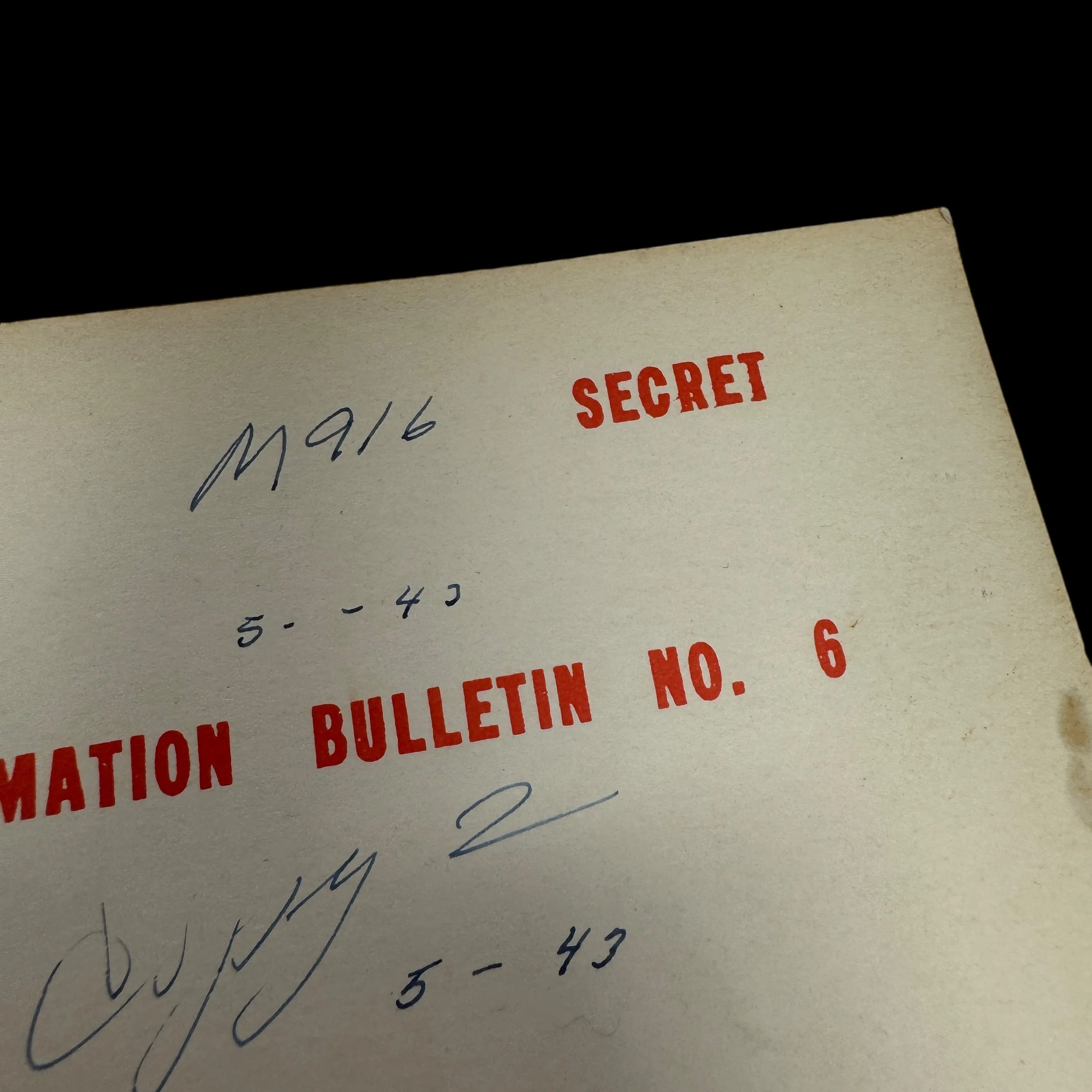
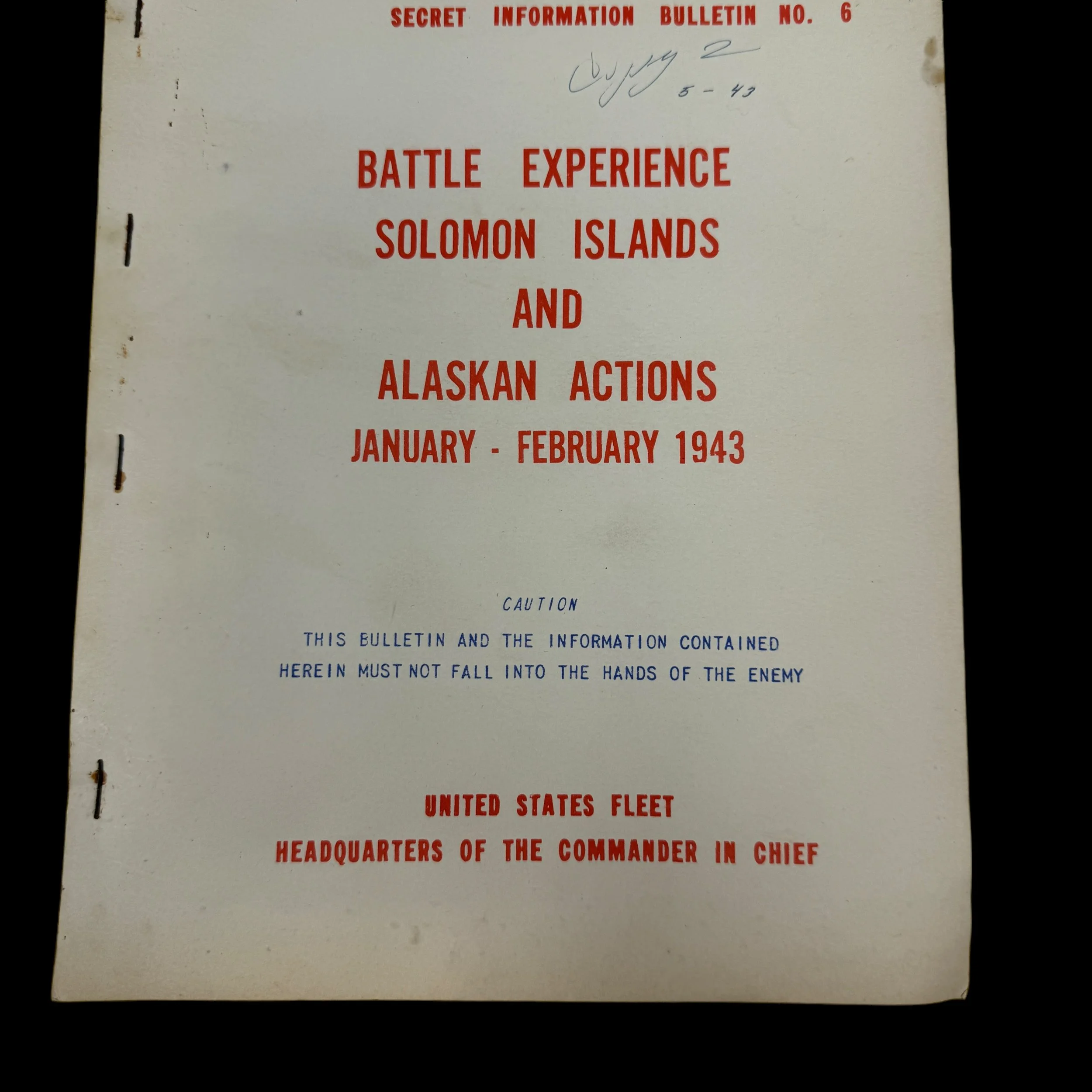

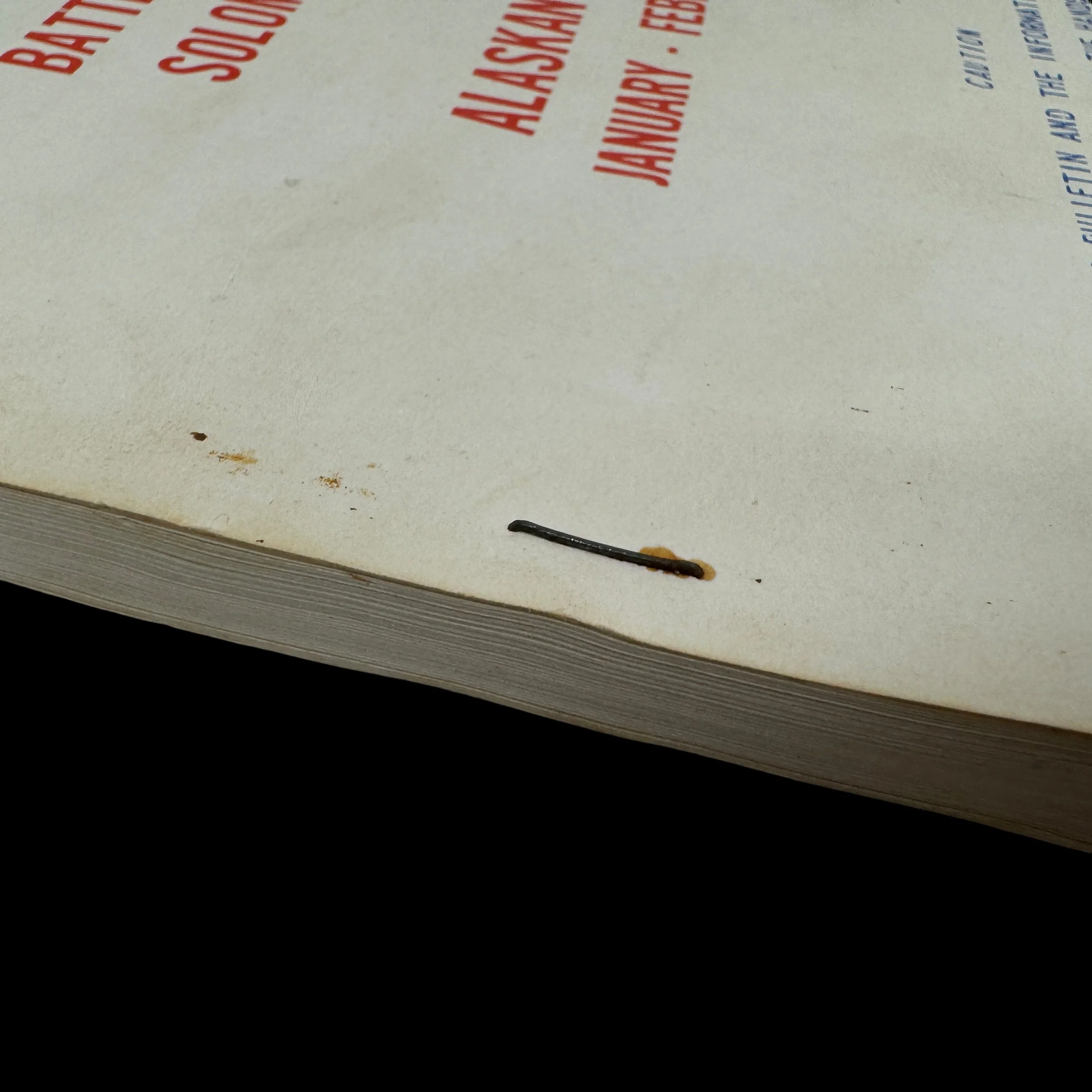
EXTREMELY RARE! WWII SECRET 1943 Solomon Islands & Aleutian Islands Headquarters of the Commander in Chief Military Intelligence Report
Comes with a hand-signed C.O.A.
*This SECRET intelligence report contains a detailed overview of the intense naval and air combat in the Solomon Islands and Alaska from January to February 1943, focusing on key task force operations. In the Solomon Islands, Task Force 67 defended Allied convoys, but Japanese night torpedo attacks led to the loss of significant vessels, including USS Chicago and USS DeHaven. Despite these setbacks, the task force remained pivotal in Allied operations. Japanese planes also targeted transport convoys, exploiting their night attack superiority. Meanwhile, in the Aleutian Islands, U.S. forces bombarded Japanese positions in Holtz Bay and sank supply vessels, weakening the Japanese hold on the region. These actions were critical in disrupting Japanese efforts and setting the stage for future Allied victories.
This extraordinarily rare, museum-grade World War II artifact is an original "SECRET" marked "Battle Experience - Informational Bulletin," meticulously produced by the United States Fleet under the Headquarters of the Commander in Chief. During WWII, the operations and strategic planning of the U.S. Navy were directed by two prominent commanders: Admiral Chester W. Nimitz, Commander in Chief of the United States Pacific Fleet (CINCPAC), and Admiral Ernest J. King, Commander in Chief of the United States Fleet (CINCUS). Their combined leadership played a pivotal role in the Allied victory.
This highly classified and intricately detailed bulletin, issued by the Headquarters of the Commander in Chief, contains secret military maps, intelligence reports, tactical movements, and a unique compilation of "battle experiences." These experiences were drawn from war diaries and battle reports submitted by various commanders and ships engaged in key operations. The bulletin was printed in extremely limited quantities, strictly for the eyes of high-ranking military officials, including Officers and Generals.
The rarity of this document is underscored by the directive on its first page, which states: "Information must not fall into enemy hands - when no longer required they shall be destroyed by burning. No report of destruction need be submitted." As a result, only a handful of these original "SECRET" "Battle Experience - Informational Bulletins" are believed to still exist.
This particular "SECRET INFORMATION BULLETIN NO. 6" is a remarkable example, titled "Battle Experience - Solomon Islands & Alaskan Actions January - February 1943 ." It offers an unparalleled glimpse into the strategic operations and experiences of the United States Navy during some of the most crucial campaigns of the Pacific Theater.
The Battle Experience in the Solomon Islands and Alaska: January - February 1943
The early months of 1943 marked a critical phase in the Pacific Theater of World War II, with fierce combat occurring across the Solomon Islands and Alaska's Aleutian Islands. January and February of that year were particularly intense, with significant naval and air engagements shaping the outcome of these campaigns. This period highlighted the importance of task force operations, as both sides sought to gain strategic control over the Pacific and halt the expansion of their enemy’s influence. The operations during these months were defined by night torpedo battles, Japanese air raids, and the sinking of both Allied and Japanese vessels, including the USS Chicago and USS DeHaven in the Solomon Islands and Japanese supply vessels near Alaska.
Task Force Operations in the Solomon Islands: Task Force 67 and USS Chicago
The Solomon Islands campaign had been raging since mid-1942, as both the Allies and the Japanese Empire sought to control the islands to secure key supply routes and strategic airfields. By early 1943, the Allies, particularly the United States, had gained some momentum, but the situation was far from stable. Task Force 67, commanded by Rear Admiral Robert C. Giffen, was a pivotal force in these operations, tasked with maintaining control over the vital waters around Guadalcanal and other islands. Their mission involved protecting supply convoys and providing naval support to ground forces engaged in the brutal battle for the island.
One of the most significant events during this period was the loss of the USS Chicago (CA-29), a heavy cruiser that had played a crucial role in many Pacific engagements. On the night of January 29-30, 1943, as part of Task Force 18 (which was temporarily under Giffen’s command), USS Chicago was escorting a convoy south of Guadalcanal. In what came to be known as the Battle of Rennell Island, the force was attacked by Japanese bombers, employing advanced night-time torpedo tactics. Despite strong anti-aircraft defense from Task Force 67, USS Chicago was struck by two torpedoes, severely damaging her. The next day, as efforts to tow her to safety were underway, Japanese planes returned, launching another attack that resulted in the Chicago's sinking.
The loss of the USS Chicago underscored the effectiveness of Japanese night attacks and exposed the vulnerabilities of Allied ships, even those that were well-armed. However, despite this setback, Task Force 67 continued to play a vital role in defending Allied operations in the Solomon Islands.
The Loss of USS DeHaven and Japanese Torpedo Attacks
Task Group 67.5, a subunit of Task Force 67, was directly involved in escorting troop transports and supporting ground operations during these critical months. As part of this mission, the USS DeHaven (DD-469), a Fletcher-class destroyer, was tasked with escorting a convoy to Guadalcanal. On February 1, 1943, as this convoy approached its destination, Japanese planes launched a coordinated attack on the transports and their escorts.
The Japanese planes, including bombers and torpedo planes, managed to penetrate the convoy’s defensive screen. The USS DeHaven engaged the attackers but was ultimately overwhelmed. Struck by three bombs, DeHaven sank quickly, taking more than 150 of her crew with her. The loss of the DeHaven further demonstrated the dangers faced by Allied ships in the Solomon Islands, where the Japanese retained significant air superiority despite the losses they had suffered earlier in the campaign.
Night Torpedo Attacks on Transport Convoys
Night-time combat had become a hallmark of the Solomon Islands campaign, with both the Japanese and Allied forces frequently clashing under the cover of darkness. The Japanese Navy, in particular, excelled in night torpedo attacks, using fast destroyers and bombers to harass Allied convoys and naval forces. One of the key targets of these attacks was the constant stream of transport convoys bringing reinforcements and supplies to Guadalcanal.
In late January 1943, one such convoy came under a determined Japanese assault. Task Force 67 was engaged in defending these transports, but the Japanese struck hard, using their superior knowledge of night combat tactics and their deadly Long Lance torpedoes. These nighttime torpedo engagements often left the Allied forces scrambling to defend themselves, with many ships being damaged or sunk before they could even locate the attackers.
The Aleutian Islands Campaign: The Bombardment of Holtz Bay and Sinking of Japanese Maru
While the Solomon Islands were a critical battleground in the South Pacific, the Aleutian Islands in Alaska were another theater of war that saw fierce combat during early 1943. The Japanese had occupied several islands in the Aleutian chain in mid-1942, including Kiska and Attu, and the United States was determined to expel them.
One of the key operations in the Aleutians during this period was the bombardment of Holtz Bay on Attu Island. In January 1943, U.S. forces, supported by elements of the Pacific Fleet, launched a series of naval bombardments against Japanese positions on the island. This was part of a broader strategy to weaken Japanese defenses in preparation for a full-scale assault to reclaim the islands later in the year.
The sinking of Japanese supply vessels, or "Maru," also played a significant role in disrupting Japanese efforts in the Aleutians. On February 3, 1943, U.S. naval forces intercepted and sank several Japanese supply ships, further straining Japan’s ability to reinforce and resupply their isolated garrisons in the Aleutians. These actions, combined with the naval bombardments, weakened the Japanese hold on the islands and set the stage for the eventual liberation of Attu and Kiska in mid-1943.
The period from January to February 1943 was marked by intense naval and air combat in both the Solomon Islands and Alaska. In the Solomon Islands, Task Force 67 played a crucial role in defending Allied convoys and providing naval support, but the loss of USS Chicago and USS DeHaven demonstrated the continued potency of Japanese air and naval forces. Night-time torpedo attacks became a defining feature of the campaign, as the Japanese excelled in these tactics, causing significant damage to Allied shipping. Meanwhile, in the Aleutian Islands, the U.S. Navy’s bombardment of Japanese positions and the sinking of Japanese supply vessels helped to weaken the Japanese hold on the region. Together, these operations underscored the importance of naval power in the Pacific Theater and the fierce, often desperate, nature of the fighting during these critical months of World War II.